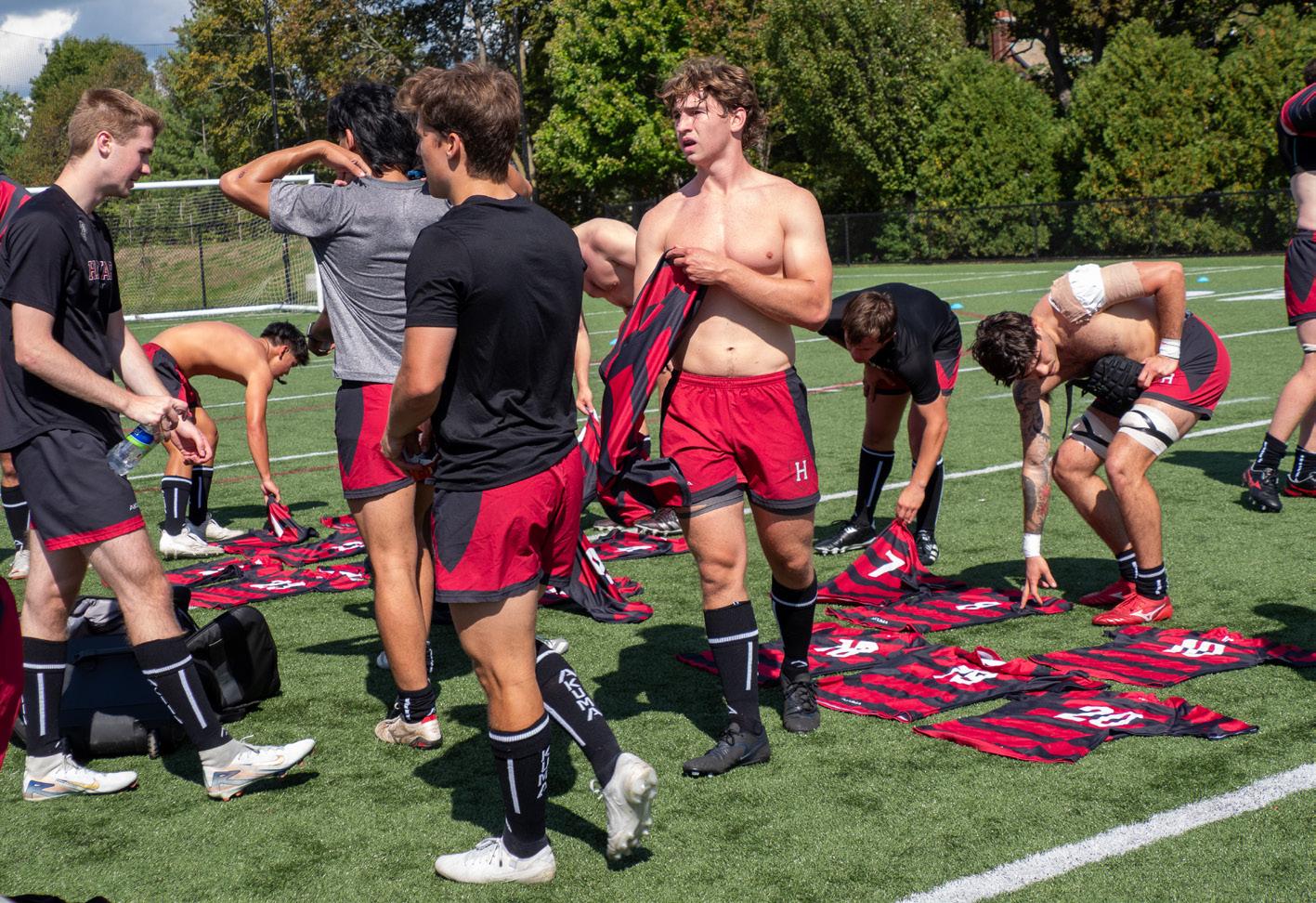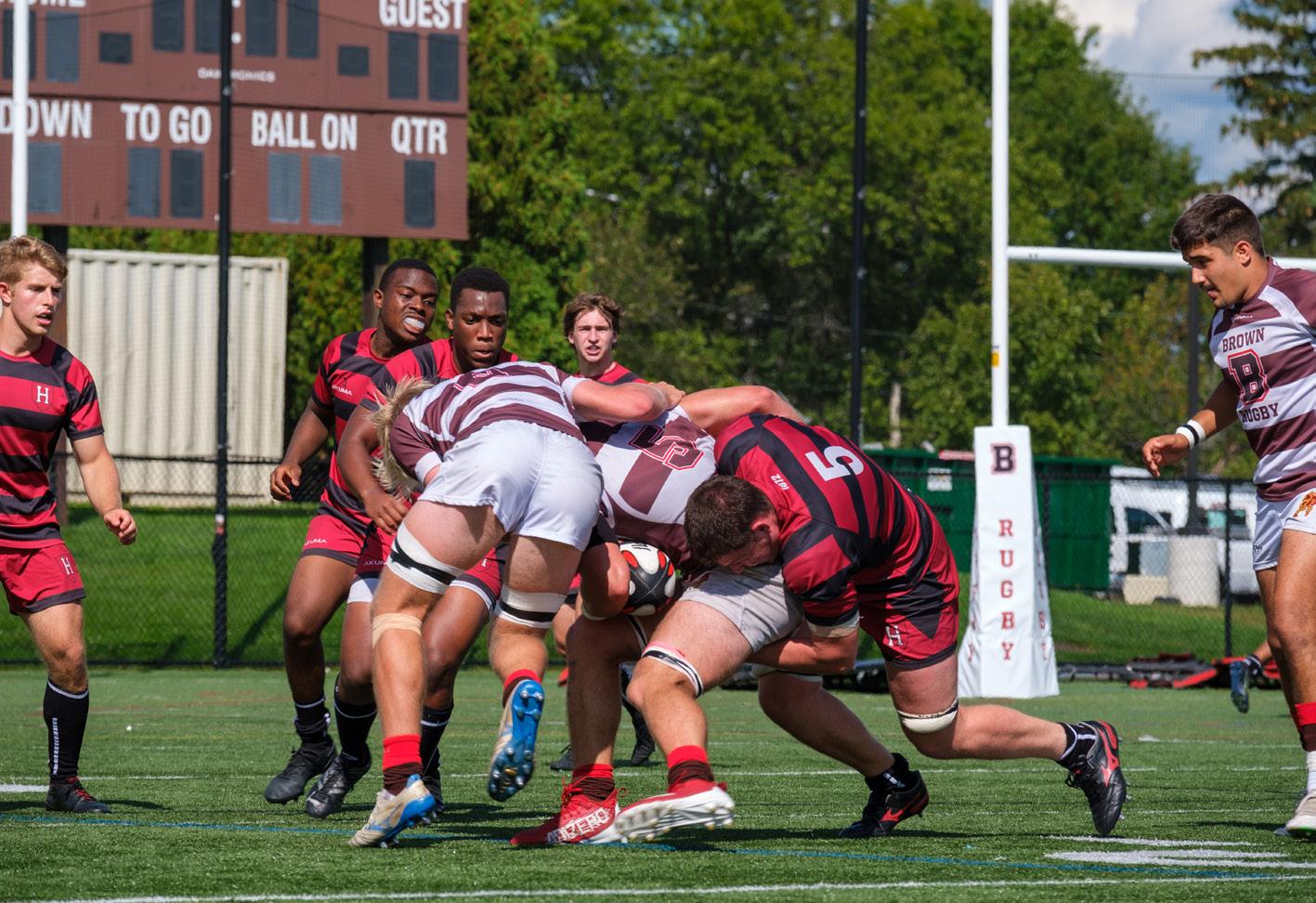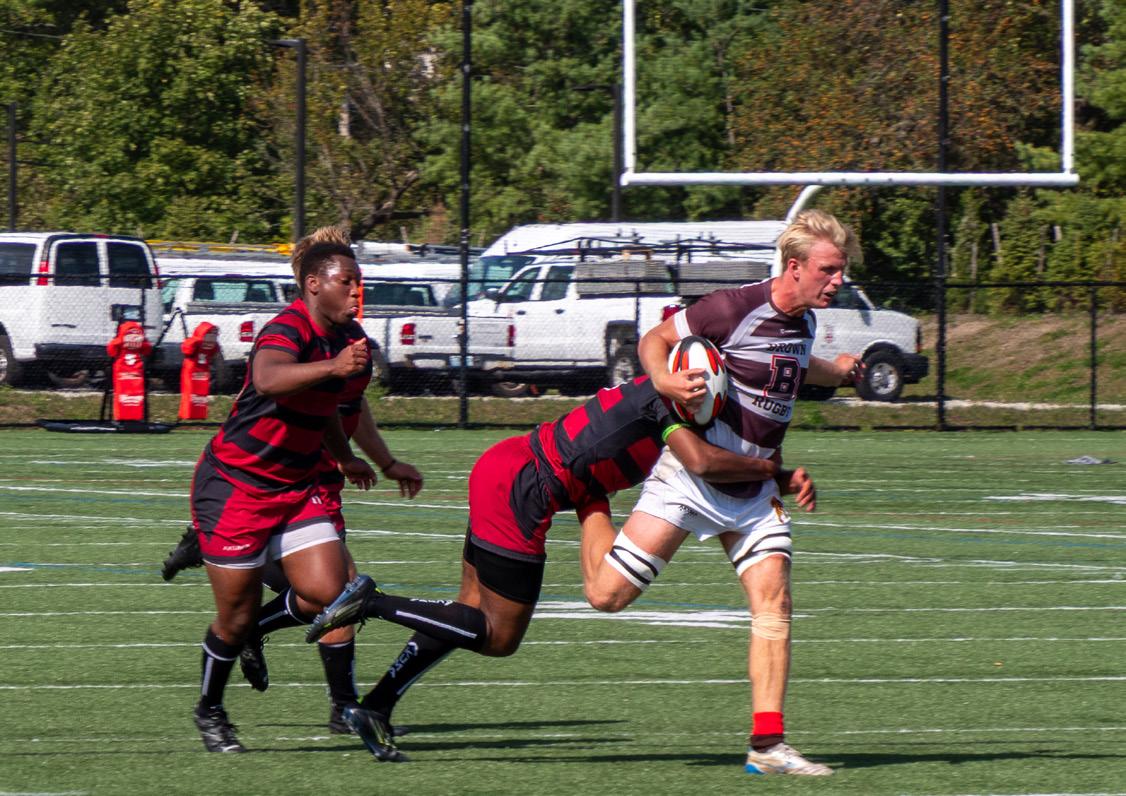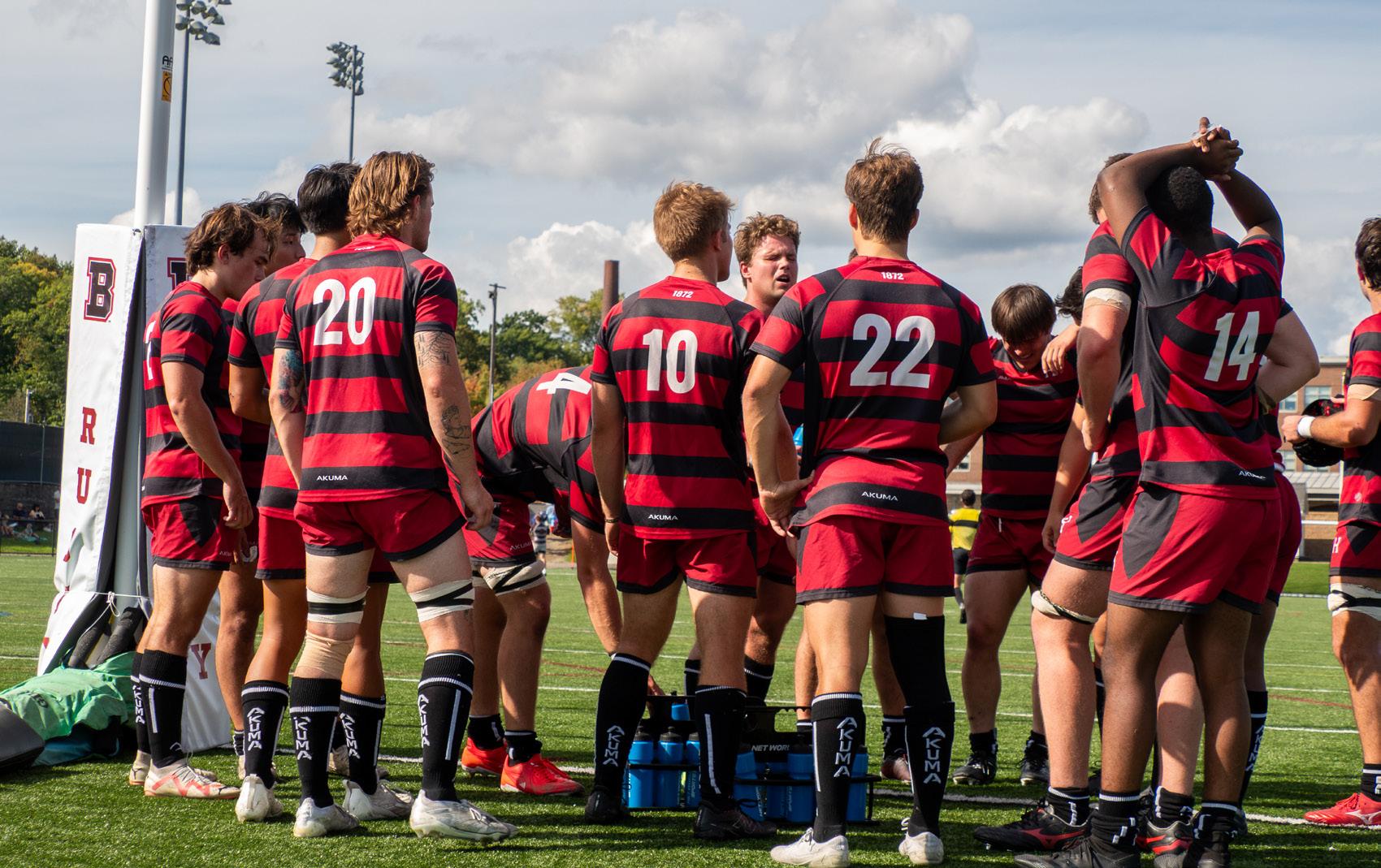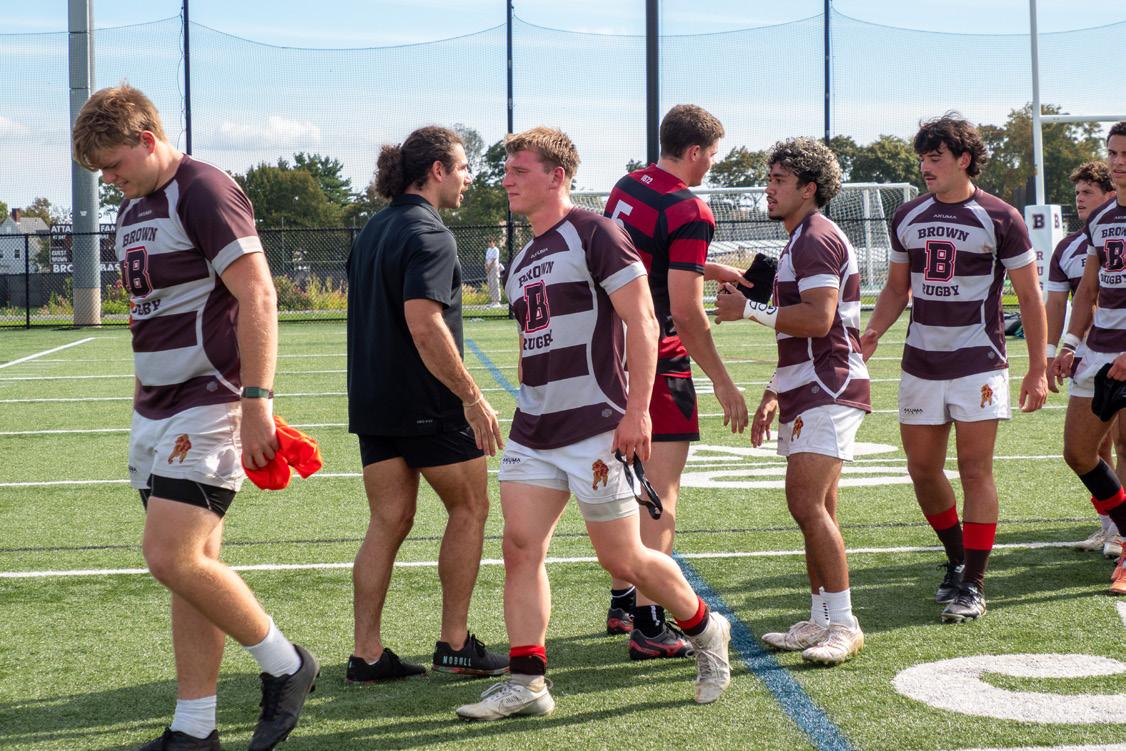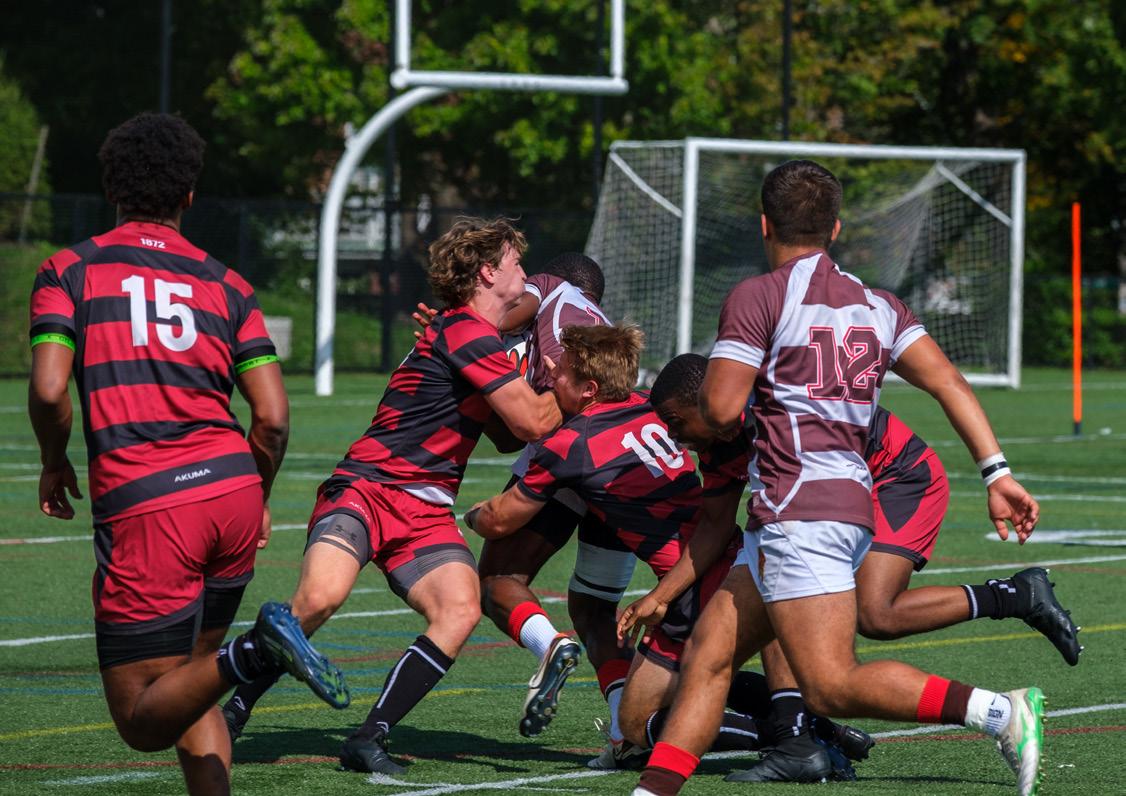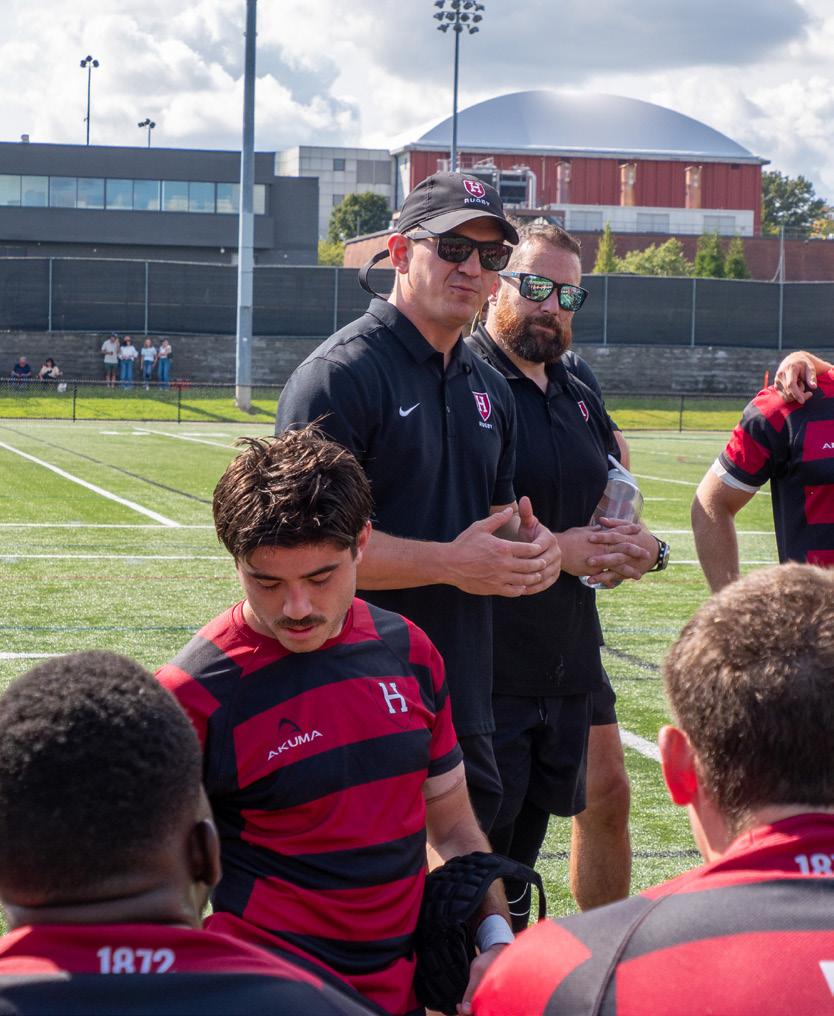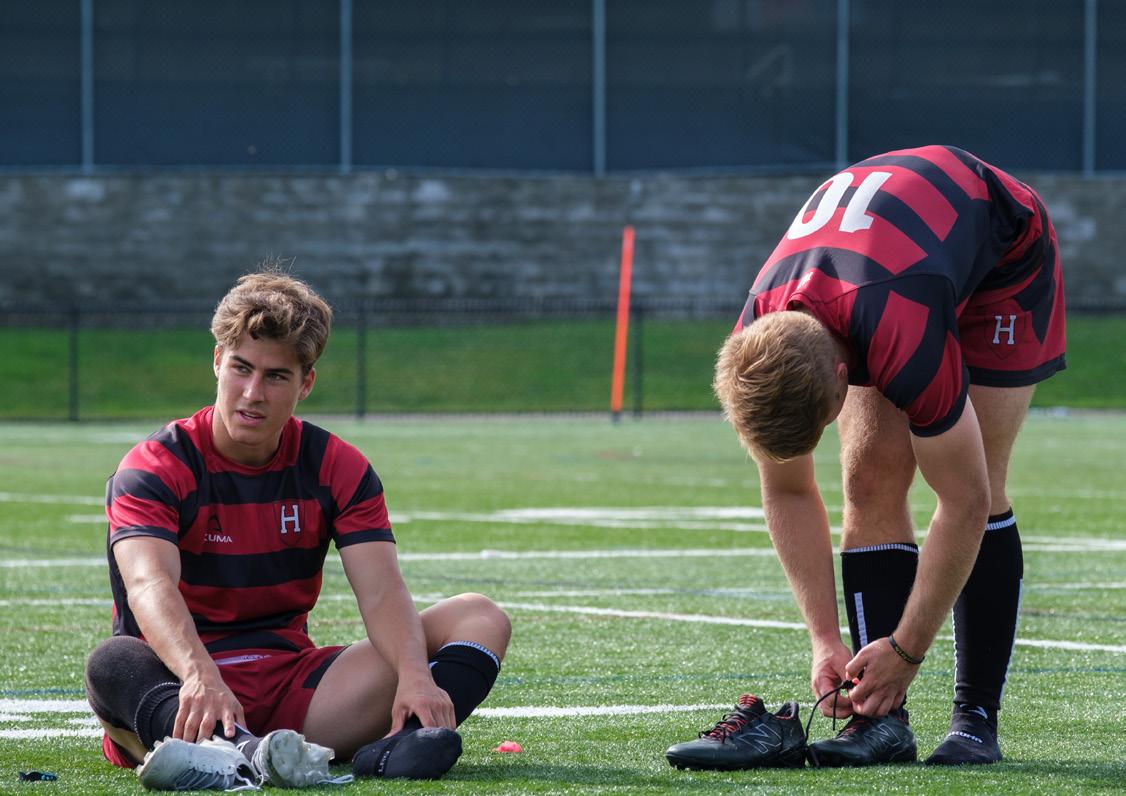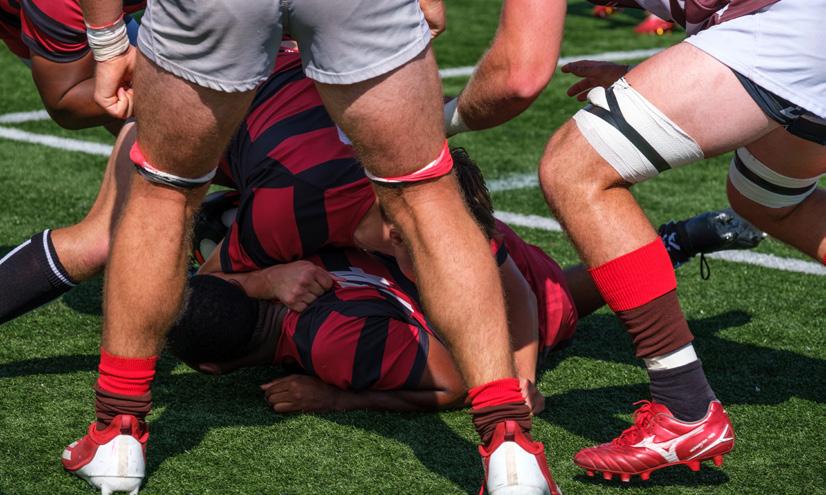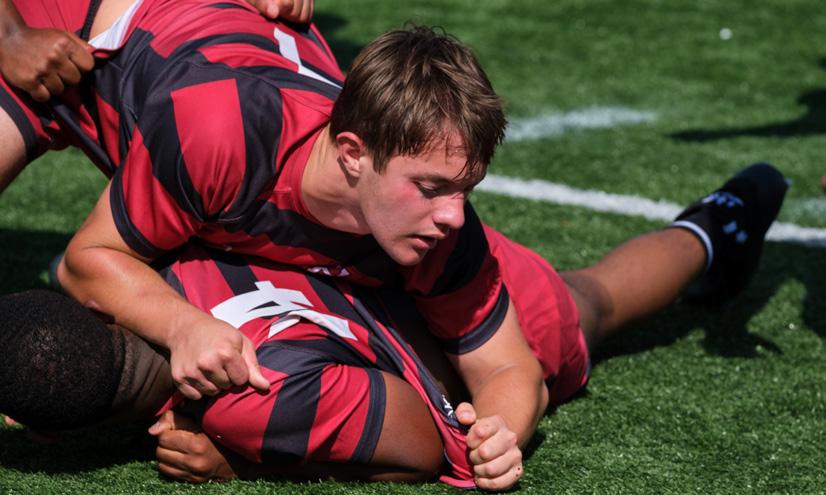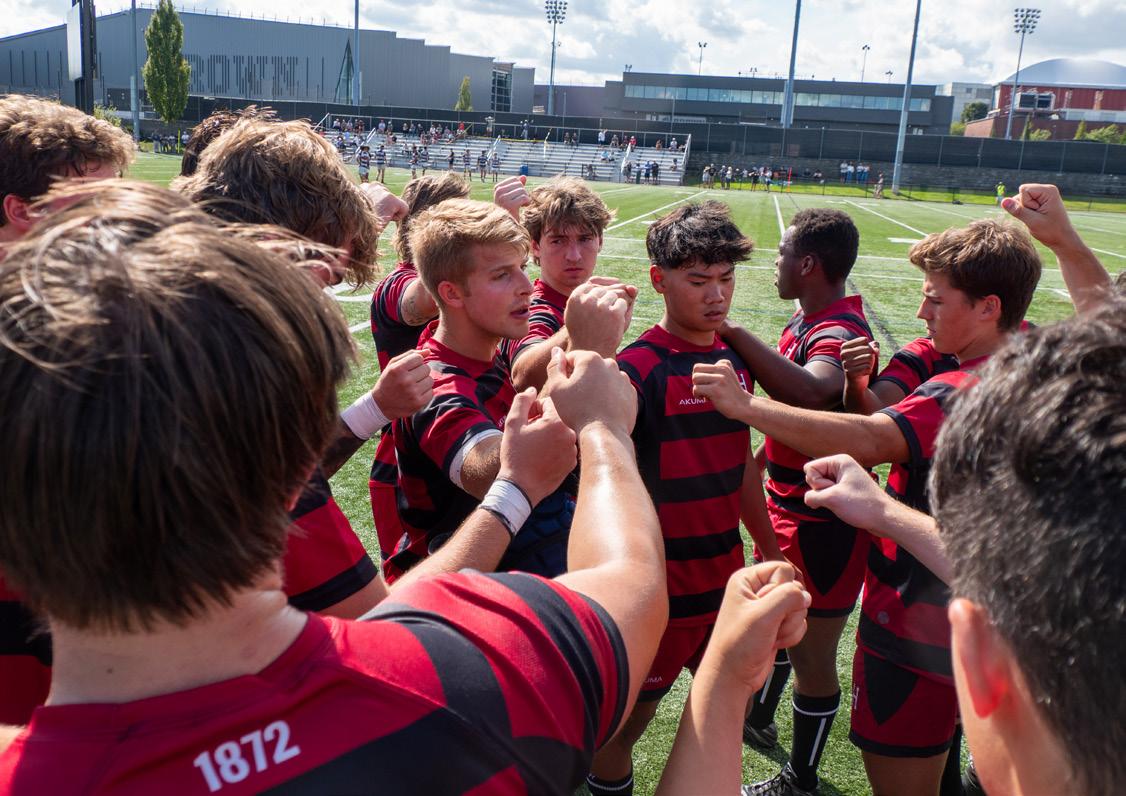The Harvard Crimson
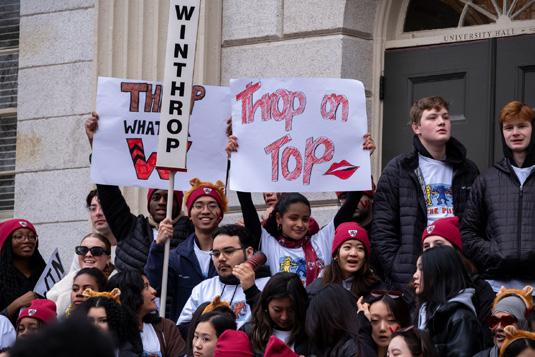




PUSHED BACK. Harvard College will hold Housing Day on the Friday following spring break in 2026 — more than a week past the traditional date on the Thursday before break.
OP-ED. Philosophy professor Bernhard Nickel, a green card holder, explains why he testified in the Harvard AAUP’s lawsuit against the Trump administration’s targeting of internation
al students and faculty for pro-Palestine speech.
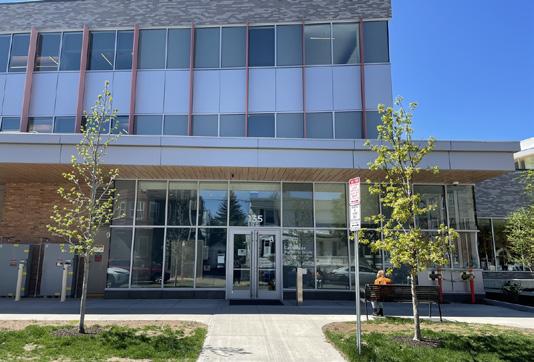
students’ scores on the Massachusetts Comprehensive Assessment System exam improved, but achievement gap across racial and socioeconomic lines widened from the previous year.
SCHOOL. A Massachusetts court allowed lawsuits against Harvard over a former morgue manager’s trafficking


In his first nine months as Secretary of Defense, Pete B. Hegseth has railed against “woke garbage” and purged department materials of any mention of diversity, equity, and inclusion.
But in 2013, as a Harvard Kennedy School masters student, Hegseth advocated for the creation of a public high school in Minnesota that would “emphasize equity” and prioritize a “diverse student body.”
A 47-page policy brief written by Hegseth, obtained by The Crimson and first reported by the Boston Globe, calls for the creation of a public, selective STEM high school in Minnesota — with the broader goal of making the United States competitive in the international technology race. In his recommendations for the
school, Hegseth called for admitting students by “geographic quotas” — allocating a certain number of spots to each congressional district — and taking steps to “ensure a balance of race, class, gender, and geography is maintained.”
“Framed correctly, a STEM high school would complement — not compete with — existing efforts to promote women and minorities in STEM,” Hegseth wrote in his paper. “This STEM school would increase equal educational access for Minnesotans of all background.”
But at the helm of the Defense Department, Hegseth vowed to purge diversity, equity, and inclusion efforts across the military. He told Pentagon staff in February that “diversity is our strength” was the “single dumbest phrase in military history.” Since then, he has directed service academies to admit solely on merit, removed diversity, equity, and inclusion content from Pentagon materials, and purged nearly 400
military library books that mentioned DEI.
And last Tuesday, Hegseth changed the military’s physical fitness requirements to hold all service members to the “highest male standard,” he announced in a speech at a Marine Corps base in Virginia.
“If women can make it, excellent,” Hegseth told a crowd of military commanders. “If not, it is what it is. If that means no women qualify for some combat jobs, so be it.”
Pentagon spokesperson Sean Parnell wrote in an emailed statement that there is no daylight between Hegseth’s 2013 paper and his current positions.
“His views from 2013 are consistent with his views now as Secretary of War: meritocracy should reign supreme over woke ideology and DEI,” Parnell wrote.
Before and after his time at HKS, Hegseth has struck a hard-right tone.
As an undergraduate at Princeton University, he wrote for and served as pub -
lisher of The Princeton Tory, where he criticized same-sex marriage and the “gratuitous glorification of diversity.” Later, in his decade at Fox News, Hegseth defended Trump’s baseless allegations of widespread voter fraud in the 2020 election and suggested sending in troops to quell Black Lives Matter protests in Seattle. The Kennedy School paper took a decidedly different tack.
In his paper, Hegseth also lauded Democrat Melissa A. Hortman, describing the Minnesota state representative as the “political champion” of the effort to bolster STEM offerings. While writing the paper, Hegseth interviewed Hortman and exchanged emails with her.
“Most importantly, Rep. Hortman emphasizes – quite correctly – that if a STEM school debate becomes a traditional education battle of left versus
Facemash, a website allowing visitors to rank the attractiveness of Harvard students, briefly returned to campus over the weekend, more than two decades after Facebook founder Mark E. Zuckerberg created the original version.
The site went viral on Sidechat, an anonymous social media platform limited to Harvard undergraduates, on Sunday afternoon before a pair of Harvard juniors exploited its weak security to take it down roughly two hours later.
Though Facemash reappeared around 9 p.m., the site’s creator took it offline and posted a message that it was “down for maintenance” later that evening.
As of this article’s publication, the maintenance message was still posted.
During the hours it was active, Facemash drew condemnation from students who called the idea “absolutely disgusting” and said they were featured without their consent.
Visitors to the website were presented with the pictures of two Harvard affiliates and asked to click on the photo they found “hotter.” Votes were recorded and
used to calculate each person’s attractiveness using Elo scores, a ranking system first used in chess that adjusts a person’s rating based on how their wins and losses compare to the strength of their opponents.
The new Facemash was created by Nirav Rohra, a senior at the University of Texas at Dallas studying computer science. He developed the website as a project for this year’s HackHarvard, an annual undergraduate hackathon that took place this past weekend.
Unlike Zuckerberg’s 2003 site, which used student ID photos scraped from internal Harvard directories, the new Facemash drew photos from public profiles on LinkedIn, a social media platform used for professional connections, and included images of men as well as women. The website branded itself as a “modern, ethical remake of the 2003 viral site.”
Because Rohra’s Facemash pulled profiles from LinkedIn, which is used to network beyond college, the website not only listed undergraduates but also included alumni, graduate students, and the chief of staff to University President Alan M. Garber ’76. The profile of
Harvard will lay off roughly 25 percent of staff represented by its clerical and technical workers’ union at the School of Engineering and Applied Sciences and reorganize several offices in response to mounting funding pressures, according to the union.
SEAS Dean David C. Parkes announced the layoffs, which also affected non-union staff, in an email sent to SEAS staff Thursday morning. He cited an increase in the federal tax on Harvard’s endowment income, an anticipated reduction in federal agencies’ reimbursement rates for indirect research costs, and “changes to the allocation of research funding” as financial pressures.
Parkes did not specify how many SEAS employees were laid off or which offices would be reorganized, and University and SEAS spokespeople declined to offer details on the layoffs.
The Boston Globe reported, citing an unnamed source, that roughly 40 people were laid off.
“Though we have already made a
number of changes, we cannot bridge the budgetary gap without reducing our workforce,” Parkes wrote in his email. “As a result, I have made the difficult decision to lay off members of our staff and significantly restructure several offices.”
The Harvard Union of Clerical and Technical Workers, in an email to its members sent Thursday morning, described the layoffs as the “largest cut at any Harvard school in decades and at least three times deeper than any other Harvard unit is undertaking in this challenging moment.” It remains unclear which other
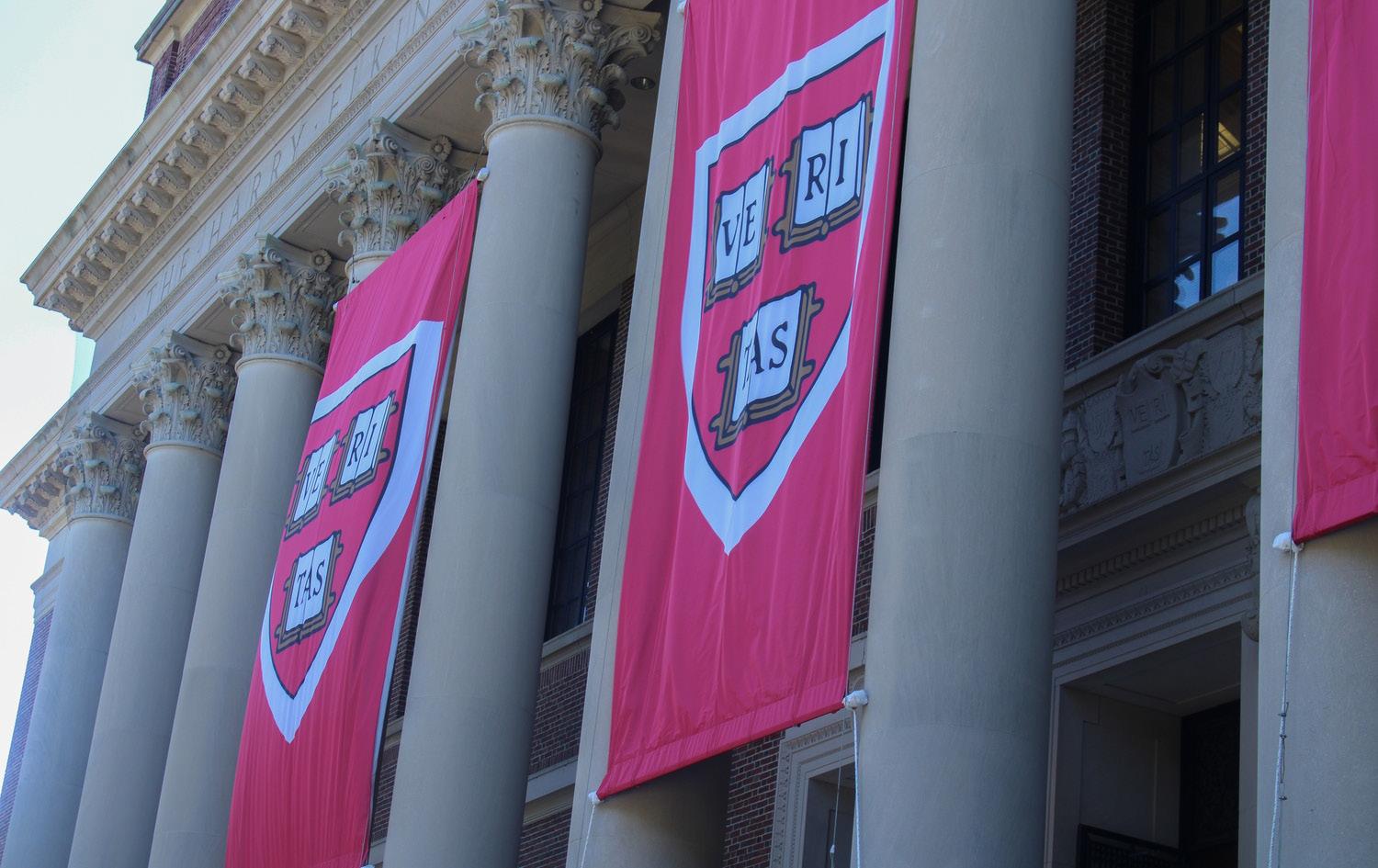

More than 500 faculty members at the University of Pennsylvania signed a
PRINCETON CHANGES DINING AND HOUSING PLANS; UNDERGRADUATE STUDENT GOVERNMENT
input from undergraduate students was considered in plan changes, but student government representatives say they were not involved in the decision-making process.
THE DAILY PRINCETONIAN

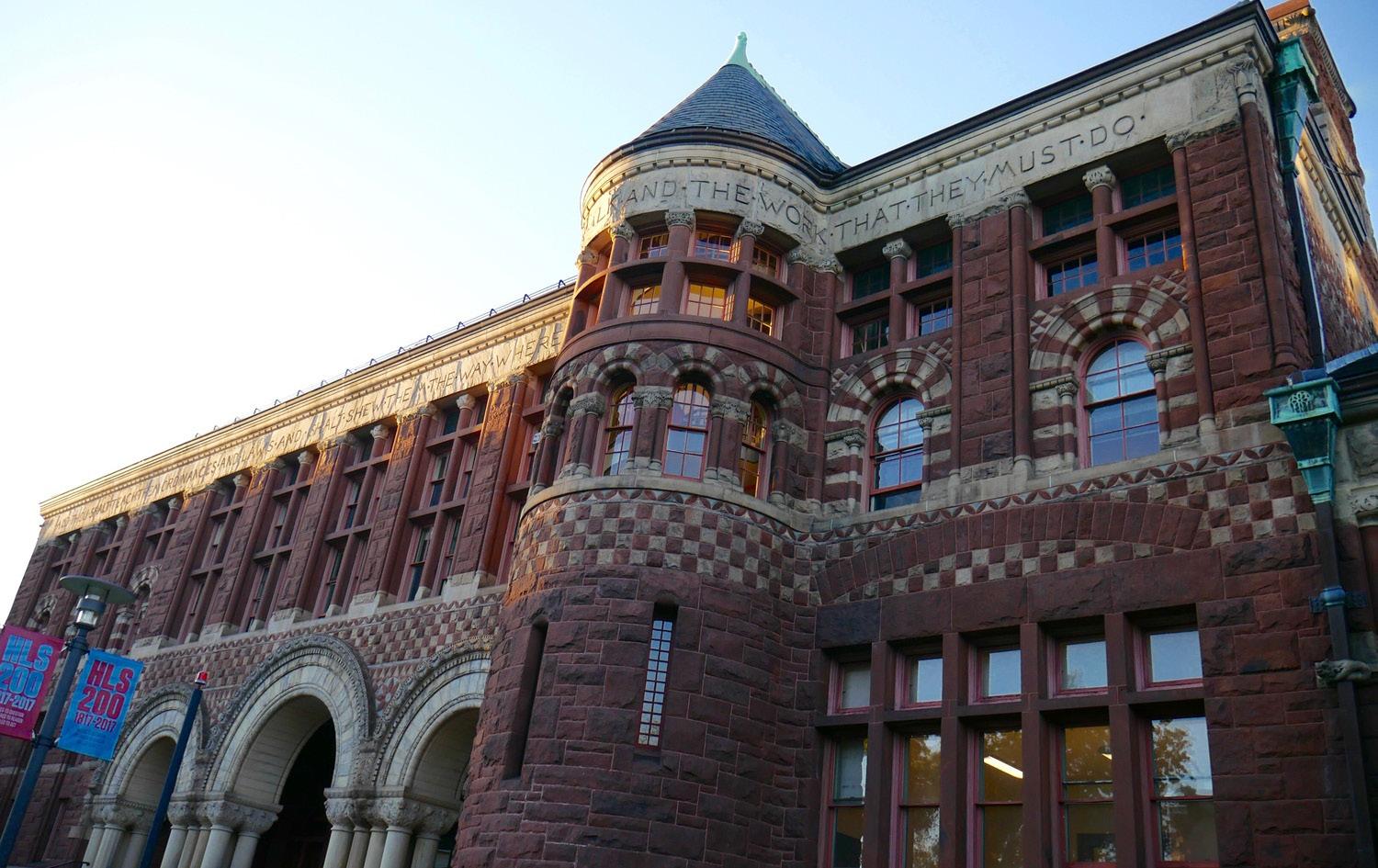
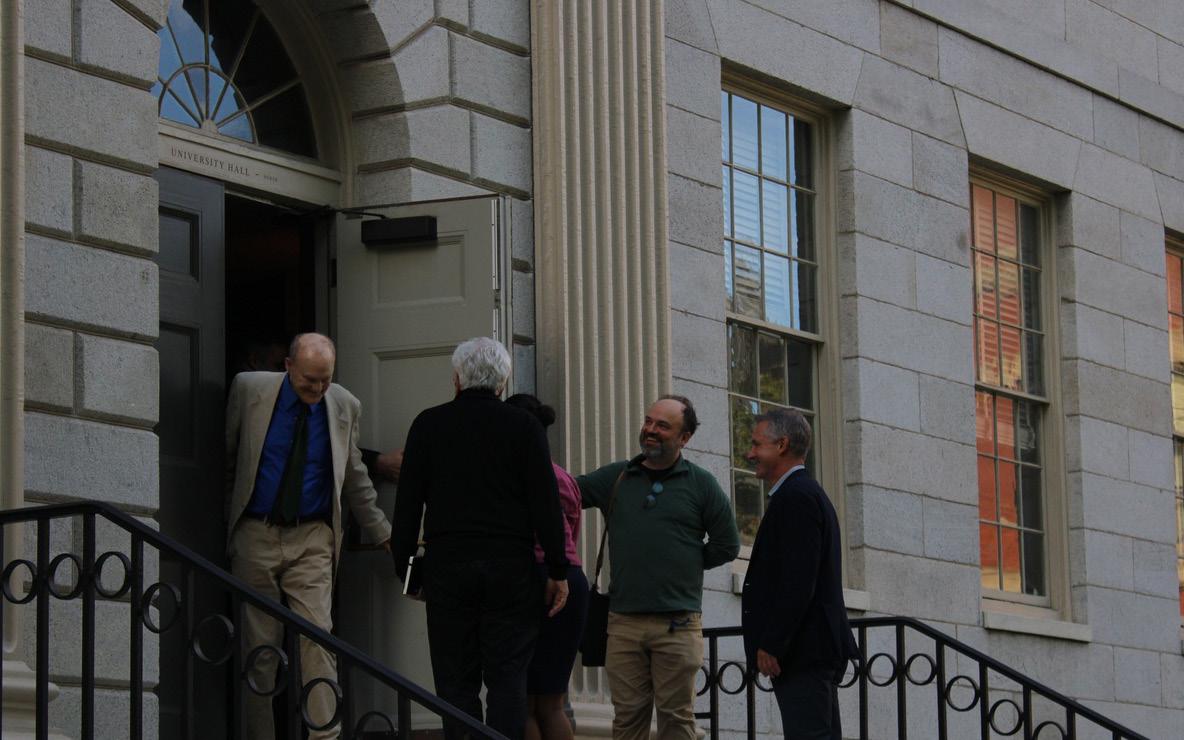

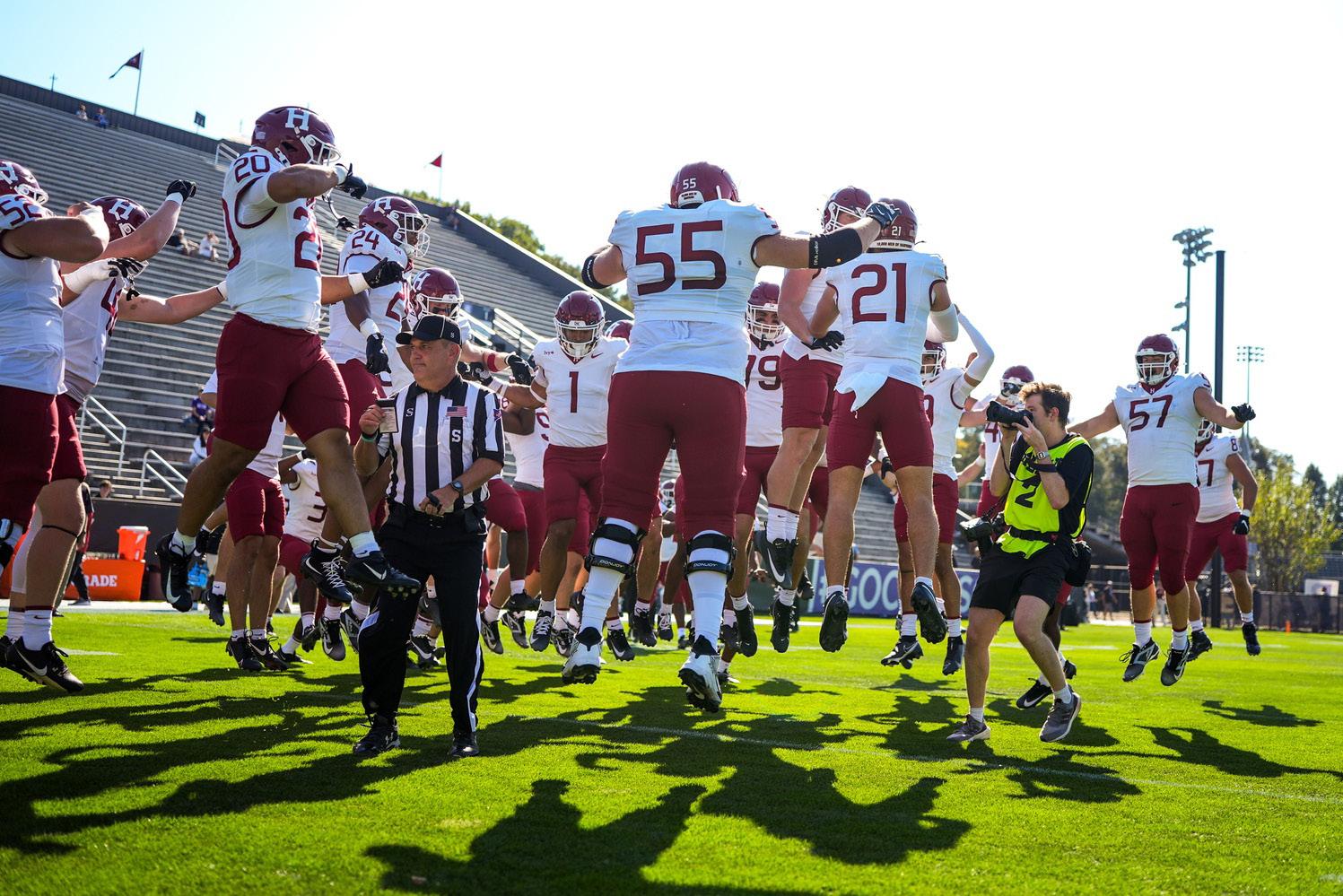

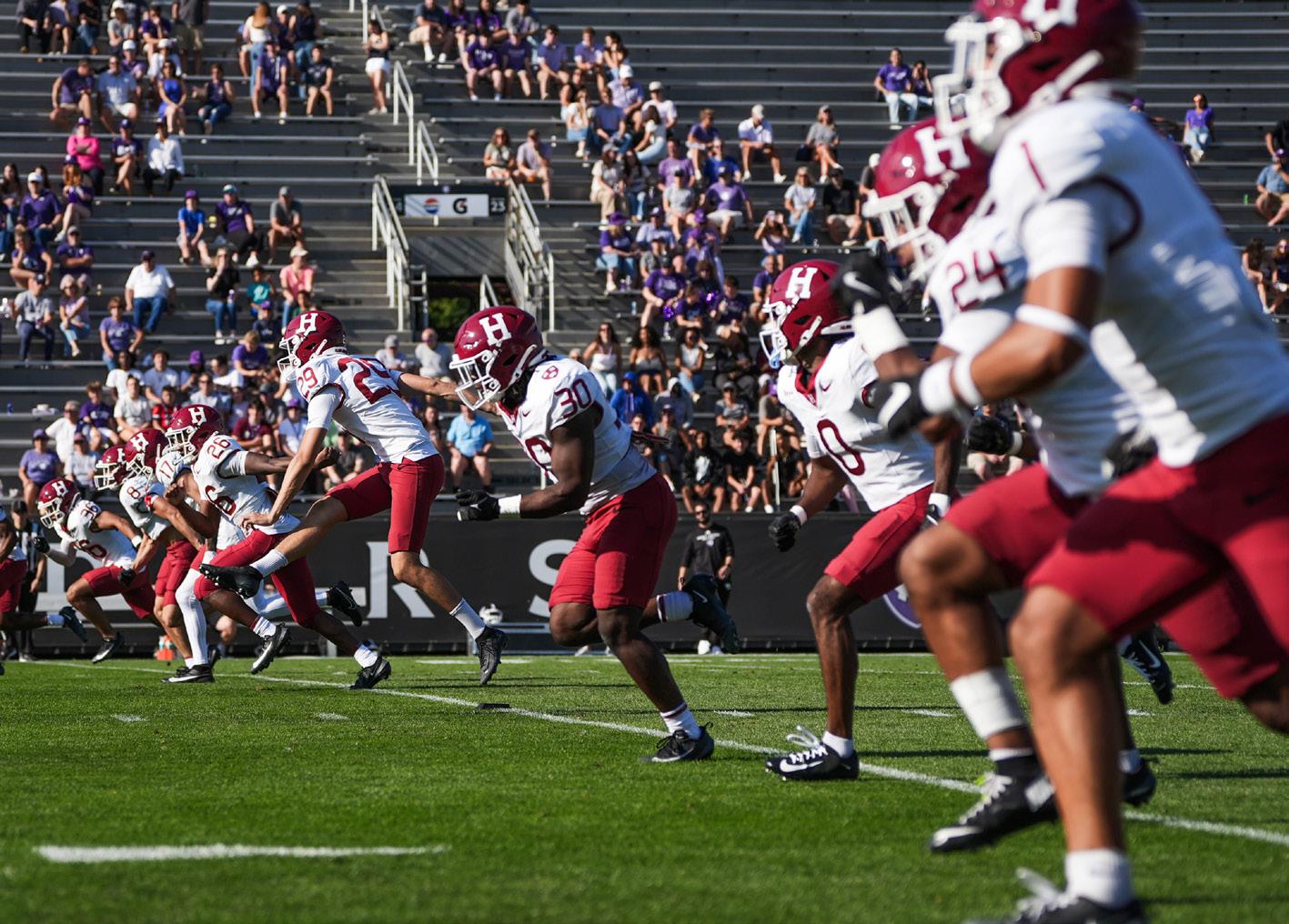
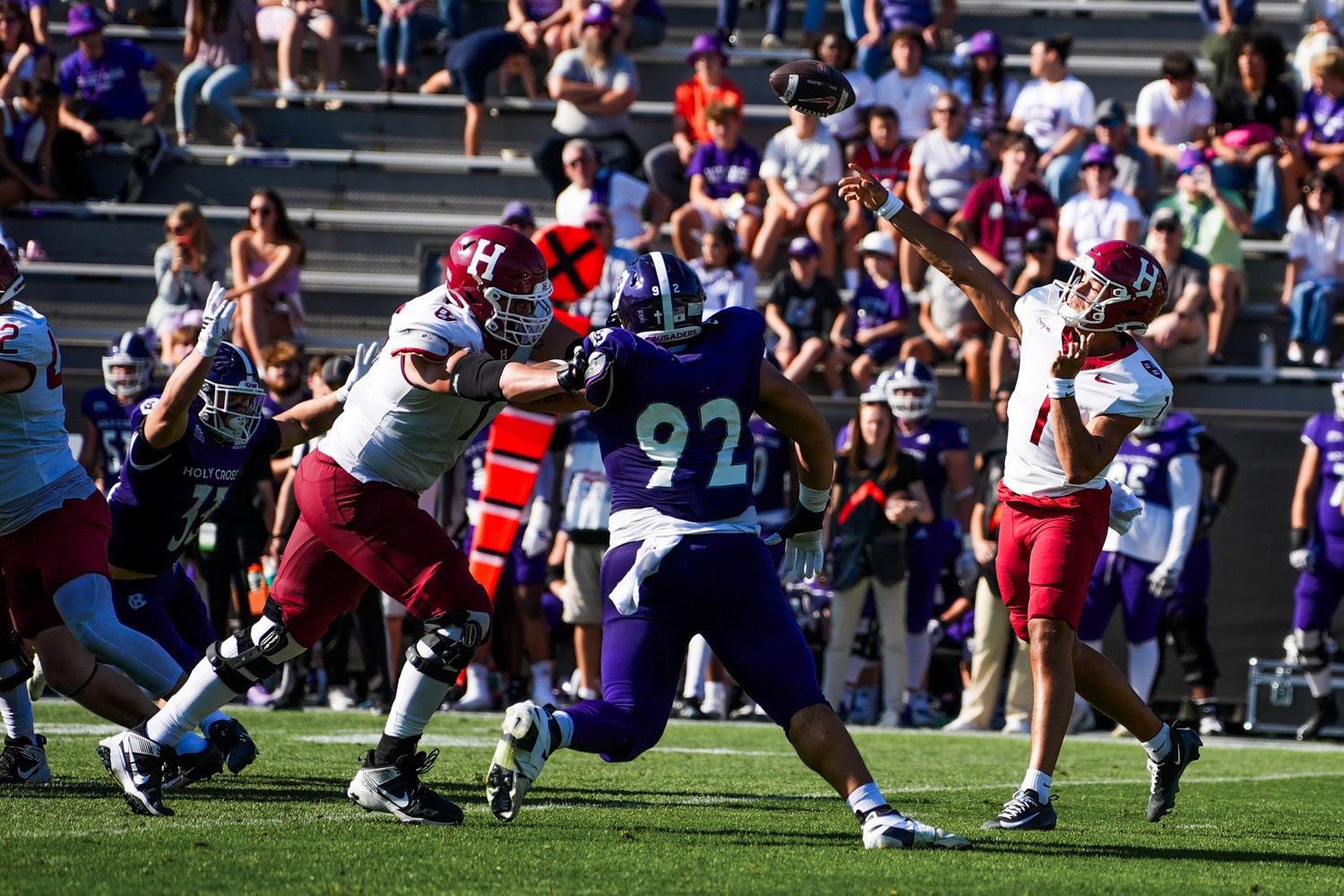
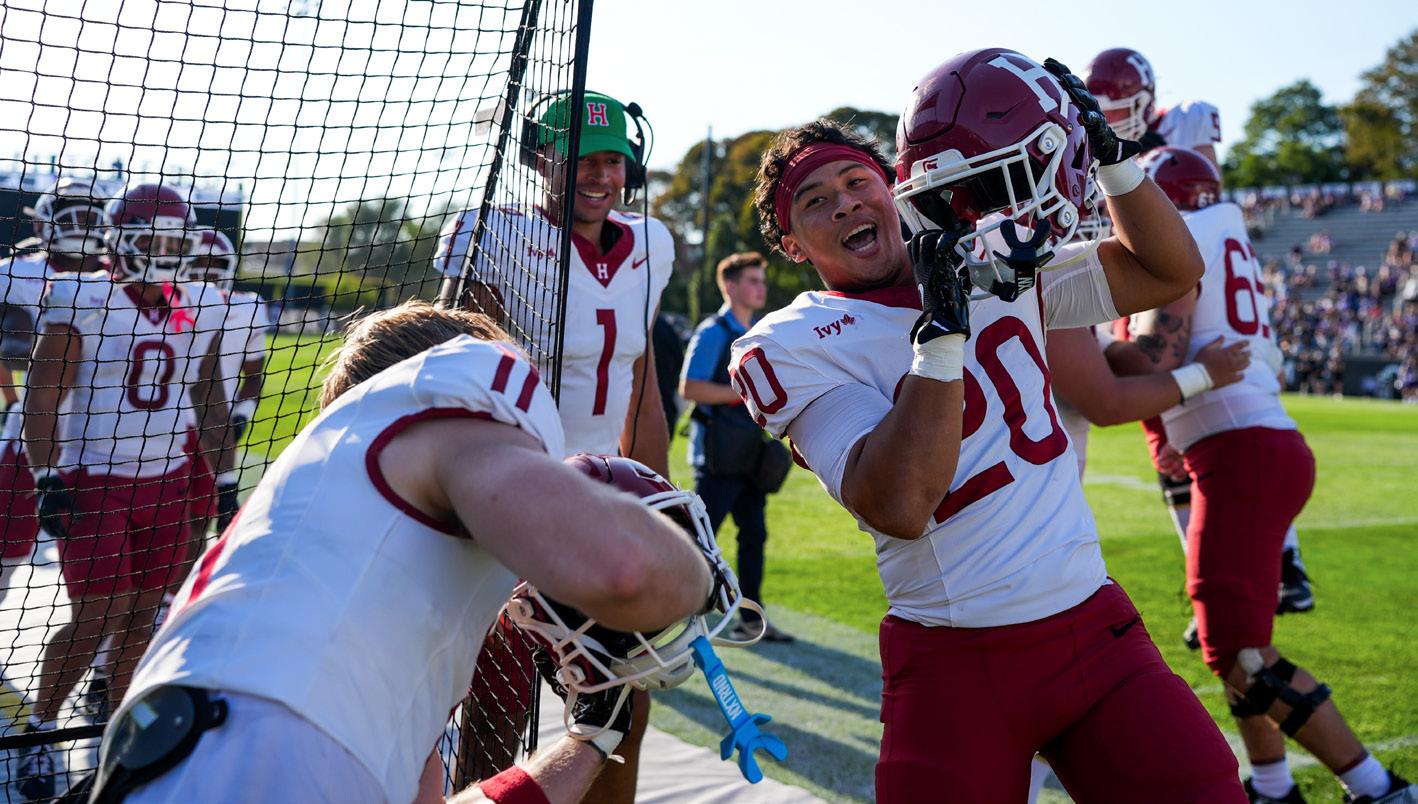

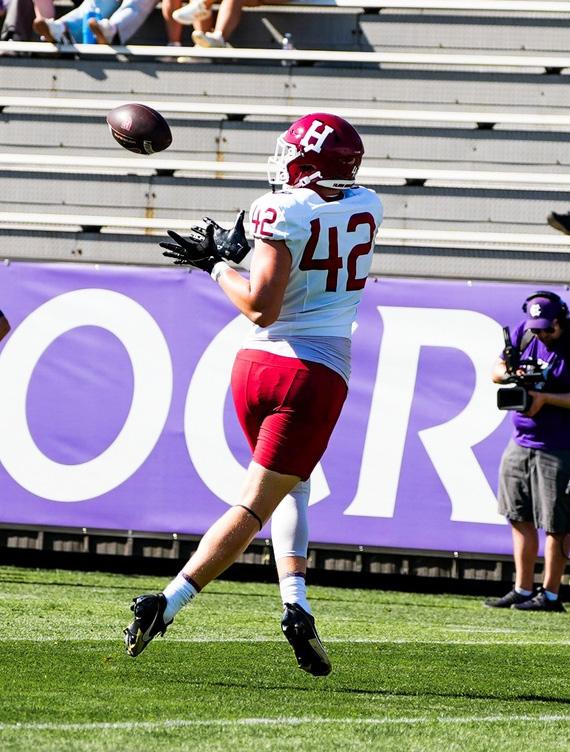
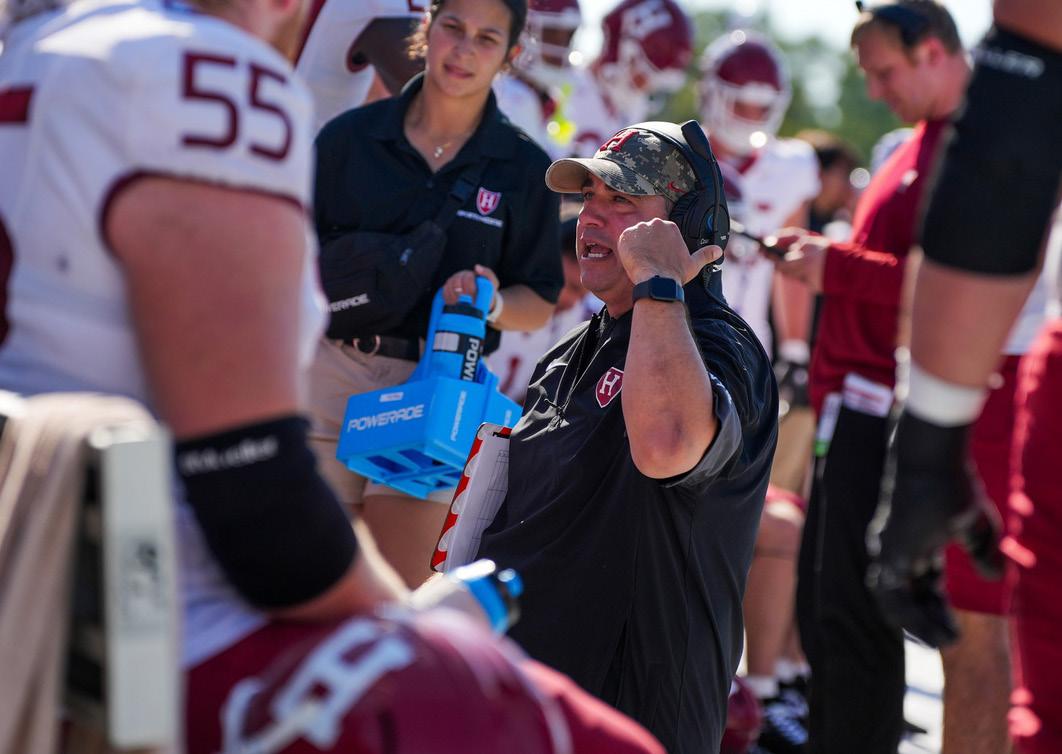


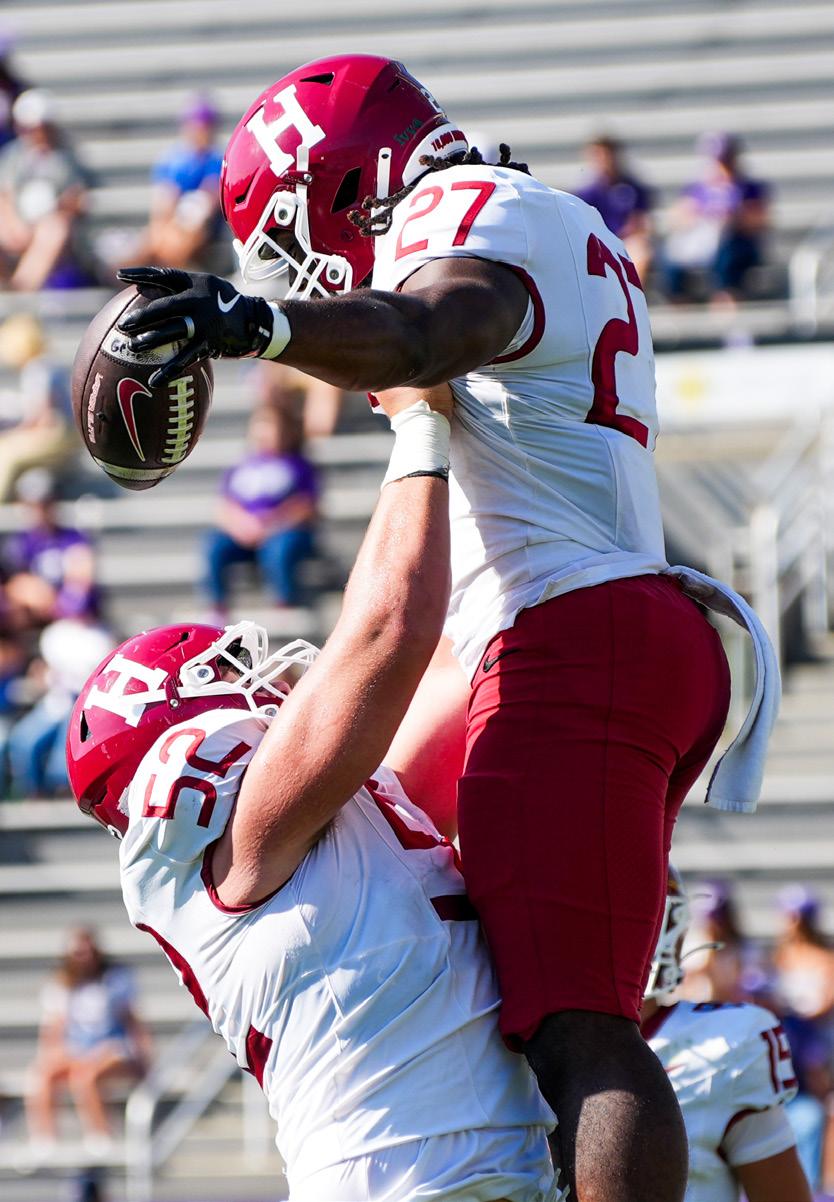
ISRAEL AND HAMAS AGREE TO HOSTAGE RELEASE AND PRISONER EXCHANGE, TRUMP SAYS
U.S. President Donald Trump announced on Wednesday that Israel and Hamas have reached a deal to free all Israeli hostages held by the militant group in exchange for Palestinian prisoners in Israel. The deal, which represents a major step towards ending the twoyear war in Gaza, also involves a limited retreat by Israeli forces in Gaza, Trump wrote on social media. Trump credited mediators from Egypt, Qatar, and Turkey for helping finalize the agreement, and a hostage release is expected this weekend, the New York Times reported. However, a full-fledged peace deal still faces major hurdles: Israeli Prime Minister Benjamin Netanyahu has repeatedly demanded Hamas completely disarm in exchange for an end to the war in Gaza — a term that the militant group has rejected.
A 29-year-old California man was charged with deliberately starting the Palisades Fire, which killed a dozen people and destroyed thousands of buildings in Los Angeles County last January, federal officials announced on Wednesday. Federal officials charged Jonathan Rinderknecht with starting a small fire last New Year’s Day that eventually grew to destroy swaths of Pacific Palisades, an affluent Los Angeles neighborhood known for housing Hollywood royalty, the Associated Press reported. Rinderknecht was arrested Tuesday and first appeared in court on Wednesday in Orlando, where he was charged with malicious destruction by means of a fire — which carries a minimum jail sentence of five years.
13 ARRESTED, FOUR POLICE OFFICERS INJURED AT PRO-PALESTINE PROTEST IN BOSTON COMMON
13 people were arrested and four police officers were injured at a Tuesday pro-Palestine protest on Boston Common, Boston police said. The protest, which coincided with the second anniversary of Hamas’ Oct. 7 attack on Israel and Israel’s ensuing war in Gaza, spilled over from the Common green to nearby streets, according to the Boston Globe. A spokesperson for the Boston Police Department said that, after moving onto the intersection of Winter and Tremont streets, demonstrators attacked a marked police cruiser, blocked traffic, and assaulted officers.
FRENCH PRIME MINISTER ABRUPTLY RESIGNS JUST WEEKS INTO THE JOB
French Prime Minister Sebastien Lecornu resigned less than four weeks into his term on Monday, CNN reported, throwing President Emanuel Macron’s government into intensifying political turmoil. Lecornu abruptly resigned just hours after he unveiled a new cabinet, according to CNN, making him the shortest-serving prime minister of France’s incumbent Fifth Republic.
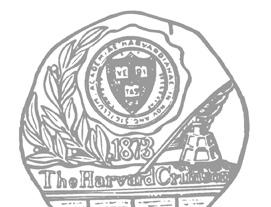
Start every week with a preview of what’s on the agenda around Harvard University
Friday 10/10
THE LATE SHIFT | “LATE NIGHT:”
WHERE COMEDY MEETS WATER
COOLER TALK
Harvard Kennedy School, Institute of Politics, L-140, 2 p.m.
Hear from David Young about his experience as the Supervising Writer of The Tonight Show
Starring Jimmy Fallon. He will discuss late night comedy and free speech.
DAY OF THE DEAD WORKSHOP:
MAKING A NICHO
Peabody Museum of Archaeology & Ethnology, Education Classroom, 2-4 p.m.
Create a nicho, a traditional shadow box typically commemorating a loved one who has passed. Briseida Ochoa “Brioch,” an artist from Mexico and Texas, will lead the workshop.
SPOTLIGHT TOUR: NAMING GRIEF, WITH DIANA OCHOA-CHAVEZ ’26
Harvard Art Musuems, 11-11:50 a.m.
Join a student-guided tour considering how artists have expressed grief in their
Monday 10/13
FREE ADMISSION TO THE PEABODY
MUSEUM AND MUSEUM OF NATURAL
HISTORY
Peabody Museum and Harvard Museum of Natural History, 9 a.m.-5 p.m.
Admission to the Peabody Museum and the Harvard Museum of Natural History will be free all day for Indigenous Peoples’ Day.
Tuesday 10/14
CULTURE & COMMUNITY FALL 2025
MIXER
Cambridge Queen’s Head, 8 p.m.
The Office of First-Year Experience will host a mixer for students to learn about Culture & Community at Harvard. Meet the Culture & Community proctor team, learn about resources and events, and enjoy food.
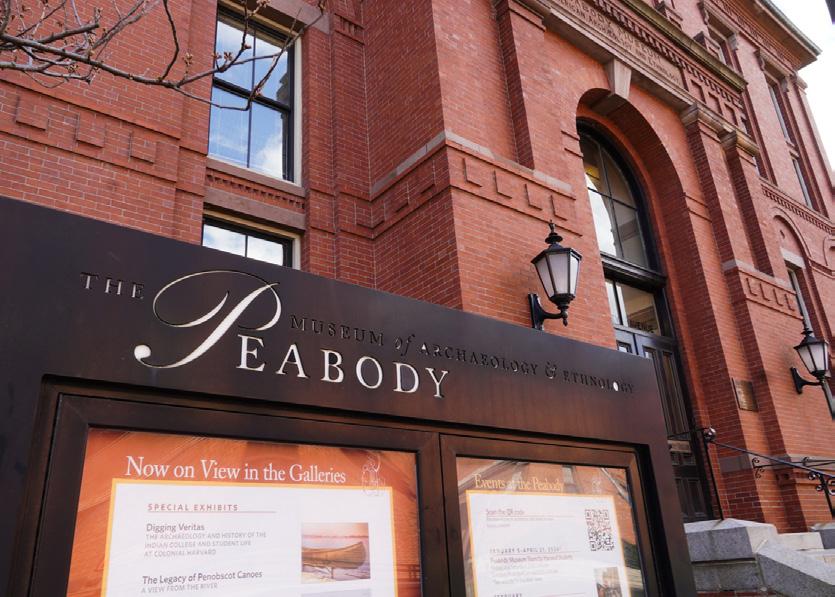
Wednesday 10/15
Thursday
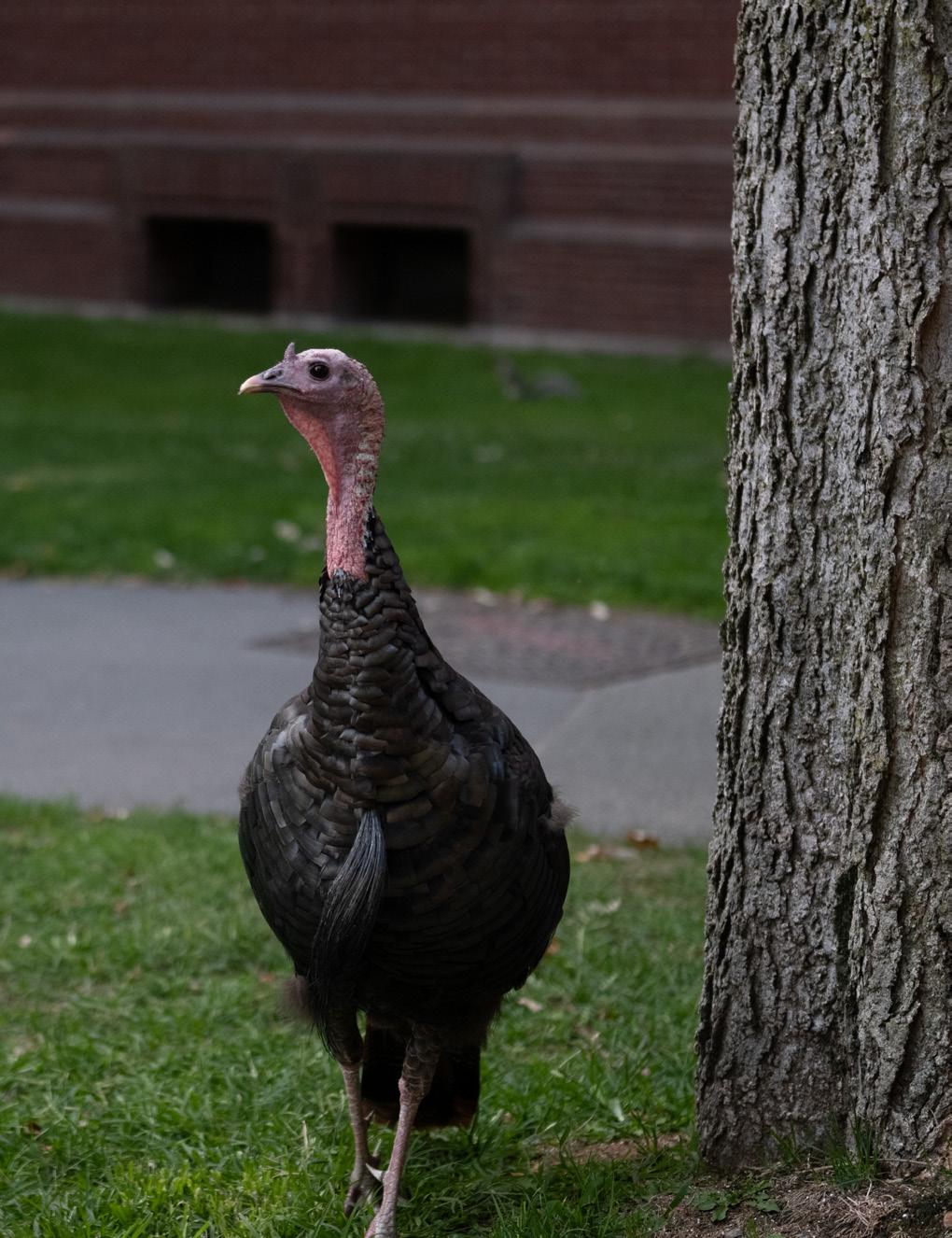
Friday 10/17
es on students’ doors after the Salient complained that faculty deans were limiting the publication’s door-to-door distribution.
Harvard College Dean David J. Deming said during an interview on Friday that he would not review or comment on an article in a conservative student publication that echoed language from an Adolf Hitler speech because the College had not received complaints about the piece.
“If a student violates a College rule, then that’s something I want to know about, because they should face disciplinary proceedings — or certainly if they violate the law,” Deming said during the interview. “But beyond that, students have a right to express themselves, and students have a right to be outraged at the expressions that others give.”
The article, published in the Harvard Salient’s September edition, did not attribute any language to Hitler, and the organization maintained that neither its author nor editors intended to invoke him. But one line in the piece — “Germany belongs to the Germans, France to the French, Britain to the British, America to the Americans” — closely follows the words of a speech Hitler delivered to Reichstag delegates in 1939.
The Salient edition containing the article was dropped off in Harvard’s undergraduate dormitories early last month. It landed on students’ doorsteps in the middle of a long-running debate over the bounds of free speech on college campuses.
Harvard, facing concerns that its liberal environment suppressed right-wing voices, has leaned into support for conservative student groups and emphasized its commitment to ideological diversity on campus — even when affiliates express provocative or offensive views. The University adopted an institutional neutrality policy in May 2024, limiting official statements on public controversies. It also installed inbox -
But Harvard was, at times, previously quick to denounce at least some speech that its leaders saw as harmful. Administrators, including Harvard President Alan M. Garber ’76 and former College Dean Rakesh Khurana, swiftly condemned an antisemitic cartoon posted on Instagram by two pro-Palestine student organizations in 2024.
The Salient article, which generated backlash among students but little public commentary, received no response from University or College administrators.
The piece, written by David F.X. Army ’28, included the line beginning “Germany belongs to the Germans” as part of an argument that ethnic groups hold rights to their ancestral homelands and should restrict migration to preserve cultural cohesion.
The original German phrase, which translates as “France to the French, England to the English, America to the Americans, and Germany to the Germans,” appeared in Hitler’s 1939 speech in the context of a defense of the expulsion of Jews from Germany. It has spread widely in right-wing and nationalist circles, but was reportedly rejected as a slogan by leaders of the far-right Alternative for Germany party because of its association with the Nazis.
Richard Y. Rodgers ’28, the Salient’s editor-in-chief, wrote in a statement that the piece’s author “did not intentionally quote Adolf Hitler, nor did any member of our editorial staff recognize the resemblance prior to publication.”
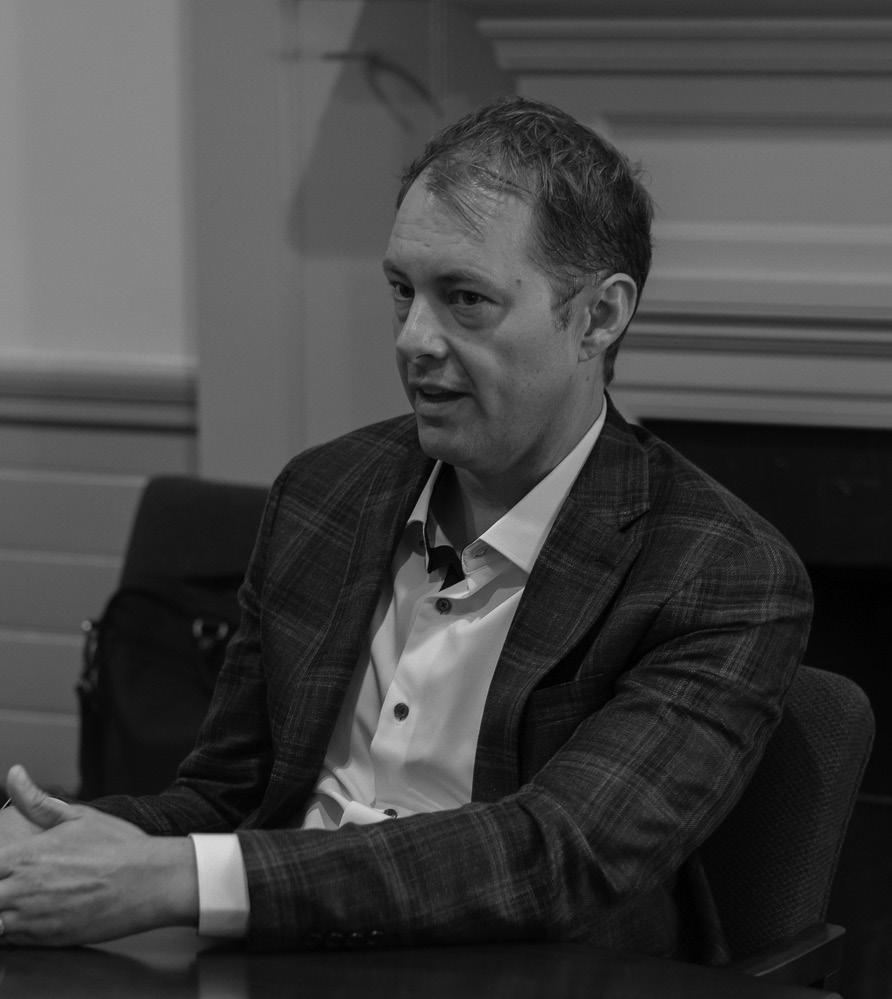
He wrote that the phrase “is a generic nationalist formulation that has appeared countless times across centuries of political rhetoric.”
“The article was a meditation on how nations and cultures preserve coherence in an age of rootless cosmopolitanism and global homogenization. To confuse a defense of belonging for a manifesto on exclusion is a fault of the reader, not the writer,” he wrote.
Army’s article argued that migration from Africa, the Middle East, and South Asia poses a threat to Western Europe’s stability and sovereignty.
“The demographic replacement of Europe’s native populations is no conspiracy theory; it is an observable fact, and it threatens the very soul of Western civilization,” Army wrote. Western countries, he argued, must embrace principles of national fraternity “rooted in blood, soil, language, and love of one’s own” to preserve their historical heritage.
Deming declined to comment on the Salient article during Friday’s interview, saying he had not read it. The
Crimson provided Deming with a copy of the article prior to the interview.
He also declined to review the article when offered another copy on Friday, saying that he would look into it only if it were reported to the College as a rule violation and processed as a disciplinary case.
“I take our rules and our policies very seriously, and if this or anything else is brought to me in that context, you better believe I’m going to look at it and take it seriously,” he said.
“But I’m not going to just chase it.”
The antisemitic image in the February 2024 Instagram posts drew public outrage and Harvard Hillel, the University’s Jewish center, wrote that its leaders were “in contact with the administration” shortly after the posts were published. (The two student groups removed the posts and issued an apology online the next day.)
The case was referred to the Harvard College Administrative Board.
Deming said he was not aware of any complaints submitted to the College regarding

the Salient’s September edition.
“If you think it violates a College rule, then you should report it, and then I will deal with it as the dean of the College,” he said. “So my answer to students is put it through the process.”
“Exercise your rights to free speech and free expression and talk about it. Say why you think it’s outrageous, have that be part of the conversation,” he added.
College administrators have publicly signaled their support for conservative students in recent months. After the murder of right-wing activist Charlie Kirk in September, Deming condemned the killing and pledged to protect conservative students during a previously scheduled event with conservative student groups held at the home of Dean of Students Thomas G. Dunne.
Last February, after the Salient complained to administrators that faculty deans in upperclassmen Houses had restricted their monthly door-todoor magazine distribution, the College announced plans to install inboxes on dormitory doors.
Then-Salient President Sarah L. Steele ’18-’26 framed the dispute as a battle over free speech, alleging that the Salient’s distribution had been targeted because of its conservative bent, though the Houses that restricted distribution said loose magazines posed a fire and slip hazard. Since the inboxes’ installation, student groups have used them to distribute everything from marketing materials to protest flyers. Later in the Friday interview, Deming said he felt “positive” about the climate of free speech on campus.
“If you read the portrayal of Harvard in the news, you get a sense that this campus is full of activism and full of people yelling at each other — it’s just completely untrue,” he said. “Our students, to me, don’t seem very afraid to engage across difference.” “This feels like a campus where there’s very healthy intellectual exchange and dialogue happening to me,” he added.
right, the idea will never come to fruition,” Hegseth wrote of her advocacy.
Hortman, a graduate of Harvard Kennedy School’s Mid-Career Master in Public Administration program, was assassinated in a politically motivated shooting in June.
Hegseth produced the 2013 paper on behalf of client organization Center for American Experiment, a Minnesota-based think tank where he was a senior fellow. The group’s founder, Mitch Pearlstein, defended Hegseth’s paper in an interview, and said he still thought it was a “good piece of work.”
But Pearlstein acknowledged the inconsistency between Hegseth, the bipartisan-minded education advocate, and Hegseth, the Department of War ideologue.
“Most of those people in the bibliography, people he had interviews with and conversations with and emails from — they’re overwhelmingly Democrats,” Pearlstein said of Hegseth’s paper. Hegseth has since distanced
himself from the University. In a 2022 appearance on Fox & Friends, Hegseth joked that Harvard should be renamed “critical theory university” and wrote “Return to Sender” across his degree. Pearlstein said Hegseth “certainly is confident” in his new role, but wouldn’t comment further on Hegseth’s leadership.
“I still consider Pete a friend,” Pearlstein said. “Though I am not a friend of the administration.”
PROTEST. Undergrads gathered in Cambridge Common to protest policies they said silenced minority students.
Asmall group of Harvard students accused the University of implementing policies to silence minority students in response to the Trump administration at a rally in Cambridge Common on Sunday afternoon.
The event drew a crowd of roughly 40 people and was the first protest led by Harvard’s chapter of Amnesty International, a charity human rights organization, since it gained official recognition from the Dean of Student’s Office last year.
Speakers at the event argued that recent changes at Harvard, including the shuttering of the Undergraduate Minority Recruitment Program in May and the decision to deny tenure to an associate professor of Women, Gender, and Sexuality studies, were evidence of the University caving to pressure from the Trump administration.
Krupali M. Kumar ’27, co-president of the Harvard Amnesty chapter, said the rally served to “expose the disconnect between our University’s values and their behaviors” as officials reshape, and in some cases, end programming for minority students.
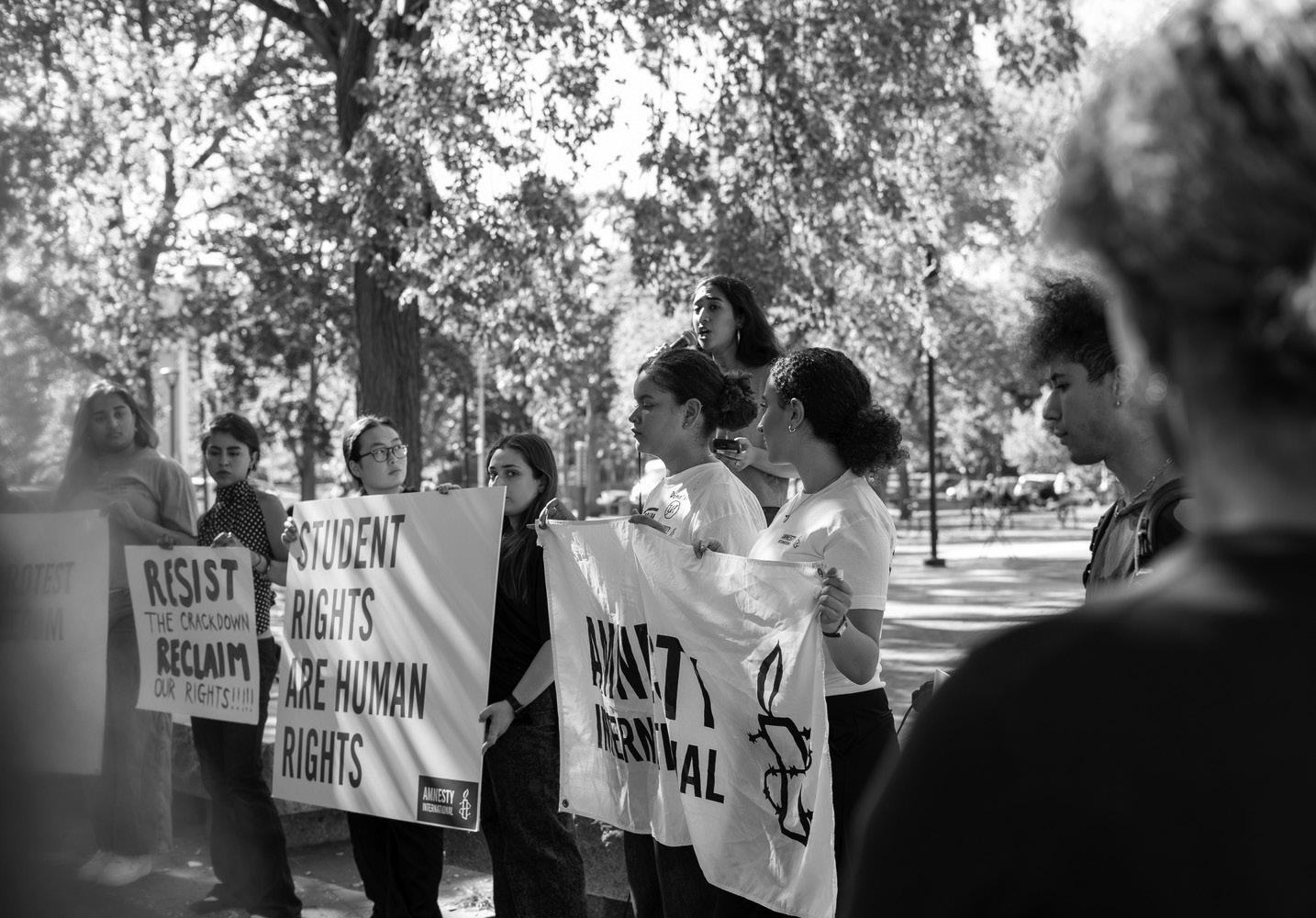
“These actions that the University has taken are showing us who gets to speak and who is punished for speaking,” Kumar said.
Harvard, she added, “is actively eroding the very institutional systems and functions that help minority students thrive and feel supported at this University.” Since taking office, President Donald Trump has attempted to punish Harvard for its response to antisemitism on campus, challenging its ability to enroll international students and use
BY SAMUEL A. CHURCH AND CAM N. SRIVASTAVA
STAFF WRITERS
Harvard College has allocated more financial resources to its new Office of Culture and Community than the three diversity centers it replaced, College Dean David J. Deming said in an interview on Friday.
Despite the diversity program rollbacks, Deming told The Crimson that affinity groups will continue to receive funding.
The College dissolved its Women’s Center, Office for BGLTQ Student Life, and Foundation for Intercultural and Race Relations in July, consolidating former staff from the offices under a new “Harvard Foundation” within the OCC. The move was met with immediate backlash from students, who argued Harvard was taking a step back from its commitment to supporting students from marginalized groups.
But during his first sit-down interview as dean, Deming pushed back against critics, arguing that the new OCC has allocated more money towards its events than the former centers had, combined, by the same time last year.
“We are still devoting the same amount of staff time and actually devoting increased resources to the activities around the Office of Culture and Community,” he said. “We’ve had, I think, 14 events since the beginning of the year, so that’s roughly one every two days.”
The revamped Foundation hosted ice cream socials in the Radcliffe Quadrangle and Harvard Yard as well as a fall food festival at Memorial Church, which were explicitly marketed as open to all Harvard students on posters. Programming at the former offices was also open to all students, but it was geared toward students of specific identities.
In August, Deming told Peer Advising Fellows that the closure of the offices was motivated by external pressures and constraints, without providing more specific information. When asked to clarify on Friday, Deming declined to elaborate, saying that it wasn’t his place to contextualize the decisions that led to the offices’ closure. “I don’t think it’s productive to engage in a tick-tock of how we
got to this point,” said Deming, who took over as dean in July. “It’s like a change in the weather; you have to adapt to it. My focus as dean of the College is meeting the needs of our students and not trying to get into the larger dialogue around these issues.”
Deming declined to comment when asked explicitly if the changes were due to pressure from President Donald Trump — who has repeatedly called on Harvard to eliminate diversity, equity, and inclusion programming — but he said he had made the final call to close the centers.
“I accept that people are unhappy with some things. I get that,” Deming said. “What I’d ask is just, ‘Tell us what you’d like to see.’ Don’t just say, ‘We don’t want this.’ Say what do you want.”
During the interview, Deming said the Foundation would still provide grants for events that are open to all students, in addition to funding recognized affinity groups. By law, Harvard is not able to fund events restricted by identity, but Deming said the College is now taking greater care to ensure that events are accessible to the entire student body.
“We could never fund them, and now we’re expending a little extra effort to make sure that we’re complying with those rules,” Deming said.
“There probably were events that happened in the past that violated those rules,” he added. “So what we are also doing is asking that student groups proactively ensure that they’re complying with the rules in ways that maybe we hadn’t asked before, as part of making sure that we’re complying with the law.”
Deming also confirmed that some traditional programming around identities would return — including Cultural Rhythms, a celebration in the spring featuring artists from diverse linguistic and cultural backgrounds.
The event has been hosted by the former Foundation for Intercultural and Race Relations for the last 39 years. In its absence, Deming said the OCC will take up the reins.
“We are very excited about Cultural Rhythms,” he said. “We want it to be as good as it ever was — hopefully better.”
federal funds. Though Harvard initially refused to meet a series of demands from the White House in April, changes in faculty leadership and diversity office closures have attracted outrage as quiet capitulation.
In particular, the College’s decision to close its three diversity offices — the Women’s Center, Office for BGLTQ Student Life, and Foundation for Intercultural and Race Relations — drew swift blowblack from students since the decision first became public in July.
College Dean David J. Deming explained the closures as part of a longer-term effort to overhaul Harvard’s approach to student support in an email announcing the change in July. He told Peer Advising Fellows in August that the changes were motivated by external pressure on Harvard, but did not mention Trump by name.
Harvard Queer Students Association Co-President Josh D. Rodriguez Ortiz ’28 said in a speech on Sunday that he understood the pressure Harvard
has been under from the White House, but argued that the University has not been transparent with their rationale for the closures and opening of a new “Office of Culture and Community” at the College.
“We understand Harvard is under pressure, but respect for leadership does not mean silence,” he said. “We’re fighting against the quiet erasure of diversity, against the rebranding of inclusion as something better with nothing to show for it.”
Before the centers’ closures were announced over the summer, a group of 20 affinity group leaders and former office interns signed a letter to the directors and top Harvard administrators inquiring about the future of the offices. They did not receive a response until after the decision was finalized.
“As students, we are told that our voices matter, that we have a seat at the table and that administrators exist to support us. But is that really true?” Rodriguez Ortiz said. “Does support mean ignoring a letter signed by the presidents and vice presidents of nine major student groups representing hundreds of students? Does it mean brushing off meeting requests?”
Spokespeople for the College and University did not respond to a request for comment Sunday afternoon.
Speakers at the rally also criticized what they described as growing barriers to student activism on campus. Juan I. Pedraza Arellano ’25-’27, a member of
the Student Labor Action Committee, said that Harvard had applied its student group policies to push out organizers.
“They want the people that stand up against them out,” he said.
Pedraza Arellano pointed to a warning letter the African and African American Resistance Organization received from Adams House administrators after they had attempted to reserve a space in the house without official recognition from the College.
Pedraza Arellano told the crowd on Sunday that the rule was
“disgusting.”
“Harvard University doesn’t want to acknowledge that Harvard AFRO is a real student organization — shame on them,” he said. “They want us to do all these little rules and things, to follow their guidelines, to be an official group.”
“What kind of suppression of speech is that to not allow an organization to even meet in a dining hall?” he added. Arellano said that students would continue to fight for spaces specifically cultivated for minority students.
“Maybe not now, maybe not next year, but they will come back, because we will keep fighting,” he said. “We will keep raising our voices against these institutions, against these people that try to suppress us. We will fight back.”
More than 100 people gathered in the Science Center Plaza Sunday evening for a vigil to mourn those killed in Hamas’ Oct. 7 attack on Israel nearly two years ago.
The event, organized by Harvard Chabad and Harvard Hillel, marks the second anniversary of the attacks. Attendees recited prayers for the more than 1,000 people killed in the attacks and Israeli hostages taken by Hamas. They held up Israeli flags and donned yellow ribbon pins, a symbol of solidarity with people still held hostage.
Harvard’s campus became the center of its own international scandal after the attack, when the combination of a controversial student statement that blamed Israel, and a muted institutional response from former Harvard President Claudine Gay sparked unprecedented outrage. Many of the Trump administration’s current initiatives to punish Harvard for its response to antisemitism and pro-Palestine protests originate in the weeks following Oct. 7.
Harvard Chabad Rabbi Hirschy Zarchi said it was important for the vigil to be held in the plaza, just outside Harvard Yard, to spread awareness of the people still in captivity.
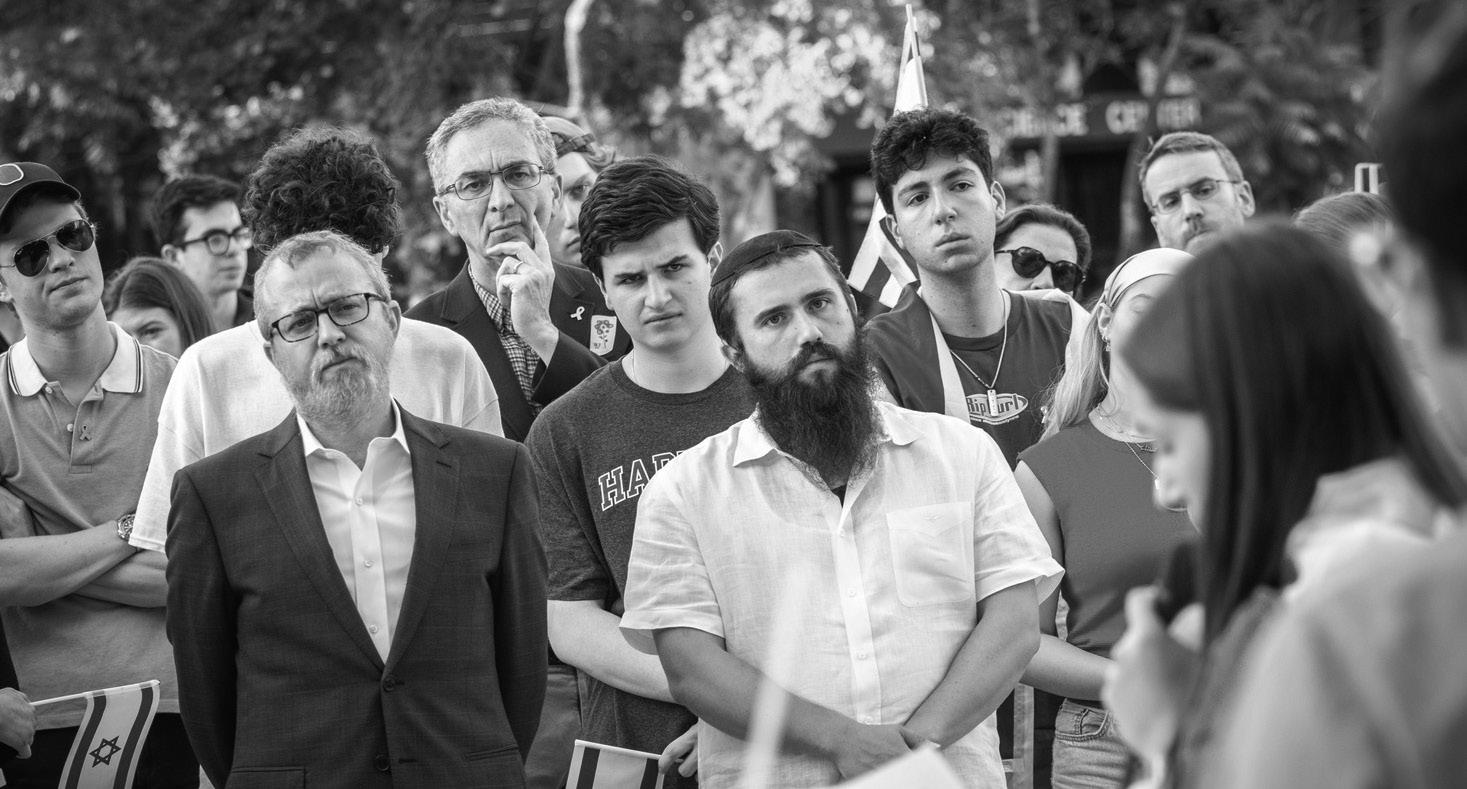
“Harvard is your home, and we unite and come together publicly, even in pain, but filled with hope and with horror, with these contradictory feelings. We don’t have to do so hidden or sheltered in Hillel or Chabad,” he said.
The vigil was held on Oct. 5, two days before the anniversary of the attack, to not conflict with celebrations of the Jewish holiday Sukkot.
In his speech, Zarchi condemned an attack that killed two people at a synagogue in England on Thursday during services for Yom Kippur. He reassured attendees that
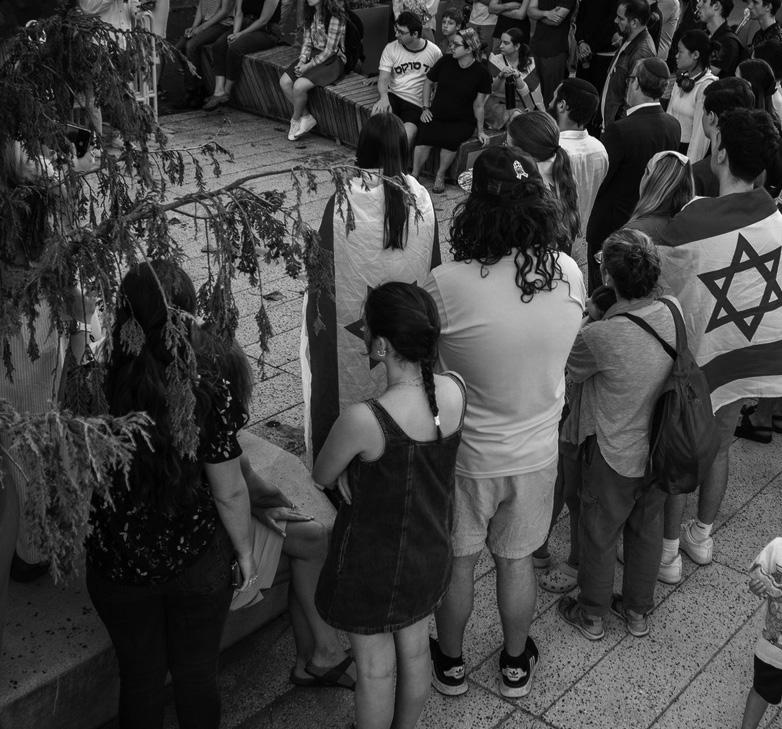
while there were incidents of antisemitism worldwide, the Harvard Law School visiting professor who was arrested for shooting a pellet gun last week near a Brookline synagogue was not motivated by antisemitism. (The visiting professor, Carlos Portugal Gouvea, told police he was hunting rats.)
“This man is married to a Jewish woman and has Jewish children, and it’s absolutely nothing to do with targeting the Jewish community,” he said.
“If it adds a measure of comfort and reassurance to our community, I thought it’s appropriate to just share that, so we can all take a sigh of relief,” he added.
Harvard Kennedy School student Tzur Goldin, whose brother was killed by Hamas in 2014, told the crowd that he has felt a new sense of national unity to “fight for one another” after the attacks.
“Our hope, our past, and our future begin with the strength to stand for one another — to take two separate triangles and unite them,” he said, referencing the Israeli flag.
Tamar H. Scheinfeld ’29 said she wanted to focus on remembering the lives of those killed, including a mentor of hers from high school, instead of dwelling on the attack itself.
“I think about that a lot — how someone who so embodied life could be taken in such senseless violence,” she said. “But I also think about how she lived, how she taught me to smile bigger, to love harder, to care about Israel.”
Since Oct. 7, 2023, Israel has launched a series of military offensives in Gaza, killing more than 60,000 Palestinians, according to Gaza’s Health Ministry, run by Hamas, which has controlled Gaza since 2007. Israeli officials have blocked the flow of aid into Gaza, issued sweeping mass displacement orders, and intensified aerial attacks on overcrowded neighborhoods.
Hamas agreed to release all Israeli hostages last week as part of President Donald Trump’s peace plan, but the agreement has not been finalized. A new round of negotiations between Israel and Hamas are set to begin on Monday. Rabbi Jason B. Rubenstein ’04, the executive director of Hillel, and Rabbi Getzel Davis, the newly appointed director of interfaith engagement at Harvard, were both present at the vigil, though they did not speak. But in an interview following the vigil, Rubenstein said that there was a sentiment of “faint hope” among attendees following Hamas’ agreement to release all remaining Israeli hostages. “We’re all cautiously hopeful about what the current conversations around a cease fire and return of the hostages around an end to the war and death and bloodshed might mean,” he said. “We’re certainly very fervently praying for it.”
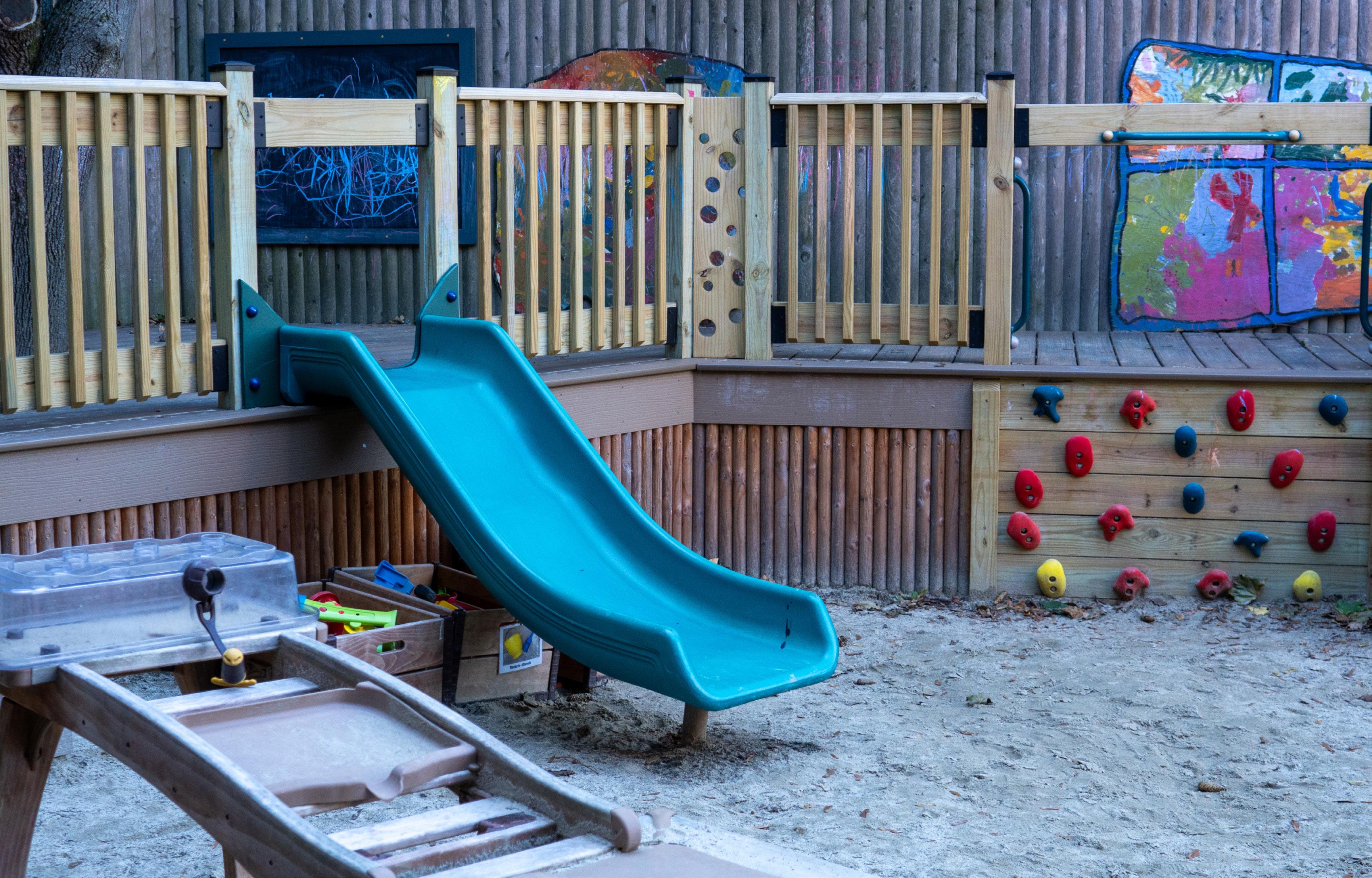
When Eugenia B. Schraa Huh ’04 was deciding whether or not to have a third child in Cambridge, child care was top of mind.
“Just thinking about how hard it was to get coverage for my children — particularly when they were very young babies or 1, 2 years old — was absolutely a factor in deciding not to have a third child,” Schraa Huh, who is running for Cambridge School Committee, said. “It’s just a ton of work.”
Parents in the City of Cambridge previously spent years on waitlists for child care and preschool programs that could cost up to $50,000 annually. The City tried to put an end to parents’ nightmares two years ago by launching universal preschool — the Cambridge Preschool Program — for all 4-year-olds and some 3-year-olds.
Cambridge has spared no expense to make child care programs widely accessible in the city, investing more than $35 million in the city’s preschool and after-school programs this fiscal year. Now, parents of children age 4 or younger can apply to free child care programs offered by the city’s public schools, the Department of Human Ser-
vices Programs, and city-funded private providers.
Despite Cambridge’s efforts, parents and local politicians say that some families are still falling through the cracks. Limited hours pose a barrier for some families, while others seek to leverage preschool placements to land a spot in Cambridge’s most coveted elementary schools.
Together, the extensive options and unexpected constraints fuel a culture of intense strategization around preschool enrollment that often makes the top-ranked programs inaccessible for low-income families.
“You need a lot of resources,” Cambridge parent Carolina Reyes said. “And anybody faces a money issue.”
Putting the Pieces Together
With more than 50 preschool and after-school programs subsidized by the city, Cambridge parents have a plethora of child care options to choose from — at least on paper.
Parents can apply to 13 public school programs, six DHSP programs, and more than 30 private providers, all in one application. Families rank their top choices and then are lotteried into a program, with priority given to low-income families, defined as those living at or below 65 percent of the area’s median income.
“That match happens in two batches,” Cheryl A. Ohlson, director of the CPP, said. She added that low-income families “get run through first — so essentially, they have a greater likelihood of receiving one of their higher choices.”
All four-year-old Cambridge children are eligible for free preschool, before they transition to kindergarten at age five. Cambridge then offers after-school programs from kindergarten through eighth grade.
But as low-income working parents must account for the lack of extended day programming — services that last until the evening — at certain preschools, their options shrink. The city only subsidizes six-anda-half hours of child care per day at each of the preschools, which parents say adds a barrier to enrollment in certain programs.
“The way that CPP really tries to sort of correct for that is by the way we do matching and the way we address our priority families in particular,” Ohlson said.
Last year, 44 percent of the 795 children enrolled in CPP were listed as low-income. According to city data, 89 percent of priority families and 75 percent of non-priority families were matched with their first choice preschool program.
Priority families can secure full-year service and extended day programming through DHSP, with the city fully subsi-
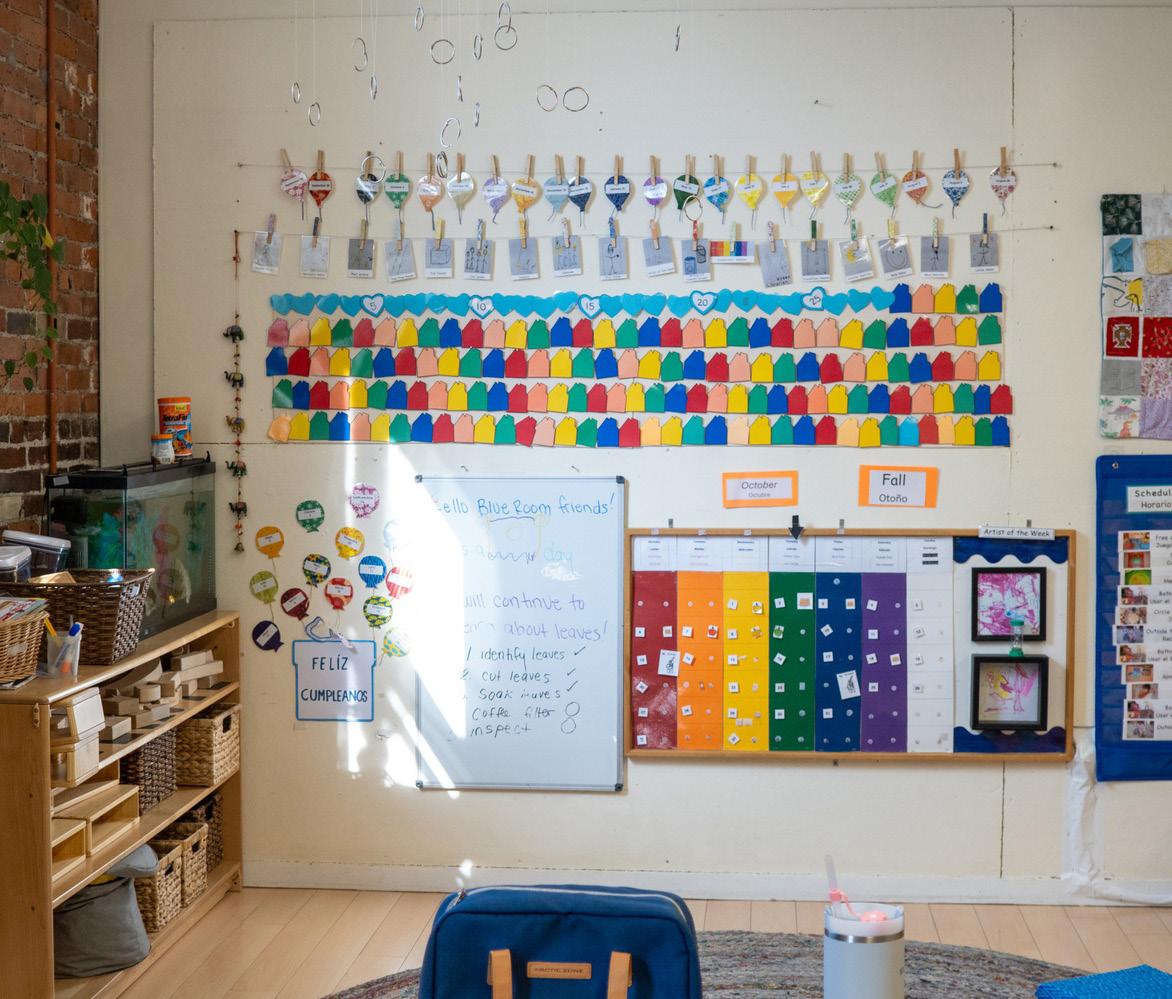
dizing tuition during the school day and year. DHSP also funds five “community providers” which offer after-school care for school-aged children five days a week, spending nearly one million dollars on scholarships for low-income families. But this is still not enough.
“I think the biggest issue is still access,” Cambridge parent Amanda Beatty said. “We still have around 200 kids on the waitlist, and that is too many.”
Other programs have much less extensive options.
CPS preschools — popular among families for their extensive language immersion programs and preferential elementary school enrollment — do not provide any extended stay options. These programs also follow the public school system calendar, which means that families must find other childcare during school holidays and summers.
Despite the drawbacks, many parents still choose to keep their children in CPS preschools. Elysse Magnotto-Cleary, who had a child in the Tobin Montessori preschool program, decided to stay at Tobin to save their spot in the elementary school.
“We were told we could apply to a different program with longer hours, but if we did that, we would have lost our spot at Tobin,” she said.
Magnotto-Cleary sought to take advantage of Cambridge’s matriculation policy that ensures all CPS preschool students can enroll at the corresponding elementary school. Siblings also receive preferential treatment in admissions to some programs to avoid forcing families to do multiple drop-offs.
“You really have to get a foot in the door, because then once you get one kid in then your next kid can get sibling enrollment priority,” Cambridge parent Doug O’Regan said. “That’s a huge deal.”
For Magnotto-Cleary, the trade-off was worth it.
“We were looking at sort of the overall well-being and educational experience of our child, and decided not to pull from Tobin, because then we would have lost our spot at the elementary school,” she said.
Magnotto-Cleary is not the only parent who has been forced to choose between present convenience and a future at one of Cambridge’s most popular schools. Structural inequities often prevent low-income families from capitalizing on their preferential position in the preschool admissions process.
Magnotto-Cleary recognized
that other families may not be able to sacrifice the extended day option — especially given a Massachusetts law that prohibits the state from transporting non-school-aged children to after-school programs.
“This policy change essentially creates differential education based on income,” she said. “Unless you have a parent or a caretaker who can pick up the child in the middle of the day, can you easily attend this program?”
Cambridge City spokesperson Jeremy H. Warnick wrote in a statement that “like any system where there are options, there are pros and cons to different preschool program models.”
“Parents weigh the value of full-day care vs. guaranteed matriculation for their family when choosing how to rank these two preschool models on their CPP application,” Warnick wrote.
Finding the Right Fit
Income differences are not the only barrier to accessing Cambridge’s child care programs. Parents must account for confounding factors — like their children’s special education accommodations and their hopes for elementary school placement — as they navigate the childcare system.
Loretta J. Haynes tried to get her grandson into a DHSP after-school program, but was left on the waitlist for more than a year because the city could not accommodate his individualized education plan at Fletcher Maynard Academy.
“That was a major problem, not just with myself, but with other parents that I know of who could not get their child in the after-school program because of similar problems,” she said.
“He’s eight years old, he is mildly on the spectrum, and at the time that he came to FMA, was having a lot of challenges.”
Ellen M. Semonoff, assistant city manager for Human Services, said that families applying for accommodations often have to wait longer before they are admitted.
“It has been challenging for families with children with special needs to get through the application process sometimes,” Semonoff said. “We have not always been able to hire the staff as quickly as we would have wished.”
Semonoff also added that this year’s budget provided funds for the city to bring on another staff member to work on this issue. Whether their children have special education needs or not,
Cambridge parents are often forced to strategize carefully to take full advantage of the public child care system — effectively curating their children’s school trajectory during their earliest years.
O’Regan, the Cambridge parent, tried to set up his son for eight years at Tobin by applying for the corresponding preschool when his son turned 3 — before the free preschool for 4-yearolds kicked in.
“If you don’t get in in the 3-year-old program there,” he said, “you’re basically not going to get in there until at least elementary school.”
“It’s a very strategic thing,” O’Regan added.
The complex child care system has led some parents to shell out thousands of dollars in hopes of securing placement at the city’s top free programs. Parents at the Cambridge-Ellis school will pay up to $40,000 for a spot in the school’s toddler program — making it easier for them to matriculate into the school’s free four-year-old program. The parents leverage Cambridge-Ellis’s “continuity of care” policy, which provides students priority registration to stay at their current site in subsequent years.
“I think we have seen an increase in some applications to our lower ages, because those families, when their child turns 4 and they’re eligible for CPP, they want the Cambridge-Ellis program, they want the Cambridge-Ellis curriculum,” Andy Griswold, director of the Cambridge-Ellis school, said. “They want to be in so that they can get one of our continuity of care spots.”
Even with Cambridge’s child care system’s complexities and inequities, parents still say that universal preschool has been “a blessing.”
“They went to this new model to offer free preschool for all four-year-olds, which I think is amazing and has been like, genuinely, like, a blessing in our lives,” Cambridge parent Lindsey R. Encinas said.
City Councilor Sumbul Siddiqui, who helped lead the charge to institute universal preschool, said that the new program requires time but will continuously improve.
“Whatever policy decision you make, there sometimes will be some challenges in the implementation,” she said. “At the same time, we have to do better and keep talking.”
Two years after unionizing, undergrad workers are nowhere near a contract.
Nearly two years after unionizing, Harvard’s undergraduate worker union is nowhere near a first contract, leaving student workers stranded as the University closes several of their workplaces. Harvard Undergraduate Workers Union-United Auto Workers, which represents students in non-academic campus jobs at libraries and cafes, has met 18 times with negotiators from the University since March 2024. They have agreed on no substantive provisions.
The union’s bargaining committee, which is supposed to make tentative contract decisions for the unit, has also fluctuated widely as members graduated since bargaining began. The committee lost half of its members in both 2024 and again in 2025 because they graduated out.
The unit took another hit over
the summer when Harvard shuttered its diversity offices — leaving dozens of union-represented workers unsure of future employment.
Many of the former diversity office interns also said they were left in the dark about their workplace closure for weeks, something firm contract language could have mitigated had a final agreement been reached.
While first contracts are often the longest to negotiate due to the number of new agreements to reach, HUWU-UAW’s changing unit has created additional complications. While bargaining, they have already seen multiple workplaces close, including the Cambridge Queen’s Head Pub, the Barker Cafe, and Harvard’s diversity offices.
HUWU-UAW and the University also have not yet agreed to a consistent pace of bargaining for the semester.
According to a University spokesperson, Harvard offered five bargaining dates for the fall, though HUWU-UAW has not agreed to any of them yet. Organizer and Widener Library worker Sylvia G. Traw ’26 wrote in a statement that the offered dates were within business hours and only on days other than Friday, making it difficult for undergradu-
ates to attend.
In the interim, organizers have been working to fill empty seats.
The union sent an email on Sept. 3 to workers, notifying them that workers who had signed union cards were nominated for the bargaining committee and that there were “many open positions.” According to the email, they would forgo an election if not enough students volunteered for the committee.
Traw confirmed that union members currently undergoing training to join the committee will be elected by acclamation.
The union has already tentatively agreed with the University on three standard contract provisions, including a broad statement of purpose and an article to ensure the contract remains valid even if parts of it are made illegal by changes to laws. Though a third agreement has been reached for the moment on unit scope, Traw said the union is planning to renegotiate which workplaces are included in the unit after the diversity offices’ closure changed classifications.
Twenty-three other non-economic articles remain in limbo — and according to bargaining committee member Aaryan K. Rawal ’26, the union will only
BY DARCY G LIN CRIMSON STAFF WRITER
Harvard College will hold Housing Day on the Friday following spring break in 2026 — pushing back the annual festivities more than a week past their traditional date on the Thursday before break.
The annual tradition, which marks the date that freshmen are randomly sorted into one of the College’s 12 upperclassmen Houses, has taken place before spring break since its revival in 2008. On the morning of Housing Day, upperclassmen storm freshmen dormitories with signs and costumes to welcome them to their new Houses.
Dean of Students Thomas G. Dunne announced the change to House administrators and academic coordinators in an email on Sept. 25.
“Last year Amanda Claybaugh and I asked a committee of faculty, students, and staff to review our current Housing Day tradition, which has typically been held on the Thursday before Spring Break,” he wrote.
Earlier that week, at a regu-
lar meeting of House Committee chairs, Dunne attributed the change to feedback from faculty, who expressed that Housing Day interferes with classes and midterms, according to a person in attendance.
In response to a request for comment, College spokesperson Jonathan Palumbo wrote that the change “was not a response to faculty complaints but rather a broader review with an eye toward full participation.”
Dunne also told students at the meeting that holding Housing Day after break would also allow the College to schedule activities to build House spirit among students assigned to dorms in the Radcliffe Quadrangle, according to the attendee. Freshmen assigned to the Quad, located at least a 15-minute walk from the Yard and the River Houses, often react with disappointment.
The night before Housing Day, many freshmen partake in River Run, visiting each of the nine Houses along the Charles River, often attempting to take a shot of alcohol at each. Longstanding student superstition holds that successfully completing River Run appeases the “Riv-
er Gods” and helps participants avoid being Quadded.
On Housing Day morning, upperclassmen flood the Yard beginning around 7 a.m. Despite the festivities, classes — and sometimes midterms — are held on Housing Day.
We hope that this shift in schedule will allow students to focus on their academic work without feeling that they are missing out on one of Harvard’s signature memories,” Dunne wrote. “We know that this tradition is very important to students, and to all of us at the College, and we plan to assess the impact of this new date to make sure we are on the right path.”
Harvard has made a series of changes to Housing Day traditions in recent years. In 2024, the College lifted Harvard ID swipe restrictions on access to upperclassmen Houses the night before Housing Day — which were designed to prevent students from drinking to excess during River Run, but often led to rowdy nights as students jumped fences, stormed gates, and evaded security guards.
darcy.lin@thecrimson.com
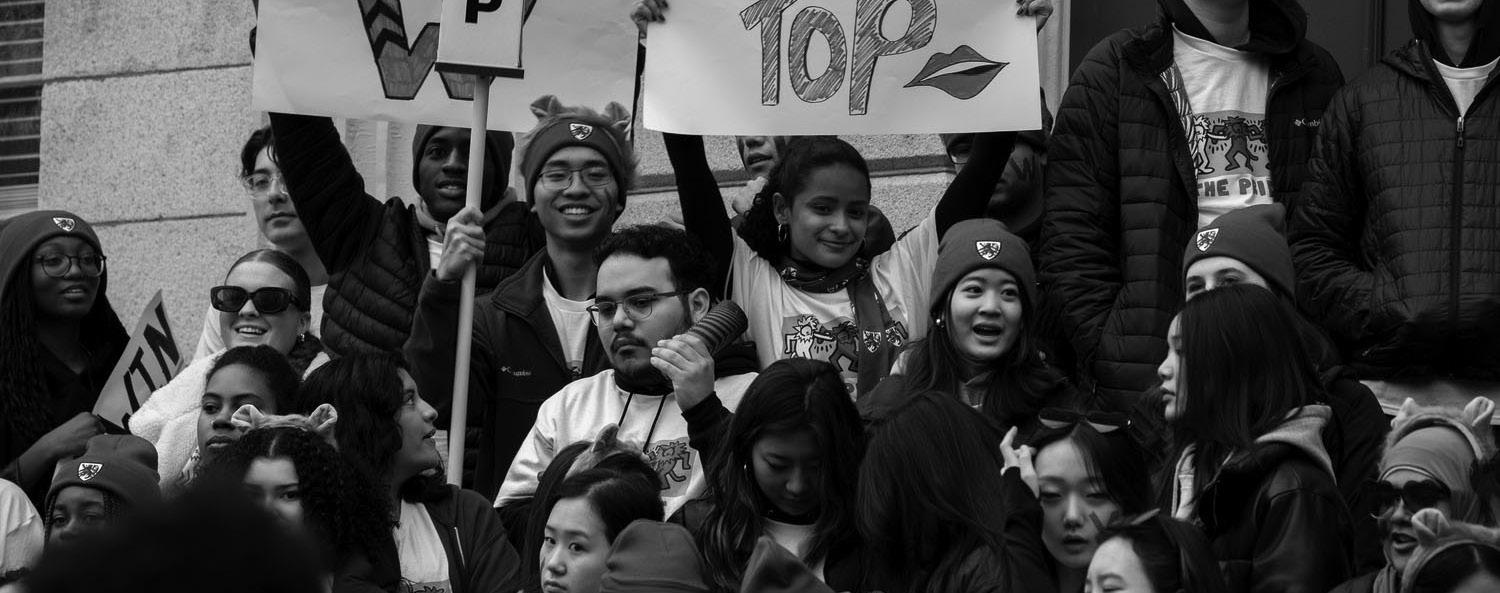
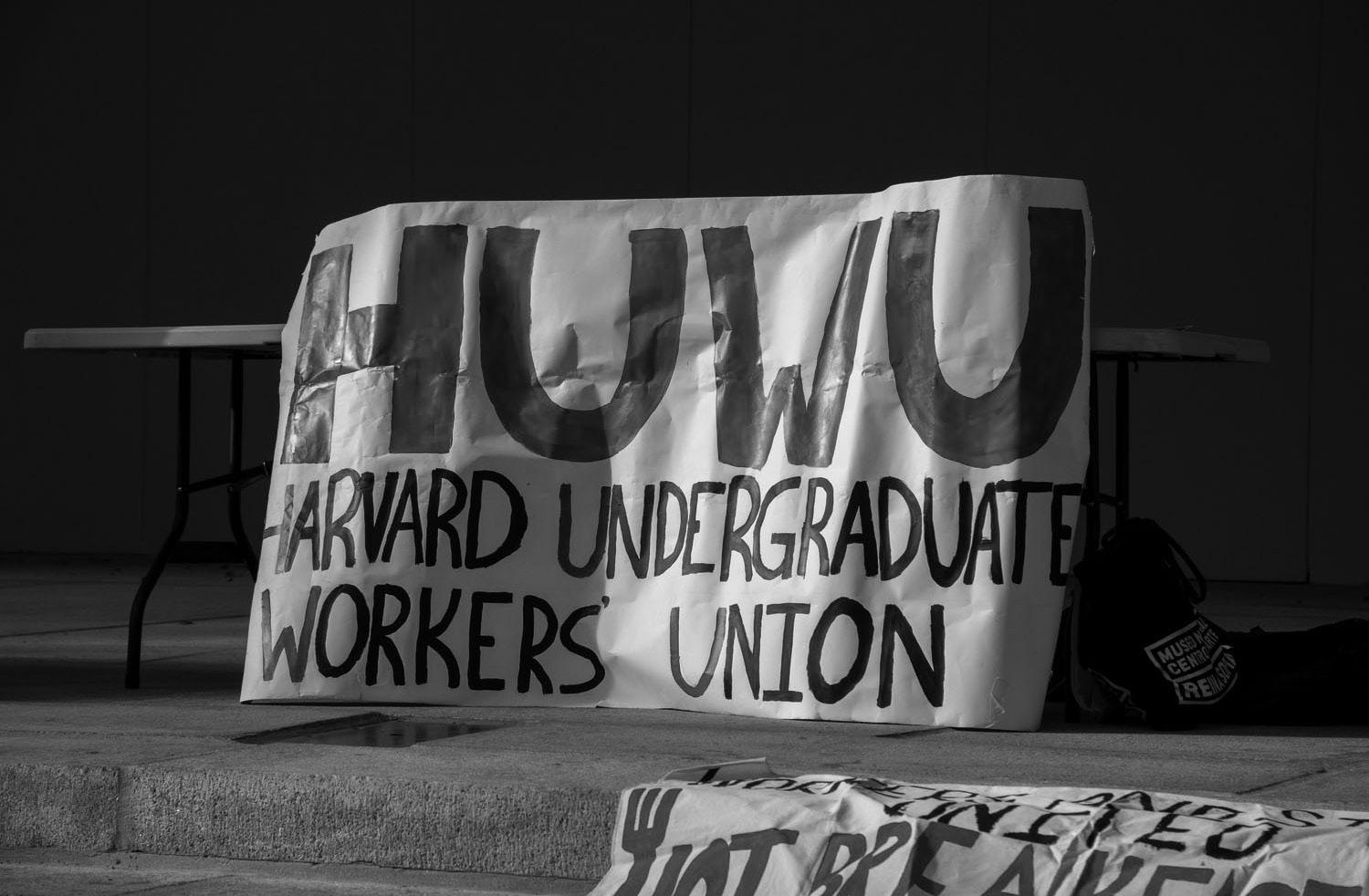
bring wages and other financial articles to the table after the others have been negotiated. Some of the proposed articles have already proved contentious. Requests for mandatory first-aid training for each union workspace have been repeatedly rebuffed by the University, which also coun-
schools have reduced their staff numbers, and how many employees they have laid off. The Harvard Kennedy School announced that it was laying off staff over the summer, and the School of Public Health also reduced employee numbers last spring.
Parkes’ email cited an increase in the federal tax on Harvard’s endowment income, an anticipated reduction in federal agencies’ reimbursement rates for indirect research costs, and “changes to the allocation of research funding” as
financial pressures. The layoffs are the latest indication that a judge’s order restoring billions of dollars in multi-year federal funding, which was frozen by the Trump administration in May, has not marked the end to Harvard’s funding troubles.
Parkes’ message also hinted at underlying pressures on SEAS’ finances, which he described as a longstanding problem. “SEAS has been facing significant financial challenges for years,” he wrote. “While we are
making progress towards stabilizing the School’s finances, the future we have been preparing for has changed.”
Parkes mentioned several additional cost-cutting measures aimed at shoring up SEAS’ budget, including cutting non-personnel expenses, pausing non-essential capital projects, freezing pay increase for staff and faculty, and reducing the amount of space leased by SEAS. When HUCTW asked about the financial rationale for the decision, SEAS administrators “were unable
BY HUGO C. CHIASSON AND AMANN S. MAHAJAN CRIMSON STAFF WRITERS
Harvard custodians presented a suite of economic proposals to University officials at their first bargaining session on Tuesday, asking for raises to compensate for inflation since the pandemic began.
Roughly 800 campus custodians, represented by the Service Employees International Union’s 32BJ, are covered by a contract that expires on Nov. 15.
Alongside demands for wage increases and stronger financial retirement options, workers asked Harvard to contribute to a joint union-employer legal fund for immigration-related issues in the wake of the Trump administration’s crackdown on international workers.
The University did not respond in the meeting to the proposal, but Harvard negotiators proposed freezing the union salaries of its non-tenure-track faculty, which are negotiating their first contract, last week. The faculty union was offered roughly 2 percent raises each in the remaining years of their contract, though inflation has hovered near 3 percent since 2023.
Harvard is currently under the combined financial pressure of a hefty endowment tax hike and federal funding cuts.
“It will be a fight because Harvard is saying that even though they’re having tough times, that we shouldn’t take advantage of the moment,” 32BJ Executive Vice President Kevin Brown said at a rally after the bargaining session.
“We’re not taking advantage of anything.”
Cambridge Mayor E. Denise Simmons, who attended the ral-
tered an article on non-discrimination protections with a shorter policy mirroring the one it proposed to grad student and non-tenuretrack faculty unions. Rawal added that the University has been “taking out things that are really common sense” in its counterproposals to the union. “It’s just hard to go negotiate with that,”
hugo.chiasson@thecrimson.com amann.mahajan@thecrimson.com

ly, added that it was her “expectation that this University comes to the bargaining table with the spirit of fairness and the spirit of equity and the spirit of humanity.”
While issues like wages are renegotiated in each contract cycle, both the proposals for a legal fund for non-citizen workers and access to different retirement plan options would be new for the custodians’ contract with the University, according to union spokesperson Franklin Soults.
The proposal for the joint legal fund mirrors what 32BJ already has in place in other workplaces it represents, asking Harvard to help defray the cost of hiring lawyers should employed custodians face immigration challenges.
“The change of the cost of living, the inflation, the economic uncertainty and the political situation have made it much more difficult for us to take care of our loved ones the last few months,” custodian Mario Arevalo said, in Spanish, at the rally.
Brown added that the union also hopes to address sexual harassment protections and overnight shift pay in upcoming proposals.
Harvard spokesperson Jason A. Newton wrote in a statement
that the University “recognizes the long history of significant contributions to our community from the members of SEIU 32BJ.”
“As this negotiation on the latest contract begins, we will approach these discussions with a commitment to good faith as we work to find agreement on a contract that is beneficial to all,” he wrote.
Custodians last negotiated a contract coming out of the Covid-19 pandemic, another period of intense financial uncertainty for the University. The opening of negotiations were marred by internal union tensions as workers alleged union staff shut their bargaining committee out of negotiation preparations.
Harvard custodians also submitted a petition to remove 32BJ as their representative this summer, but withdrew it soon after. At the close of the rally, which drew a crowd of roughly 30, Brown again called on the University to prioritize its workers.
“What it says on these gates is ‘Veritas, Veritas,’ truth,” Brown said. “Well, Veritas, Veritas, now it’s time to pay us.
or unwilling” to provide the union with data and reasons for the cuts — including future budget deficit estimates and a total number of necessary layoffs, according to the union’s email this morning.
“These cuts to faculty and student services and other core SEAS infrastructure, which do not appear to have any solid basis in current quantified realities, will have a profound negative impact on the quality of teaching, research, and learning at SEAS,” union leaders wrote.
In the letter, the union called on its members to email SEAS administrators in opposition to the staffing cuts and to inform the union of any cases of “SEAS spending on non-critical activities,” listing food at conferences and payments to private consultants or agency-based temporary employees as examples. A SEAS spokesperson declined to comment on the layoffs.
The Supreme Judicial Court of Massachusetts allowed on Monday lawsuits against Harvard over mishandling of human remains by a former morgue manager to proceed to discovery.
The decision comes more than a year after affected families appealed a Suffolk Superior Court judge’s dismissal of their case against Harvard and employees of its Anatomical Gift Program.
Families sued Harvard and AGP employees, Mark F. Cicchetti and Tracey Fay, after former HMS morgue manager Cedric Lodge was charged with selling and trafficking human remains of their relatives from the morgue in 2023. Lodge pled guilty in May, and admitted to selling and transporting stolen body parts across state lines.
“There were little to no controls in place to prevent this harm from occurring at Harvard,” Justice Scott L. Kafker wrote in the unanimous decision.
The case will now head back to Suffolk Superior Court, where the families’ representation will have an opportunity to obtain evidence from Harvard.
While actions against Harvard and Cicchetti were allowed to move forward, the court up-
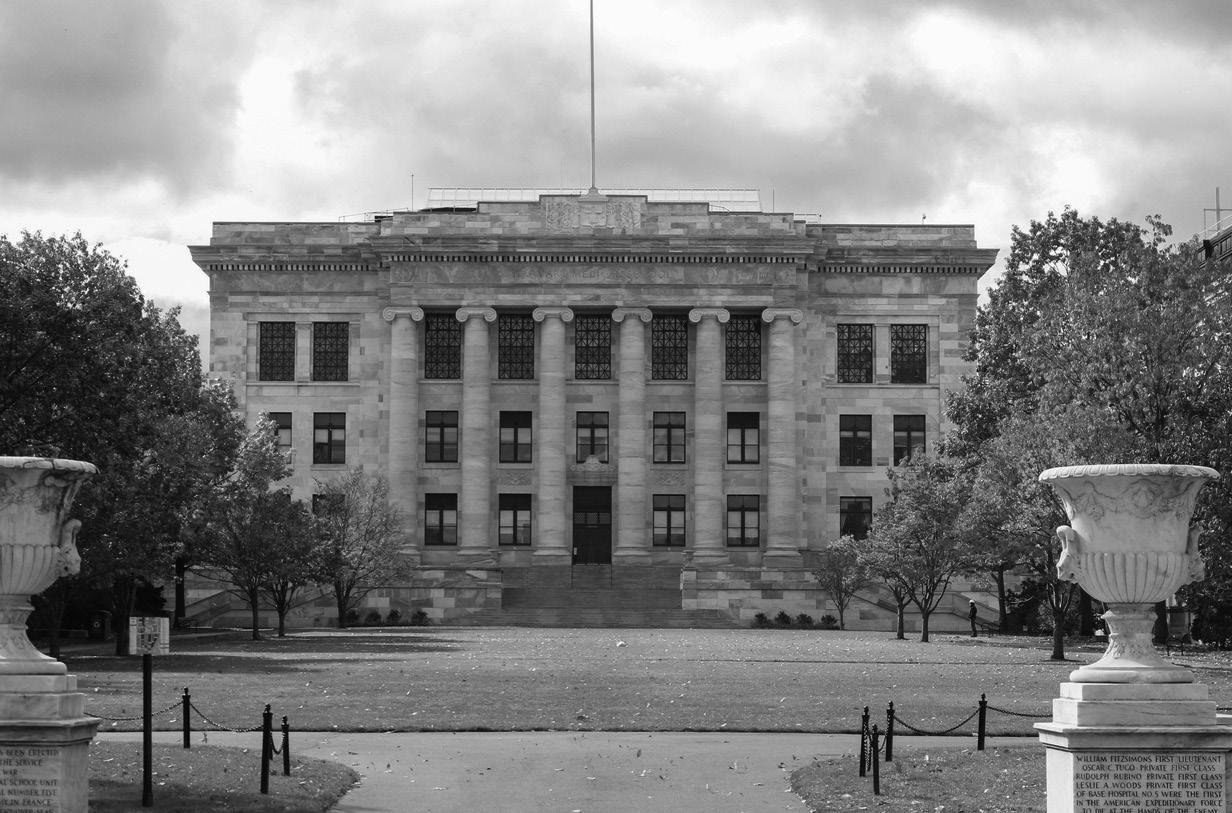
held the dismissal of the case against Fay, writing that the families failed to prove “peculiarly pervasive noncompliance” on her part. Lawyers for Harvard argued that they were not liable because they were unaware of Lodge’s illegal activity and acted in “good faith” under Massachusetts’s Uniform Anatomical Gift Act.
Kafker, however, pointed to previous examples of morgue theft at universities and ruled that “Harvard’s extraordinary failure to adequately supervise the morgue’s operations and properly protect the donated remains” were sufficient to allege HMS demonstrated a lack of good faith in its actions.
The court also cited Har-
vard’s disregard of “red flags” like Lodge’s “Grim-R[eaper]” license plate as demonstration of the school’s lack of good faith. HMS spokesperson Laura DeCoste wrote in a statement that “Cedric Lodge’s criminal actions — which, as the federal indictment against him states, were ‘without the knowledge or permission of HMS’ — were abhor-
rent and inconsistent with the standards and values that Harvard, our anatomical donors, and their loved ones expect and deserve.”
“We reaffirm our deep sorrow for the families of donors who may have been impacted, and for the uncertainty and distress they are facing,” she added. After learning of the allega-
tions against Lodge in early 2023, Harvard President Alan M. Garber ’76 and HMS Dean George Q. Daley ’82 announced the creation of a panel to evaluate the AGP’s policies and practices. The panel concluded that several additional security measures could have been taken — including improved background checks and more thorough record keeping for remains. HMS created a task force to make changes.
Jeffrey N. Catalano, a lawyer for the plaintiffs, said the Monday decision from the Suffolk Superior Court does not conclude that Harvard acted in bad faith, but that there are sufficient facts to show that the institution had failed to act in good faith.
“It’s the responsibility of institutions, and in this case Harvard, we allege, to do everything reasonable to ensure that the remains of those who have generously donated their bodies to science and research are respected and treated with dignity all the way up to
at least one high school sophomore was also listed.
“All content is sourced ethically from publicly available information,” Rohra wrote on the website’s “About” page, which was active Sunday evening.
In an interview with The Crimson, Rohra said he attended HackHarvard in hopes of finding a business partner for his startup, which uses artificial intelligence to detect computer-generated text and speech.
“I thought, ‘Well, what should I make that helps me connect with other people?” Rohra said. “I wanted to make something that connects with LinkedIn and with Harvard.”
“I remember Mark Zuckerberg and all of this was connected, so I’m like, ‘What if I recreate Facemash?’” Rohra added. The new Facemash closely replicated the appearance of the original site, down to the message beneath its header.
“Were we let in for our looks?
No,” it read. “Will we be judged on them? Yes.”
When Zuckerberg created the original Facemash in 2003, he hacked into online directories for nine of the 12 undergraduate houses and uploaded the photos to his website. In addition to facing fierce backlash from campus student groups, Zuckerberg was accused of violating privacy and breaching copyright agreements by the Harvard College Administrative
Board. But it is unclear whether Rohra, who does not have any ties to Harvard, or HackHarvard will face any disciplinary action for the website’s creation. College spokesperson Jonathan Palumbo did not immediately respond to a request for comment about whether the new Facemash violated College policies.
Rohra said he used Puppeteer, a JavaScript library which enables users to automatically run scripts on web pages, to scrape LinkedIn profiles. He then cleaned the dataset to mainly include Harvard affiliates with class years from 2025 to 2029.
He said people at the HackHarvard hackathon, including the Harvard students running the event, gave him positive feedback on his idea when he gave them a demonstration on Saturday.
“I went to HackHarvard’s organizers,” he said, “and they loved it.” Hugo Nunez ’26, one of HackHarvard’s directors, wrote in an email on Monday that the project was “not endorsed by or representative of HackHarvard or its values.” He added in a later statement that organizers disqualified Facemash from being judged during the awards process, but not immediately after Rohra submitted his project online.
“Since we can’t filter all of them for plagiarism/code of conduct/etc in the moment, disqualification is enforced during judging/delibera-
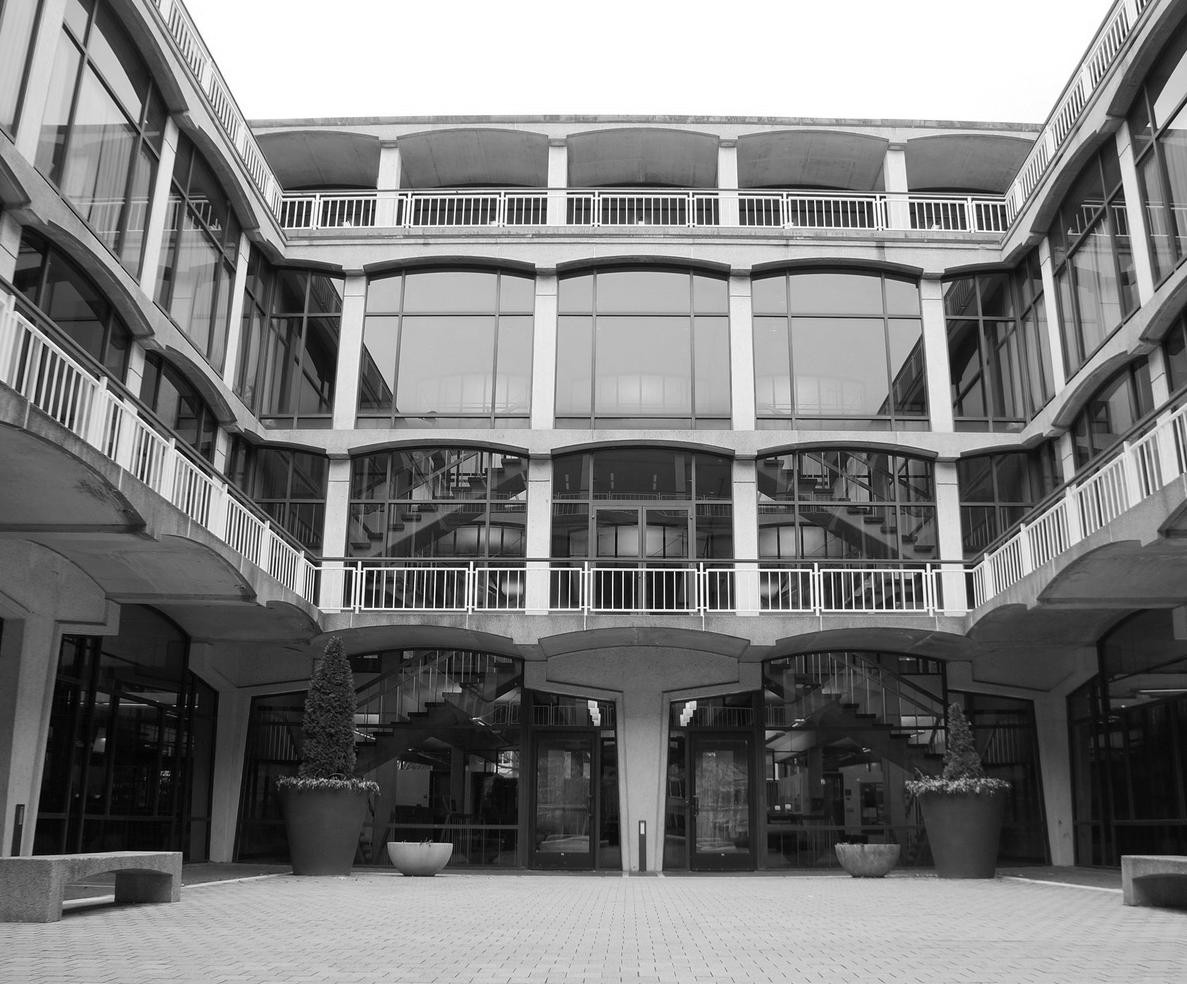
tion when making considerations for awards,” Nunez wrote. “Facemash was removed from the deliberation process as reflected by the judging CSV files.”
HackHarvard manually changed the spreadsheet and did not have a written and timestamped record that the organization could make available to The Crimson, Nunez wrote. Rohra said on Monday that HackHarvard organizers did not inform him of the disqualification.
On Monday morning, after this article’s publication, Jonathan Gottfried, a co-founder of Major League Hacking — an organization that helps run student hackathons and sponsors HackHarvard — sent Rohra an email informing him that Facemash had violated the event’s code of conduct.
“Rating individuals based on physical attractiveness is inherently objectifying and creates a sexualized environment, which is not appropriate for hackathons,” Gottfried wrote. “Additionally, using people’s photos without their consent for such a use case constitutes harassment and a violation of their privacy.”
When Rohra’s website made its way to Harvard’s broader student body on Sunday, it drew similar condemnation.
After learning about Facemash’s return from a friend, two Harvard juniors with computer science experience decided to take matters into their own hands, calling the website’s premise “sexual harassment, definitionally.”
The two students were granted anonymity to discuss their effort to take down the website because they feared potential legal repercussions.
The juniors realized that Rohra had not encrypted the database tallying each person’s votes, enabling them to edit the information stored within it. They wrote a program that cleared the votes and replaced each person’s picture with a black square, making the website inoperable.
Rohra said the dataset consisted of 1,560 LinkedIn profiles. The two juniors said 44,000 votes had been cast and 870 LinkedIn profiles were listed at the time they took the website down.
Less than an hour later, Facemash was back — this time with
additional security. Shortly before midnight, the website disappeared again, displaying the “down for maintenance” message under a “Facemash” header.
Still, the complete dataset — including individual students’ Elo scores, vote breakdowns, and rankings — could be accessed by anyone who entered a single line of code into their computer’s command line for a span of several hours on Sunday. A spreadsheet of the data was circulated on Sidechat Sunday night.
Laura B. Martens ’27, a Crimson Arts editor who was listed on Facemash, said she was disgusted by the website and called the effort to bring it down an act of “vigilante brilliance.”
“The whole idea of literally comparing photos of women, it’s just — I thought we’d moved past this as a society,” she said.
Eunice S. Chon ’25-’26 said she found the website’s claim that the design was ethical to be “ironic in a pretty jarring way.”
“I have never put any of my content with the intention of being judged for my physical appearance,” she said. “I think it’s offensive in every way possible.”
Rohra said he understood that some people might have privacy concerns and was open to making changes if needed.
“That’s our top priority,” he said. “If they don’t want to be included in that stuff, I would generally just remove them from the database.”
When Facemash returned after being taken down by the two Harvard juniors, the website contained a new page where users could request to be removed. But upon submitting the removal form, users were greeted with an error message.
When asked if he would consider bringing Facemash back, Rohra said he would “leave it to the public opinion.”
“If I get a majority of people saying that, ‘Hey, we don’t want it,’ it doesn’t make sense for me to keep it up,” he said. “And if the public wants it, then, yeah, maybe we could develop something that people are actually interested in using.”
After a Harvard Law School visiting professor was arrested for shooting a pellet gun near a Brookline synagogue last week, synagogue leaders told affiliates in a Sunday email that the incident “does not appear to have been fuelled by antisemitism.”
Carlos Portugal Gouvea, a visiting professor at Harvard Law School, was arrested on Wednesday night for firing a pellet gun near Temple Beth Zion on the eve of Yom Kippur, the holiest day in the Jewish calendar. The pellets damaged a car window. Gouvea told police he was hunting rats.
The incident drew more than a dozen officers to the synagogue on Wednesday night, though police told local news outlet Brookline.News last week that it did not appear Gouvea was targeting Temple Beth Zion.
Synagogue president Larry Kraus and executive director
Benjamin Maron wrote in the email to Temple Beth Zion affiliates, which was reviewed by The Crimson, that “from what we were initially told by police, the individual was unaware that he lived next to, and was shooting his BB gun next to, a synagogue or that it was a religious holiday.” Synagogue leadership and the Brookline Police Department did not respond to requests for comment on Sunday at noon. Gouvea was charged on Thursday with illegally discharging a pellet gun, disorderly conduct, disturbing the peace, and vandalizing property. He will appear for a hearing at the Brookline District Court in November. Kraus and Maron added that the synagogue was placed “on lockdown” until police searched the area and Gouvea was arrested. Jeff Neal, an HLS spokesperson, confirmed in a Saturday email that Gouvea “has been placed on administrative leave as the school seeks to learn more about this matter,” but did not specify when the University was made aware of Gouvea’s arrest. An investigation into the incident was pending as of Saturday, and no disciplinary action had been taken against Gouvea.
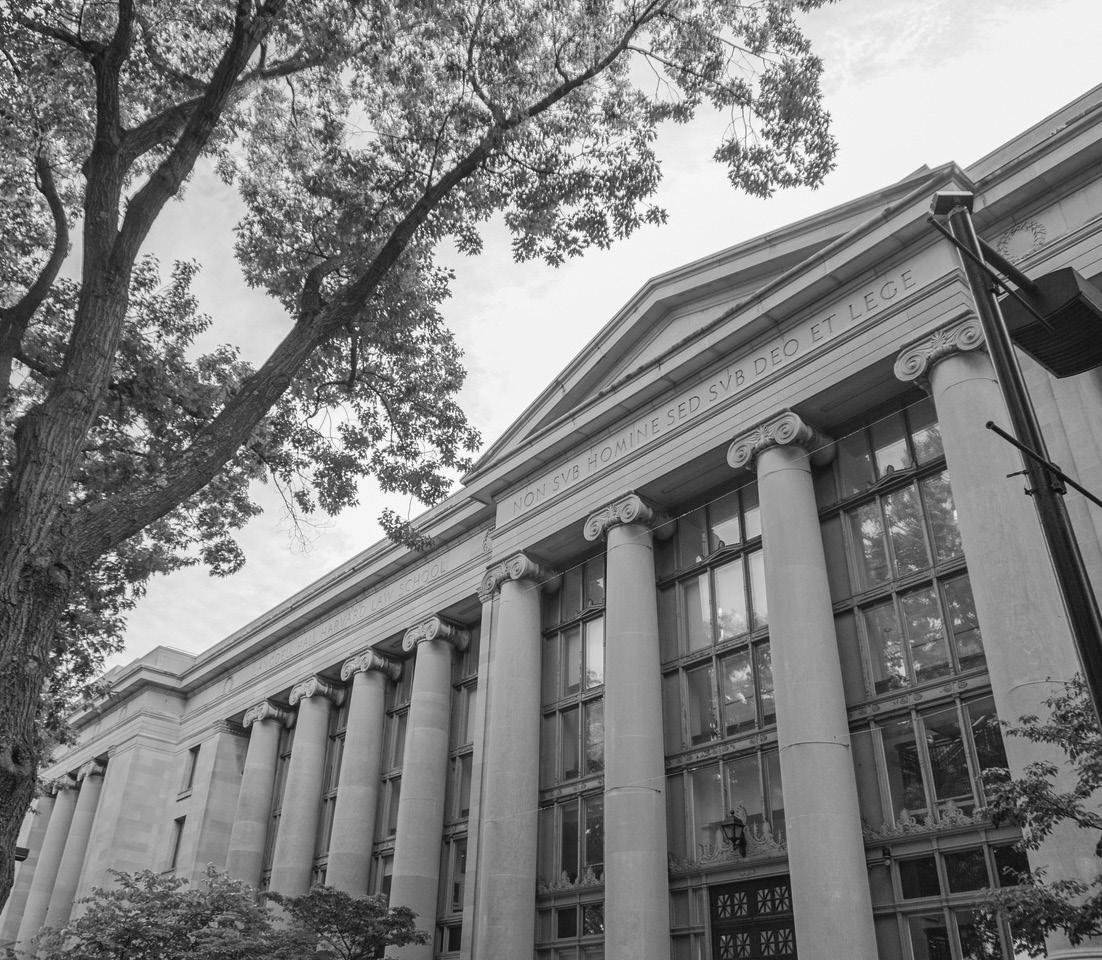
BY BERNHARD NICKEL
This July, I appeared in federal court, swearing to tell the truth, the whole truth, and nothing but. I had not planned on it. But given the opportunity, I had to take it. Let me tell you how I got there and why it was so important.
I came to the US almost exactly 30 years ago as an international student from Germany on an F-1 visa. While I had that status, entering the country was a moment of anxiety and fear. Before reaching the border, I’d obsessively recheck all my documents and review in my mind whether I might have violated some rule, no matter how minor. And still, I would stand before the immigration officer, fumbling my documents, stammering through answers, sweat running down the back of my neck. Most times, things went smoothly. But sometimes, an officer’s bad day meant invasive questions. And every time, it was clear that I was at the mercy of these agents with little or no recourse. I stopped feeling that way once I received my Green Card. I felt like an American in all but the color of my passport. And I was glad for it. I love this country, for all its many faults. I was welcomed, found a career and identity I never could have imagined for myself before, found my family and built a life. I’m grateful for the freedoms America has given me, not just the formal ones enshrined in law, but the everyday lived experience of possibility. But I started feeling the old fear and anxiety again earlier this year when the federal government began to target students associated with pro-Palestine advocacy, such as Mahmoud Khalil and Rümeysa Öztürk, for detention and deportation. Instead of only feeling worried and afraid for a couple of hours before entering the country, now it was almost constant. Might something I’d said or done light up a flag somewhere in the immigration bureaucracy? My first reaction to seeing my name in public was panic. At night, I’d lie awake reviewing the days.
Earlier this year, the American Association of University Professors brought a suit, AAUP v. Rubio, challenging the federal government’s ideological deportation policy on the grounds that it violates First Amendment rights. I had the opportunity to testify and give concrete, detailed descriptions of the effects of the government’s policy. Last week, U.S. District Court judge, Judge William G. Young ’62, handed down his ruling — an unqualified victory. As he wrote in his decision, non-citizens possess “the same free speech rights as the rest of us,” and “unequivocally” so. We all know that the last word on this particular policy has not been said. But even if this case is
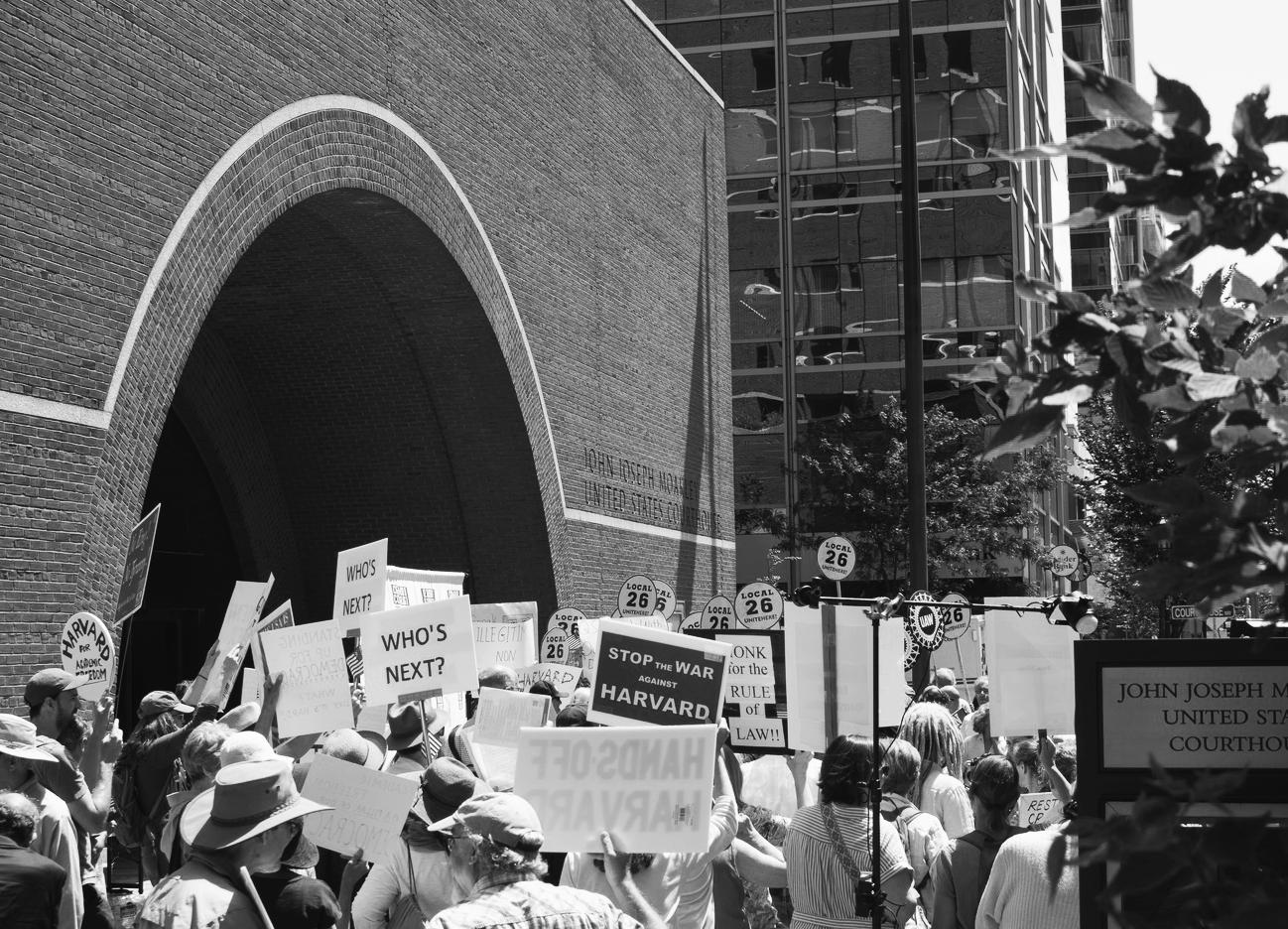
overturned, or if no effective remedy is found, it’s vital that those of us who oppose the government’s policies and overreach keep on fighting. We don’t know what will break through and resonate with the public. We don’t know what unanticipated effects might come up. In our case, the legal team managed to unearth and make part of the public record shocking details about how the agencies involved made their enforcement decisions.
Deciding to testify was difficult. I spent a lot of time talking about it with my daughter since what I do affects her as well. But once I made the decision, I felt much better. My fear and anxiety lessened, and I could sleep through the night again. I had reclaimed at least some of my political agency. I did not simply have to keep my head down and hope that nothing bad would happen.
For it already had. None of us are going to come out of this unscathed. The fear and uncertainty felt in many communities today affects us all. That is the central premise of our lawsuit. We simply do not have a choice about whether we’re going to take a hit. We do have a choice about how to respond.
I joined the AAUP shortly after its Harvard chapter was founded because I wanted to connect with people who shared the values I hold dear — values that are under attack and need defending. I saw the opportunity to participate in the trial because of that connection. And because of that connection, I felt able to take a risk worth taking. I didn’t have to figure it all out on my own. There would be friends who affirmed the value of the fight, lawyers to prepare me for deposi -
BY SYLVIA A. LANGER
In September, Harvard College Dean David J. Deming condemned the killing of Charlie Kirk and vowed to protect conservatives on campus. He insinuated Kirk’s speech could be used as a model for Harvard, praising his way of interacting with those with whom he disagreed.
But Kirk’s — and Harvard’s — conception of discourse is missing one key factor: a moral compass. Kirk’s language was inflammatory at best and dangerous at worst. He spread hateful rhetoric and misinformation with seemingly little care or concern for who he hurt in the process. He was, by no means, a model for respectful, productive discourse. Deming chose to do more than memorialize Kirk as a figure — he memorialized his incendiary style of rhetoric, a complete reversal of the College’s supposed mission of advancing empathy and
equity. The incident is one in a long line that makes a central problem clear: Harvard cannot agree on its own core values. It’s no secret that, despite winning in court, Harvard has quietly acquiesced to the Trump administration’s demands on DEI. Thus far, Harvard has discontinued funding for affinity graduations, removed two professors’ Black Lives Matter banner, and followed the lead of major corporations in terminating some of its own equal opportunity initiatives. It seems that Harvard is unwilling to defend its programs — ironically, designed to condemn hate and combat racism — against baseless accusations of fomenting hate and furthering racism. In public, the University has committed itself to opposing Trump’s attack on higher education. In private, the University is following his lead. Either the school is abandoning its own moral compass or suffering from the lack of one altogether.
Contrast this picture with that of five years ago. In the wake of the killing of George Floyd, Harvard
was in full support of all things DEI. Multiple departments vowed to dismantle systemic racism and promised adherence to anti-racist principles.
Former Harvard President Lawrence S. Bacow appointed outside experts to review allegations of discriminatory practices in HUPD with the aim of addressing racial injustice. Some Harvard scientists even stopped work for a day to engage with the growing racial justice movement. These actions — however performative or inconsequential — are virtually unthinkable now. If Harvard won’t even allow a Black Lives Matter banner to remain displayed in the Northwest Building window, it begs the question: Was Harvard ever even committed to the movement in the first place? Or are all of the University’s positions motivated by ever-shifting political winds as opposed to real values?
Moreover, consider Harvard’s response to pro-Palestine activism. Mere months after protests began, the University completely reinterpret-
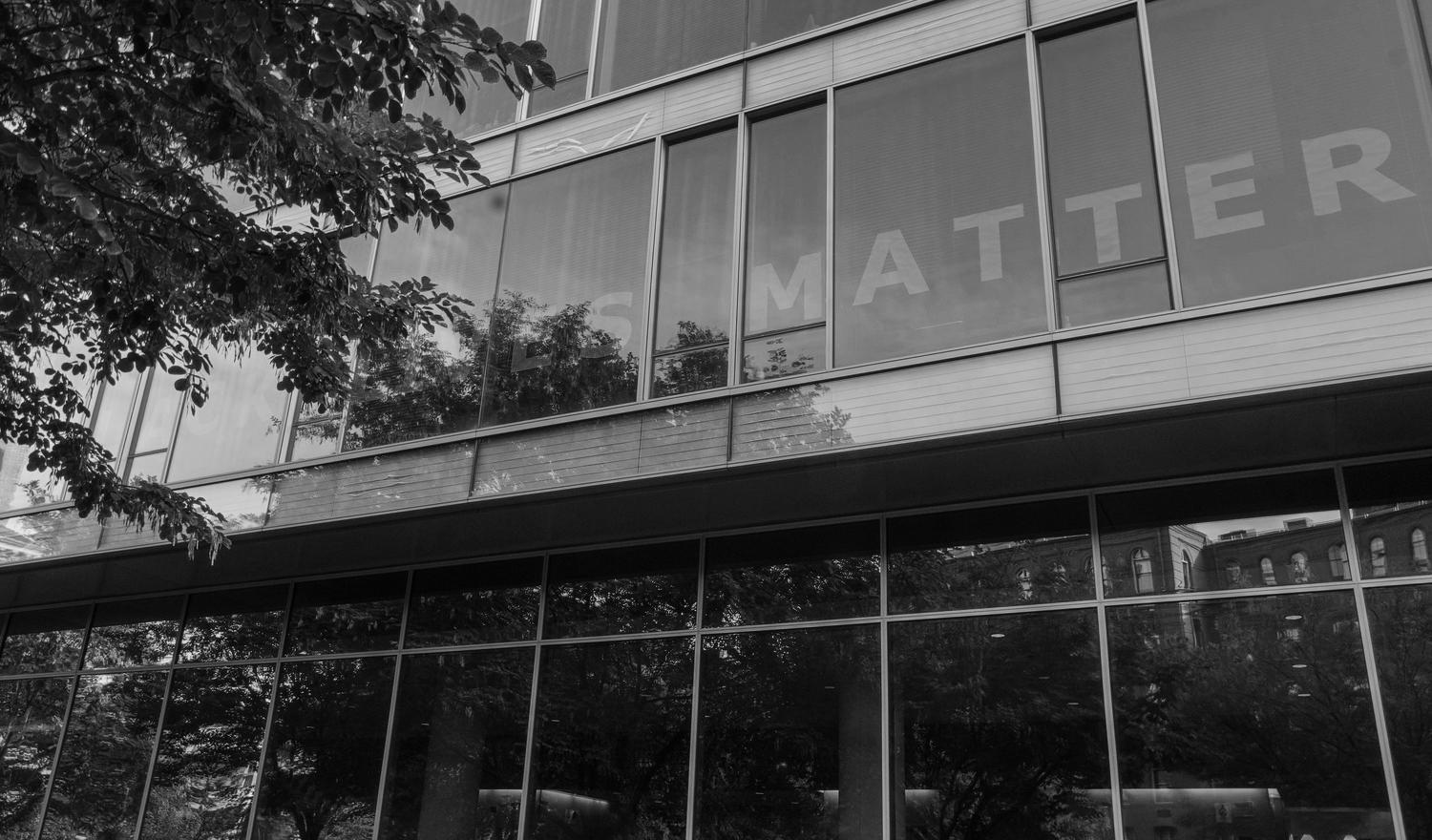
tions and testimony, allies inside and outside the courthouse. I am glad that I could re-learn this crucial lesson. Surround yourself with the right people. Stand in solidarity with them. Courses of action will make themselves known to you, along with the resources you need to follow through. Figuring out what to do isn’t something any of us needs to do alone.
Remembering this fact, along with seeing so many others insisting on their own agency and voice, has been a deep well of hope.
– Bernhard Nickel is a Professor of Philosophy at Harvard University. He is a member of Harvard’s chapter of the American Association of University Professors (AAUP).
ed its over 50-year-old University-wide Statement on Rights and Responsibilities, the policy governing campus protest. After students set up encampments on the Yard in support of Palestine, Harvard issued a new set of rules and regulations further restricting protest. Despite avoiding a ban on organizing outright, Harvard effectively silenced speech with which it appeared to disagree. Students were initially placed on probation or suspended (many such decisions were later recanted) for actions that might not have placed them in jeopardy a mere decade ago.
Alongside protest restrictions, Harvard recently adopted a new definition of antisemitism to include some forms of criticism of Israel. The decision was delivered as part of a settlement on a lawsuit, marking the change as more a legal concession than a substantive evolution in the school’s ideology. Harvard constantly defines and redefines discrimination again and again to fit its own needs, rather than the people it supposedly serves or the justice it claims to create.
Moreover, the more policies and definitions that Harvard adopts, the less credibility each one has. When new rules are crafted and old ones revised to fit the current political climate, it only reveals how empty the sentiment behind them was in the first place. How can we place our trust in an institution that could throw us under the bus at any moment?
We populate Harvard’s classes, clubs, and sports teams. If the University is not guided by articulatable moral principles and is willing to upend student life to fit its own interests and desires, how can we be certain that we will be supported, that our organizations will remain in place, that our administration will protect us from harm? Harvard could have remained steadfast in the fight for a brighter future, but instead chose to prove its own intellectual fragility. It caved to the current political moment, rapidly reorienting its beliefs to best serve its own financial interests — more emblematic of a business desperate to remain afloat than
BY M. AUSTEN WYCHE
Harvard preaches free speech, but fails to live up to these ideals.
Two weeks ago, The Crimson reported that Harvard Medical School administrators nixed a potential speaker for their 2024 Class Day due to concerns over her pro-Palestine posts on social media. In their justification, the Medical School cited a desire to avoid the perception of aligning with a public stance on the war in Gaza as a significant influence on the choice of speaker.
But concerns about public image don’t erase the fact that administrators chose to stifle a speaker’s voice to prevent the expression of a legitimate, albeit controversial, perspective. By deplatforming a potential speaker, Harvard has contradicted the values it purports to hold.
Over the past year and a half, Harvard has championed “Intellectual Vitality,” an initiative aiming to encourage the free exchange of ideas on campus. From requiring first-year students to engage in an orientation module from the Constructive Dialogue Institute to creating a student advisory board to promote discourse initiatives, Harvard has introduced a variety of measures aimed at facilitating conversations, promoting constructive disagreement, and exposing students to different ideas.
When we deplatform speakers, no matter how inflammatory their perspective might be, we start down a slippery slope of speech suppression.
Yet others may argue that the Medical School’s decision was wise considering the popular criticism that Harvard has allowed pro-Palestinian activism to run rampant, the University cannot preach the ideals of free speech, and then ignore them whenever it is politically expedient. Critics will likely point to Harvard’s position of institutional neutrality as a prudent reason to cancel the graduation speaker, but there was no indication she would be discussing Pro-Palestine speech. Even if she did, that should be within her discretion to do so.
Institutional neutrality should not be used as a pretext to deplatform a speaker solely based on her ideology.
Free speech, as defined by our legal system, includes the right not to speak, the right to use certain offensive words and phrases to convey messages, and the right to engage in symbolic protest. Even if private universities aren’t directly bound by the First Amendment in the same way as public institutions, they should still seek to emulate it.
Throughout my life, I have sat through numerous speeches I vehemently disagreed with. From listening to politicians at the Institute of Politics to attending the House Oversight Committee and watching Jim Jordan (R-OH) discuss R. Hunter Biden, engaging with different perspectives has proven to be a valuable experience. Even if you fundamentally disagree on the worldview of another person, hearing the formulation of their ideas can help you clarify and better defend your own arguments.
Even if a speaker at an event makes a controversial statement — perceived as the truth by some and offensive by others — it offers an opportunity for us all to reconsider our own perspectives.
Intellectual vitality calls for the fundamental principle of uncomfortability. To challenge one’s own perspective requires one to actively consider opposing viewpoints and how other individuals come to their own, different, conclusions. What
better way to exercise that ability than by listening to a speech with which you fundamentally disagree?
HMS’ decision raises important questions about what speech Harvard will and will not allow.
If former President Barack Obama desired to give a speech at a Harvard commencement ceremony, should we reject the offer based on the idea that we would be politically aligning our University with the Democratic Party? Similarly, if former CDC Director Rochelle P. Walensky wanted to address the T.H. Chan School of Public Health, would it be acceptable to advertise an official whose tenure was politically controversial due to tensions over the Covid-19 epidemic?
Of course not. Just because pro-Palestine speech is more controversial than these examples, that does not mean we should hold it to a different standard. This is the fundamental premise of free speech Harvard fails to commit to — the willing-
ness to broadcast speech that may be controversial or even offensive to some. As Harvard continues to pursue intellectual vitality, the culture of free speech on our campus must be fundamentally revitalized. We must commit ourselves to hearing different viewpoints, no matter how detestable we find them to be. With the exception of violence-inducing speech, opening our ears to diverse viewpoints — instead of filtering our platforms to only those we find acceptable — will promote true intellectual
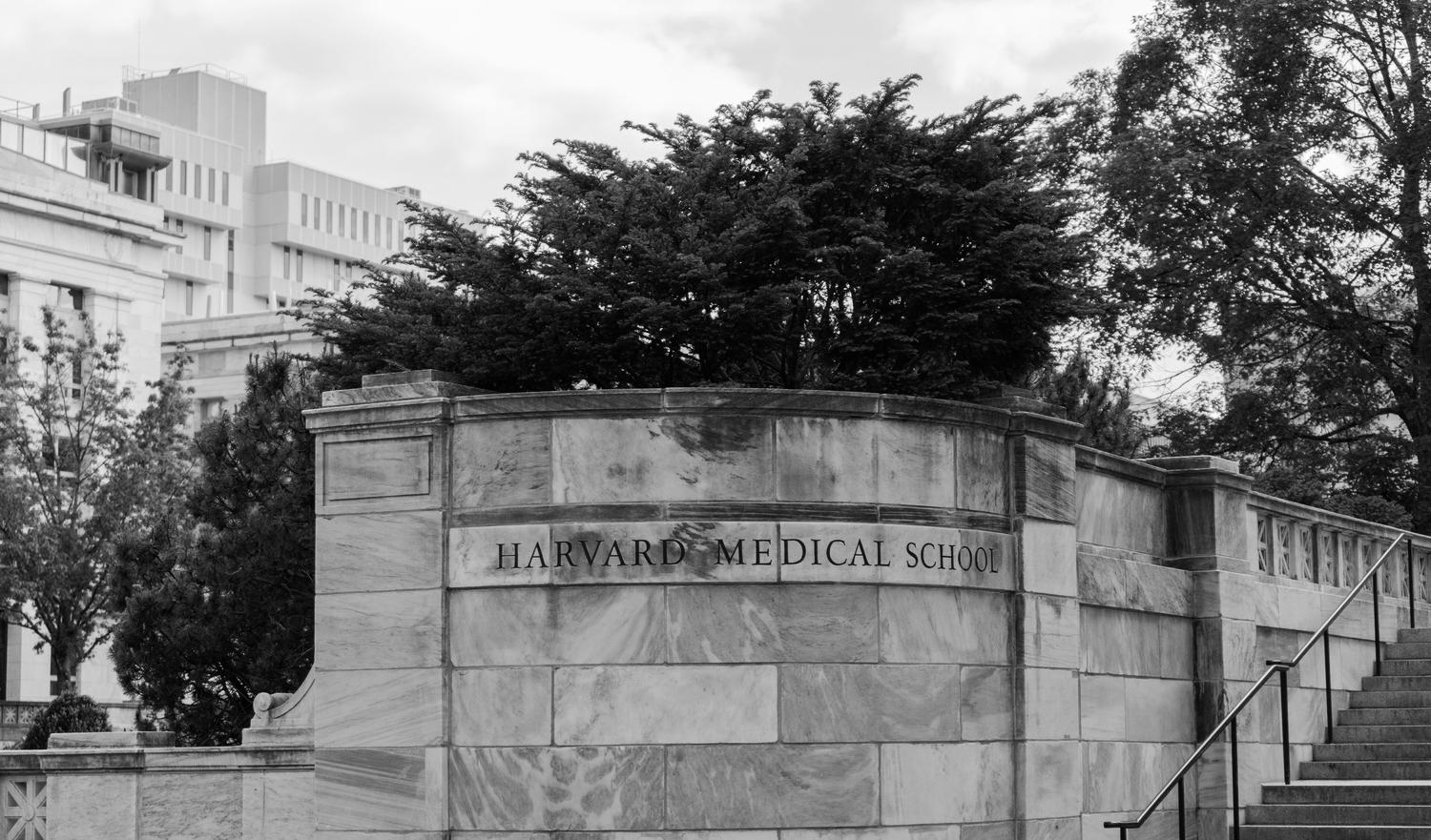
BY ADAM N. CHIOCCO
Protest is a sign of a healthy speech culture, and Harvard is not well. Protests at Harvard are almost as old as the University itself. Our student body has always been impassioned and, at times, quite audacious in its demonstrations — look no further than when the entire sophomore class dropped out in 1819 to protest poor cabbage soup quality. Over the years, Harvard students have rallied for causes both local and national including peace in Vietnam, the end of apartheid in South Africa, and improved wages for University workers. And for most of the turbulent last couple years, this tradition lived on strongly. However, in recent months, University and Trump administration policies have dampened the spirit of demonstration on campus.
Just two years ago, with Israel’s initial ground invasion of Gaza looming, a pro-Palestine rally on Widener Steps drew over 1,000 attendees. However, this semester — even after a United Nations Commission concurred with the longheld view of campus organizers and myself that Israel is committing genocide — there have been no major student rallies in support of Palestine at Harvard. This absence is not due to diminished resolve — the organizers I know remain as impassioned as ever. The issue is that the risks of and barriers to vocal pro-Palestine speech have become far too high. For instance, participants in the 2024 pro-Palestine encampment in Harvard Yard initially received notably harsher punishment than in comparable past protests like the 1986 anti-South African apartheid “Shantytown” and the 2001 multi-week occupation of Massachusetts Hall for higher wages. These punishments were only walked back after significant outcry from students and rebuke from faculty. Harvard has vastly expanded restrictions on protests since October 2023, and in April placed the Harvard Undergraduate Palestine Solidarity Committee on probation for a rally it did not host — likely a form of precautionary capitulation to the Trump administration. The Trump administration has added a much more existential threat to pro-Palestine speech. From Mahmoud Khalil to Rumeyza Ozturk, the federal government has targeted pro-Palestine international students for detention or removal. Even in light of a recent ruling that Trump’s ideological deportations are unconstitutional, the erratic and autocratic nature of the Trump administration will likely continue to evoke fear of speaking out. Harvard and Trump have both stymied public dissent on Palestine. Palestine is not the only issue with diminished

engagement. When Trump threatened to revoke Harvard’s ability to host international students in April, over 500 affiliates and community members rallied in Harvard Yard. This demonstration came mere days after another rally in Cambridge Common calling on Harvard to defy Trump also drew north of 500 attendees.
This fall, however, a rally hosted by Harvard Students for Freedom following Harvard’s victory in its funding lawsuit featured only about 80 attendees. By contrast, the group’s event in May drew 300 people, even after most students had left campus.
Alongside harsh restrictions on protest, Harvard stifles discourse with its silence about myriad controversial campus reforms. Harvard has publicly opposed Trump both rhetorically and in court while making significant changes in private: Offices for queer students and women on campus have been shuttered, a decades-old mi -
nority recruitment program has been cut — all the while the University keeps its affiliates in the dark about its true intentions.
This week, when asked about such closings, Harvard College Dean David J. Deming declined to provide rationale, stating he was focused on the “needs of our students” rather than the “larger dialogue around these issues.” Even with existential threats to Harvard and higher education, what can students rally for or against when university administrators will not tell us what is actually happening?
It is deeply concerning when a university with such a storied history of activism falls quiet at one of its watershed moments. Students are still taking action — pro-Palestine organizations continue to raise funds for families in Gaza, for example — but a Harvard without banners, chants, and megaphones is a Harvard without a heartbeat.
The University has committed itself to “Intellectual Vitality” to promote challenging conversations on campus. But to be vital means to be lively and active — Harvard cannot fully dedicate itself to such an ideal while stifling the voices of students most active for the causes they care about.
The University must walk back its protest restrictions, resume open and honest dialogue with students, and — though largely out of its control — protect speech on campus from Trump’s ire as much as possible. Dissent must be able to flow freely on campus. With era-defining issues and a centuries-old legacy at stake, Harvard students must be allowed to get angry — and should be angrier that they cannot.
–Adam N. Chiocco ’27, a Crimson Editorial editor, is a Philosophy concentrator in Pforzheimer House.
TESTING. Despite overall improvement on the state exam, Cambridge still saw racial achievement gaps widen on Math and English exams.
Cambridge students’ scores on the 2024-25 Massachusetts Comprehensive Assessment System exam improved, but a closer look reveals deep inequities — with the achievement gap across racial and socioeconomic lines widening from last year.
Across grades three through eight, 58 percent of students in the district met or exceeded expectations on the English Language Arts test, an increase in three percentage points from 2024. And for the math section, 56 percent of students demonstrated proficiency, a two percentage point increase. But these results don’t tell the whole story. The gap between the percentage of Black and white students meeting or exceeding expectations reached 46 percent this year for ELA, an increase of 3. The gap grew by 6 points in math, to a 49 percent difference — with Black students being the only racial group to drop in math proficiency.
“The persistent achievement gaps evident among demographics across Massachusetts,
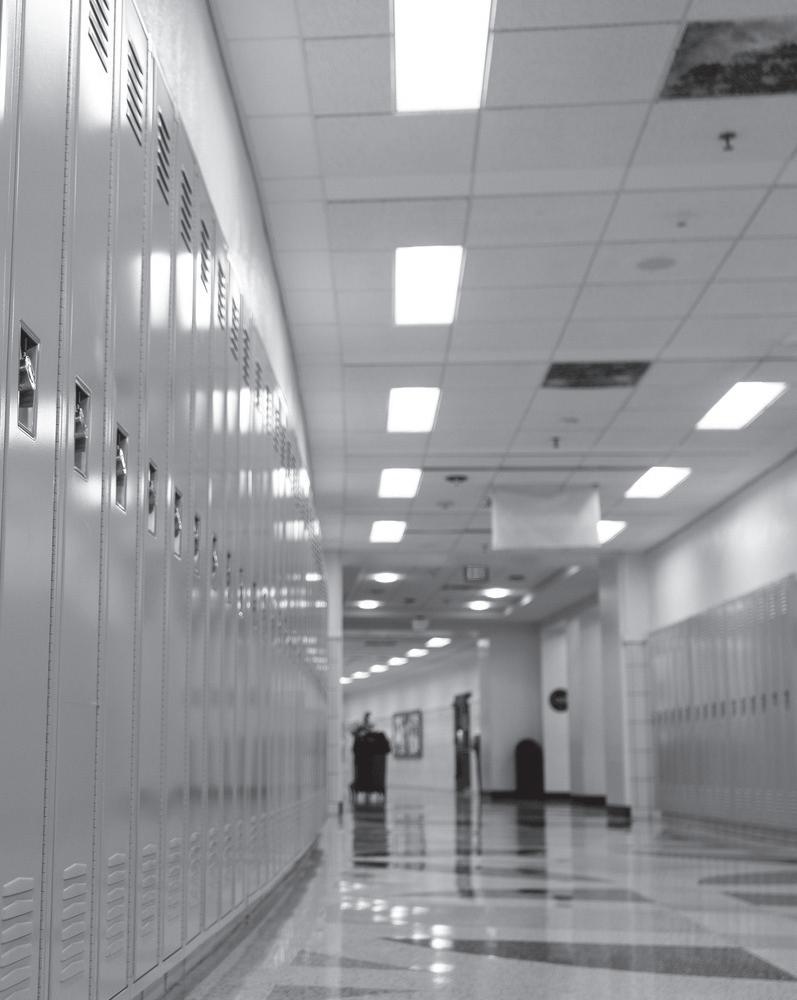
Cambridge included, are deeply frustrating and completely unacceptable,” interim superintendent David G. Murphy wrote in an emailed statement to The Crimson.
“I do not believe there is a magic formula or a flashy new initiative that can ensure all students receive equitable experiences that
position them for post-secondary success. But addressing these challenges are the only way to fully realize the true vision of public education,” he wrote.
The district is wrapping up its yearlong superintendent search, with the School Committee’s vote slated for Monday. During final interviews, School Committee
ly addressing the new superintendent — appointed just the day before — about the work that lay ahead of him.
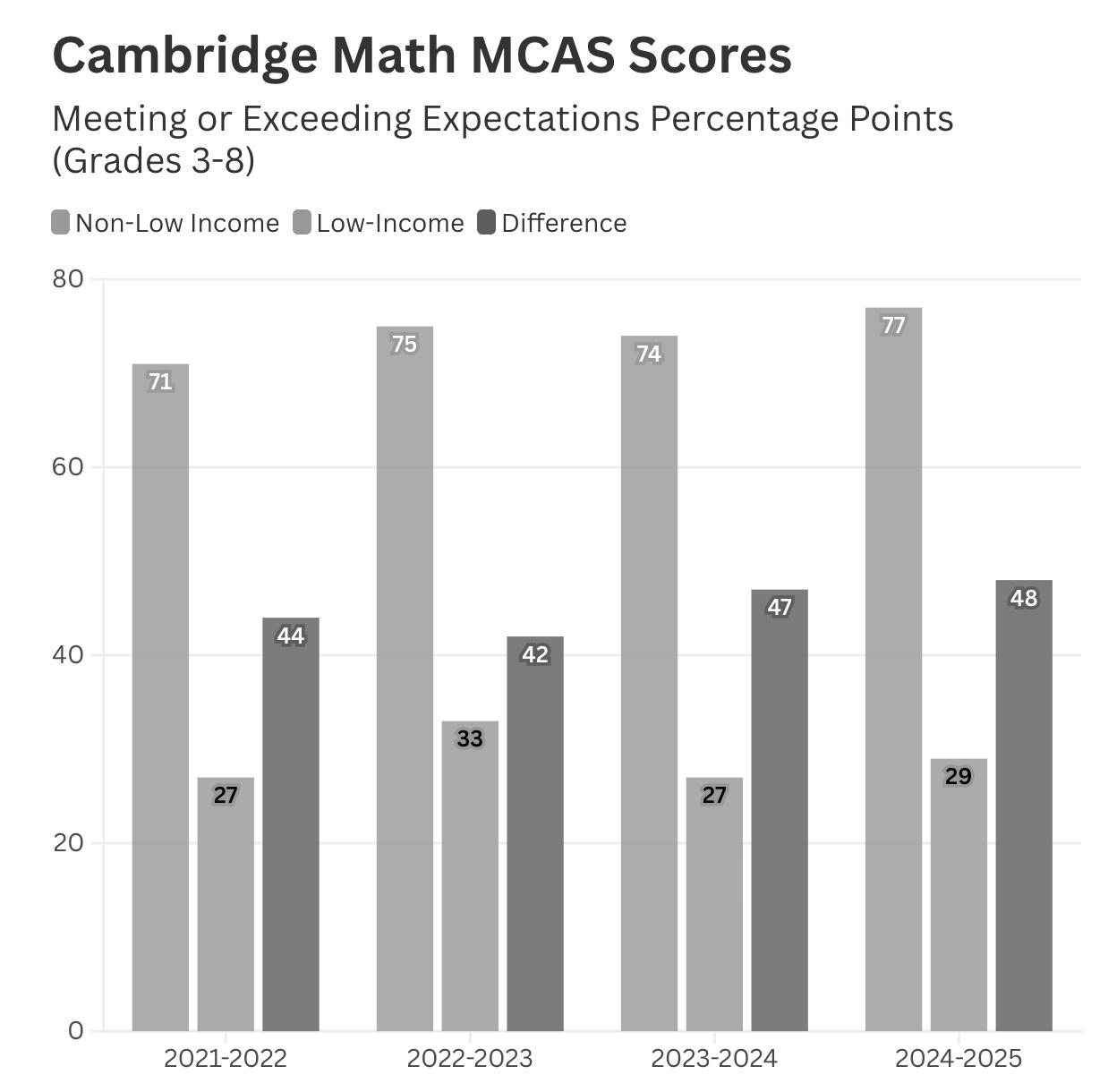
members pressed finalists — including Murphy — on how they would eliminate district achievement gaps. And in the upcoming November School Committee election, improving academic equity has been an important talking piece for nearly all 18 candidates.
A Tuesday CPS press release highlighted that the district outperformed the state average across all grades and subjects, and that Cambridge was among 41 districts recognized for progress in math at a Monday event held by the Massachusetts Department of Elementary and Secondary Education.
“The most important takeaway
from my perspective is that it’s evidence that we have very strong teaching and learning taking place within our school communities,” Murphy said in a Thursday interview with The Crimson.
“That is a credit to our teachers and staff and school leaders, because the amount of positive data points that we have would not be possible were it not for a lot of hard work on part of educators,” he added.
Even as overall scores improved this year, low-income students further lagged behind their peers.
Across the district, 75 percent of non-low income students are meeting math proficiency, com-
pared to only 26 percent of low income students, the same portion as in 2024, representing a three percentage point increase in the gap. Similarly, the ELA score gap widened
Cambridge School Committee members urged newly hired Superintendent David G. Murphy to take action to address large district-wide achievement gaps during Tuesday’s School Committee meeting.
The results of the 2024-25 Massachusetts Comprehensive Assessment System accountability report revealed overall growth but deep disparities along socio-economic and racial lines. Last week, the Department of Elementary and Secondary Education recognized Cambridge Public Schools as the largest district to have returned to pre-coronavirus achievement levels.
“These overall gains that we’re seeing in a lot of places are exciting, but the continued gaps are extremely distressing,” school committee member David Weinstein said. “That’s why we all are so frustrated, because we know that every child should be able to do much better than we are currently supporting every child to do.”
While MCAS performance increased overall in the past year, Black students remain furthest from pre-COVID achievement levels in both English Language Arts and math. In grades three to eight from 2019 to 2025, there was an 11 percentage point decrease in the fraction of Black students meeting or exceeding expectations, a sharp contrast to the 8 percentage point increase among white students.
At Tuesday’s meeting, which focused almost entirely on discussing MCAS scores from last year, committee members spent most of the three hours direct-
“We have a school where 94 percent of the students are not at the level,” committee member Richard Harding Jr. said to Murphy. “Somebody has to look at the instructional practice.”
“You’re the guy now,” he added.
Out of the lowest performing quarter of students in 2025, 92 percent are identified as “high needs,” which is defined as either having an Individualized Education Plan, being a multi-lingual learner, or identifying as low-income, according to the CPS presentation from Tuesday. More than 30 percent of Black and Latino students were reported to have IEPs compared to just over 20 percent of white students and 13 percent of Asian students. Schools having a high percentage of “high needs” students were more likely to have lower average MCAS performances.
Murphy said that while some of the disparities can be attributed to socio-economic trends, there is a “pronounced level of disproportionality” with regards to IEPs.
“While it’s not a challenge that is specific to Cambridge, it is something that Cambridge and all other school districts have a responsibility to look closely at,” Murphy said, adding that the district should reconsider how it identifies students to be put on IEPs.
Murphy cited multiple CPS programs aimed at improving achievement gaps, including the district-wide Excel Tutoring program, a specialized after-school program for students performing below grade level.
Committee members, including Weinstein and Harding, suggested that teachers’ professional
development needs to address systemic bias explicitly.
“We have to have an honest conversation with the union — to whoever’s in front of these kids — and say, ‘Look, this is the data. Are you going to join us in good faith to change this?’’’ Harding said, referring to the Cambridge Education Association, which represents teachers and staff in CPS.
School Committee Member Elizabeth C.P. Hudson complained that the superintendent’s assessment of MCAS scores failed to recognize the persistence of performance disparity.
“We’ve spent a decade saying, ‘it’s getting better, and our growth is really great.’ And if that were true, then the scores would be better than they are today,” Hudson said.
“Frankly, that doesn’t make any sense, right? That’s bullshit.”
CPS announced five goals in their presentation in order to respond to the disparities, which consist of creating a consistent curriculum to be used across all CPS schools, “increasing staff and changing schedules,” prolonging the school day for elementary and upper schools, continuing the Excel Tutoring Program and expanding universal preschool.
School Committee Chair and Mayor E. Denise Simmons told Murphy that whatever support the district implements must ultimately get results.
“If that support is not leading to something tangible, which is better data, that’s not enough,” Simmons said.
The School Committee will continue discussing CPS’s MCAS performance report in their Oct. 21 and Nov. 18 meetings.
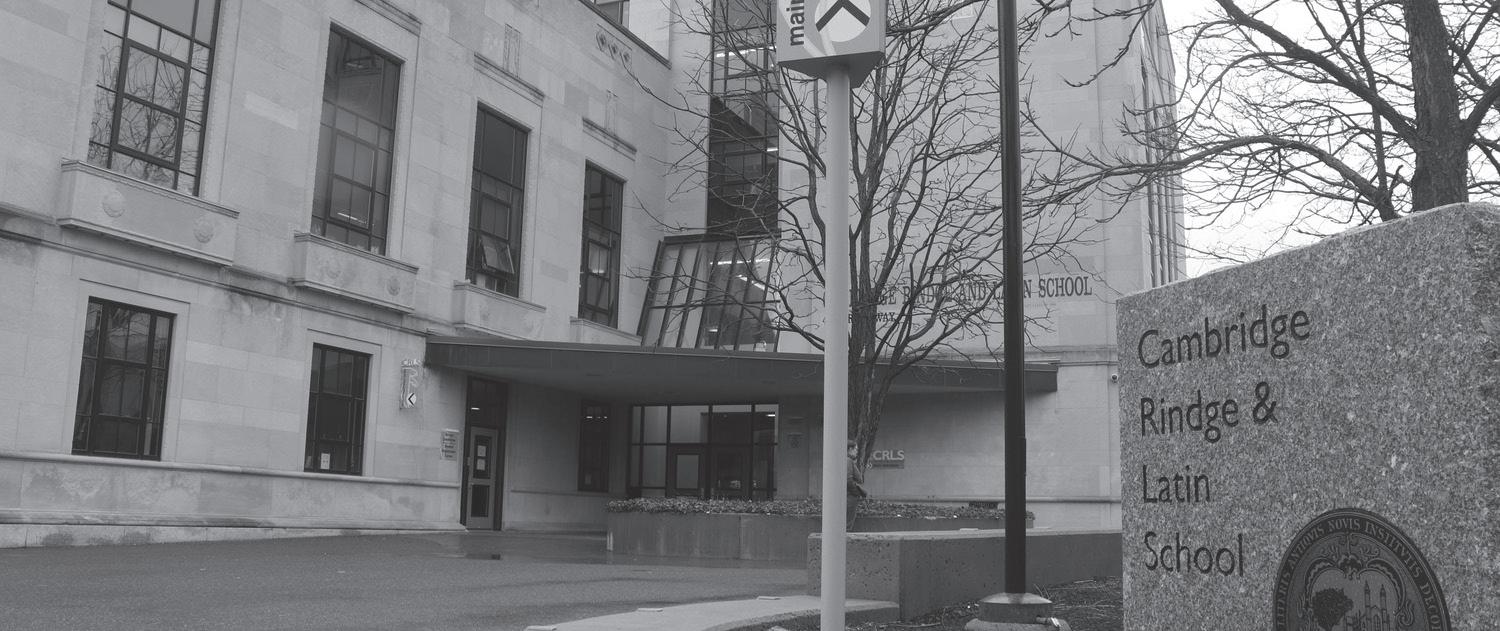
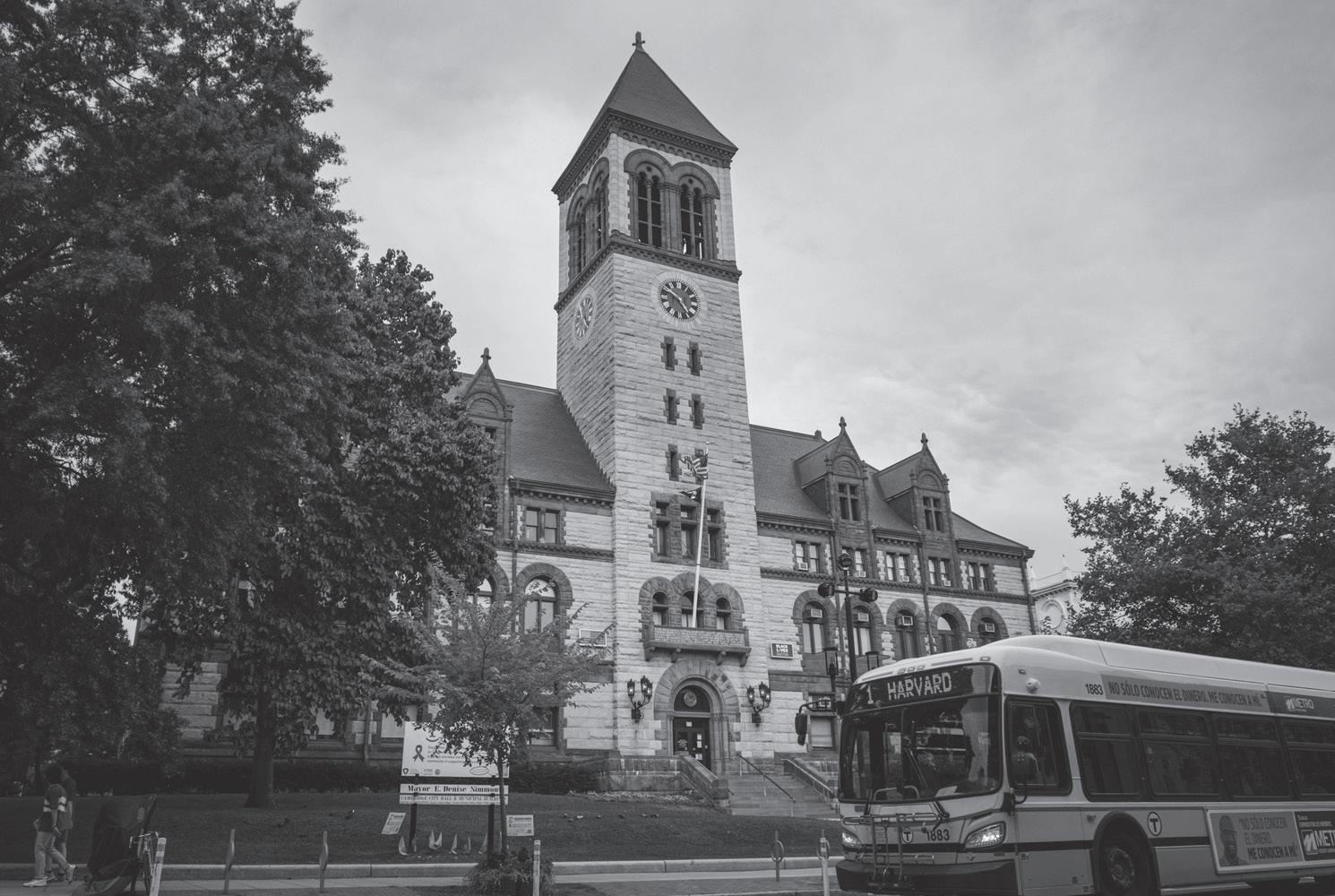
also mandates “collaborative processes” developed by the current Council and City Manager Yi-An Huang ’05 for all successive administrations.
This November, Cambridge voters will ratify or reject a draft of the City’s charter that makes minor changes without altering the core of its 85-year-old council-manager form of government.
The proposed changes to the document come after years of debate among Cambridge residents and government officials regarding the structure of its charter, which serves as the City’s constitution and has not been modified since 1940.
The new draft revokes the mayor’s status as the automatic chair of the School Committee, codifies the Council confirmation power over certain city appointments and financial and election processes, and eliminates the use of gendered language in the charter itself.
The most substantive change in the charter is the selection process for the chair of the School Committee, which historically has been filled by the mayor. In the proposed charter, the chair is elected from the School Committee’s members.
Elliot J. Veloso, the deputy city solicitor, said that many of the changes simply formalize the City’s charter in line with existing practices and state law.
Veloso said the codification
Cambridge’s government operates under a Plan E charter — including an elected City Council, which sets legislative goals for the city, and an appointed city manager who acts as the City’s chief executive and works to enact the Council’s priorities. Concerns around the contentious relationship between the Council and the city manager were the focus of the initial charter review when Cambridge residents approved a ballot measure in 2021 requiring the city to assess its charter every 10 years. Under the proposed measure, the Cambridge Charter Review Committee began its first review in 2022. But after 18 months of deliberation, the Committee was unable to reach the necessary two-thirds consensus to officially endorse the council-manager form of government or recommend an alternative.
While the Committee made several substantive recommendations common to both forms of government during its final report in Jan. 2024, the draft voters will see in November does not reflect most of the Committee’s key proposals. The Council voted on each proposed amendment in the months
following the Committee’s final report, before officially approving a far less substantive draft of changes to the charter in April. City Councilor Sumbul Siddiqui said the charter review — and a subsequent 7-2 vote by the Council to maintain the council-manager form of government last December — was a missed opportunity to alter the most fundamental part of Cambridge’s government.
“I think there was this desire to see more of that discussion openly. I think it became kind of well, this is too big of a question to answer at the moment,” Siddiqui, who voted against retaining Cambridge’s existing government structure, said. Councilor Patricia M. “Patty” Nolan ’80 shared
ayaan.ahmad@thecrimson.com claire.michal@thecrimson.com sierra.pape@thecrimson.com risha.sinha@thecrimson.com
title to “City Council President” to introducing neighborhood councilors as opposed to solely at-large councilors. Still, Nolan believes the draft charter is a good step forward. “I think the advantage is that now that we have this change, it’s substantive, and yet it’s not a radical overhaul,” Nolan said.
ENERGY. The gas company is hiking rates for customers after a historically high price increase last winter triggered widespread criticism.
Last winter, Eversource cus-
tomers saw a historically high price increase in their gas bill. This year is shaping up to be even more expensive.
Eversource gas customers in Cambridge can expect their bills to increase by 13 percent this year, according to a company filing with the Massachusetts Department of Public Utilities. Though the magnitude of the change is smaller than last year, this year’s rates still represent an increase from Nov. 1, 2024 rates. The DPU has yet to approve the proposed change by the Nov. 1 deadline.
Eversource increased gas rates by 23 percent last year, a decision that was fiercely criticized by residents and state representatives. The higher energy costs were driven by an abnormally cold winter and increased contributions by energy providers to the state-mandated MassSave program, which incentivizes residents to switch from gas to electric heating.
The DPU responded by ordering Eversource and five other gas companies to cut gas rates by 5 percent, and later reducing the budget for the MassSave energy efficiency program by $500 million to ease the burden on ratepayers.
The bulk of this year’s proposed fee hike is driven by an 11 percent increase in infrastructure and maintenance fees rather than by contributions to the energy efficiency program. This contributes to the 13 percent overall increase for an average NSTAR gas customer using 126 therms a month.

“We work diligently to keep the maintenance and infrastructure costs we can control as low as possible, but the cost of this work is not optional – because heating our homes during a New England winter isn’t a choice,” Kevin Kelley, the Eversource President of Gas Distribution, said, according to a press release.
Eversource is also introducing a new bill format for customers. Charges were previously grouped into “supply” — the cost of natural gas — and various other “delivery” charges. This year, delivery charges will be displayed as “maintenance and infrastructure investment” and “public benefits” distinctly in an effort to increase transparency.
“A vast majority of households should see the delivery portion of their gas bills go down this winter compared to last year,
even if we experience another unusually cold winter,” wrote a spokesperson for the DPU in a statement to The Crimson, describing the change as providing “much-needed relief” for residents.
Residential electric customers with heat pumps are expected to benefit from new, lower seasonal rates, according to the DPU.
Despite these efforts, state representatives are still concerned about energy affordability as winter approaches.
“I am concerned that families who are already struggling to afford their heating bills will be pushed closer to the brink, and, with continuing federal funding cuts, gas assistance programs will be stretched even further than they already are,” State Rep. Marjorie C. Decker wrote in a statement.
“The costs of infrastructure upgrades, whether for renewable energy or not, should not fall on residents and businesses,” Decker added.
Other state representatives, including Mark D. Sylvia from Bristol, also submitted and signed letters to DPU Chair and Commissioner James M. Van Nostrand, urging the DPU to reject or significantly scale back the rate hikes.
Massachusetts Governor Maura T. Healey ’92 also urged the DPU to scrutinize the new proposals from Eversource and National Grid in a statement to NewsCenter 5.
Earlier this year in March, Healey unveiled plans for a new energy affordability agenda that aims to save $5.8 billion for electric and gas customers over the next five years. The agenda in-
cludes finding “alternative ways to finance new electric grid infrastructure and reduce the impact on customer bills.” At present, energy efficiency programs like MassSave are largely funded through surcharges on customer’s bills.
Kelley said that while Eversource hopes for a “milder season,” the company is focused on increasing dependability and transparency with customers.
“We’re laser-focused on efficiently managing our maintenance and infrastructure costs while maintaining reliability, providing transparent information to customers, and connecting them with energy efficiency and financial assistance programs,” he said.
stephanie.dragoi@thecrimson.com thamini.vijeyasingam@thecrimson.com
BY JAYA N. KARAMCHETI
Harvard students will be able to pop in to PopUp Bagels starting next Friday, Oct. 10, seven months after the East Coast bagel chain announced it was coming to Harvard Square.
PopUp Bagels will be located at 1440 Massachusetts Ave., replacing the Pokeworks that previously occupied the space. The store will kick off with festivities at 8 a.m. on opening day, according to owner Brian Harrington.
“We have a DJ at every one of them, so it’ll be super high energy and great music. We have a couple little things planned that are a surprise the day of,” Harrington said.
“We have some fun stuff that we’re doing here as well, but they got to come and find out,” he added. PopUp Bagels announced the new Harvard Square location back in March after opening its first Boston location in Seaport at the beginning of the year. Harrington said that since their announcement, people have been looking forward to the new bagel spot. “People just constantly stepping in the door saying, ‘When are you opening?’ and ‘We’re super excited,’” Harrington said. “We’re right in front of the T stop, so everybody that comes up the steps sees it and generates a lot of buzz from that.” Harvard Square is already home to Black Sheep Bagel Cafe and Pavement Coffeehouse, with Bagelsaurus just down the street. But Harrington said PopUp Bagels will make a name for itself as a no-frills eatery with bagels and rotating flavors of cream cheese and whipped

butter.
“The bagels are fantastic,” Harrington said. “We don’t complicate them with eggs and turkey and lettuce and sprouts and figs. It’s just all about the bagel.”
Customers at PopUp Bagels must choose at least three bagels and a schmear when ordering, which Harrington said would appeal to Harvard students as they study and socialize on campus.
“Three bagels and a schmear is the perfect snack to grab when you’re heading to study for a midterm or crank out a paper or do a group project,” he added.
Harrington said he looks forward to the increased foot traffic from the many annual fall traditions in Harvard Square and Cambridge.
“We’re opening the day before Oktoberfest and a week before
Head of the Charles, so we’re coming right into a really busy time of the year in Harvard Square,” Harrington said.
More than anything, Harrington wants PopUp Bagels to provide a positive pick-me-up for Harvard students, Cambridge residents, and other visitors at any time of the day.
“It’s the best six minutes of everybody’s day that walks in the door,” Harrington said. “It’s the happiest place in the world.”
“The tunes are great, the vibe is awesome, and then the bagels are incredible,” he added.
After its opening on Oct. 10, PopUp Bagels will begin their normal hours of operation — 7 a.m. to 3 p.m., seven days a week.
against Lourenço Garcia, the assistant superintendent of equity and inclusion for Revere Public Schools, and Magaly Sanchez, chief family advancement officer in Boston.
The Cambridge School Committee voted to appoint interim superintendent David G. Murphy for the permanent role on Monday, putting an end to a search process that lasted more than a year and was marked by controversy. One of three finalists selected for the role, Murphy was up
School Committee Vice Chair Caroline Hunter and Mayor E. Denise Simmons voted for Sanchez in a preliminary vote, making them the only two members to not vote for Murphy.
“He does certainly have benefits, but he’s not my first choice, nor my second, and it has noth-
ing to do with him personally,” Simmons said before making her vote.
The School Committee ultimately held a formal, unanimous vote to appoint Murphy, with Simmons abstaining.
District leadership appointed Murphy, previously CPS’ chief operations officer, as interim superintendent in July 2024, after the School Committee voted to remove his predecessor amid growing concerns about her leadership.
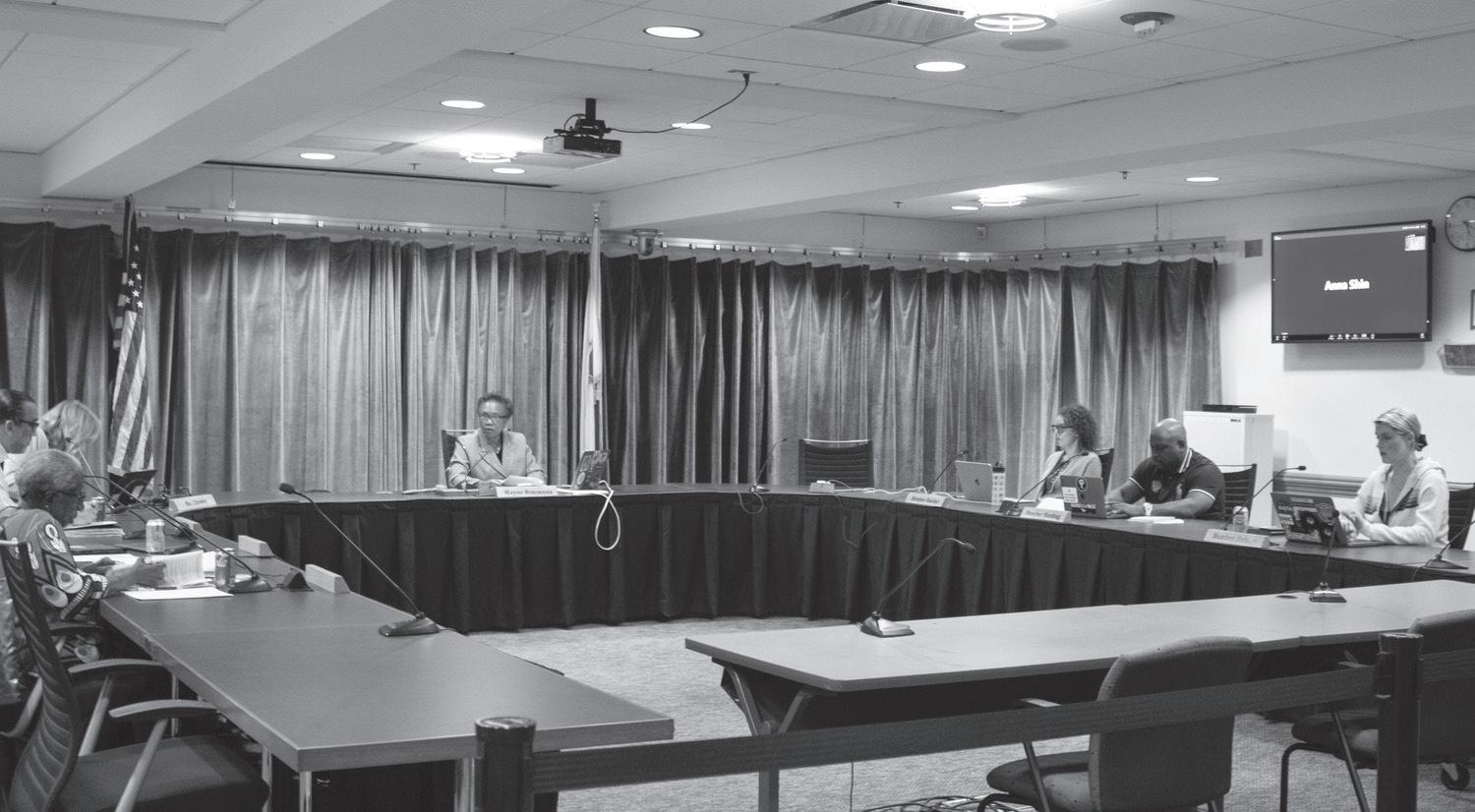
As the search for a permanent superintendent progressed, the School Committee received increasing amounts of backlash from both parents and teachers who felt like they had been left out of the process. The Cambridge Education Association — the union representing teachers and staff in the district — released a fierce statement in August calling for the entire search to be restarted, claiming that the process lacked transparency and public engagement.
Each School Committee member spoke about their choice during Monday’s vote, and some also addressed the controversy around the process.
“I want to reaffirm that this process holds best practices,” member José Luis Rojas Villarreal said. “At the same time, I acknowledge that we could have communicated more clearly about the legal and practical reasons that shape how this process works.”
“We have a strong, capable candidates before us,” he added. “I believe we owe it to our students to make a decision tonight, delaying the step would risk slowing their learning and growth, something we cannot afford to do.”
During public comment, two parents spoke in favor of Mur-
phy, praising his leadership. But several others slammed the School Committee one final time, condemning members for running a “failed” search process.
Duncan Maclaury, interim CEA president, expressed concern with how the search firm was chosen. MacLaury also mentioned the controversy around semi-finalist Adam Taylor, who received criticism for comments made in 2019, as well as Garcia, who lost more than $750,000 in a cryptocurrency scam — something the School Committee knew in August.
“A process like this that is supposed to select the executive leader for our 17 schools, 1800 staff and 7000 students, is not wonderful,” MacLaury said.
Despite the criticism against the process, two parents took the podium to pledge support for Murphy.
“He is, as far as I can tell, genuinely, profoundly, truly centering the kids in every action his administration has taken,” Anne M. Coburn, who is running for School Committee, said. “If I were on the School Committee now, I would happily vote for him. He would be a finalist in any search, no matter how well or poorly run.”
During last week’s public interviews, Murphy pledged to
hold high standards for all students, improve professional development for teachers, cut inefficiencies in the budget, and target early grades to eliminate achievement gaps.
He received positive end-ofyear evaluations from members of the School Committee, who commended his effectiveness as a leader and strong communication skills. As interim, Murphy has overseen many significant changes in the district, including recommending and facilitating the closure of the Kennedy-Longfellow Elementary school in December due to declining enrollment and persistent underperformance. Murphy also oversaw the implementation of universal preschool, increased focus on teacher evaluations, and navigated changes to the math curriculum. In a press release to the district, Murphy wrote that he is “grateful for the vote of confidence in the work our team is doing represented by tonight’s vote.”
“I am humbled by the responsibility to lead this district and will continue to do so with the best interests of our students in mind,” he added.
CATHARTIC CONCERT. Ethel Cain’s tour withholds catharsis until the very end.
BY MELINA FONSECA CRIMSON STAFF WRITER

alvation is never earned without the labor of trembling hands. Ethel Cain made this exceptionally clear in her Boston performance of “The Willoughby Tucker Forever Tour,” extensively torturing her audience before delivering them into an all-consuming, rapturous ascension — and then doing so repeatedly.
For those unfamiliar, Ethel Cain is the stage name and brainchild of singer-songwriter Hayden Anhedönia. Loosely based on Anhedönia’s own upbringing — from rugged Southern roots to pervasive Christian influences — Cain takes shape as the fictional protagonist of Anhedönia’s ambitious debut record, “Preacher’s Daughter.”
While the lore runs deep, the concept album, put simply, is the immortalization of Cain’s tragic life; this includes religious trauma, the death of loved ones, substance addiction, domestic abuse, sexual exploitation, her murder and — most famously — as a final act of horror, the subsequent cannibalization of her body. It is a truly fascinating tale, executed with profound musical innovation and an immense attention to detail.
As though she couldn’t part from the narrative, this past summer, Anhedönia released its addendum, “Willoughby Tucker, I’ll Always Love You.” As the name suggests, it reflects on Cain’s high school boyfriend and first love, Willoughby Tucker, musing over the much-needed escape they provided each other, ruminating on what could have been had she
not left him, and recognizing that they were both flawed in ways neither could ignore. She is now touring the new album and its live performances could not be more unsparing.
Setting the standard early on, the opening song — “Willoughby’s Theme” — began as a soft instrumental under an ambient glow, slowly morphing into a ringing resonance accompanied by a flickering of green, pulsating lights. The stage lighting was undeniably dynamic — a consistent theme throughout the show.
Cain continued with “Janie,” a quiet inversion after the first song’s grandeur. It was at this moment that the stage design could be seen at its clearest: Willow tree branches curtained a set of mossy platforms and a wooden, crossshaped mic stand, conveniently crucifixing Cain whenever she was backlit. During tender tracks like “Janie” — and later in the set, “Waco, Texas” — the set truly embodied a summer afternoon’s Sunday sermon. The songs began to sound like hymns and the orange, occasionally purple, hues began to look like a sunset piercing through the stained glass windows of a church.
Album singles “Fuck Me Eyes” and “Nettles” unsurprisingly had the most audience engagement.
While “Fuck Me Eyes” was dazzling with its enhanced percus-
sion, bolder vocals, and more daringly saturated lighting, “Nettles” was sentimental and romantic.
Though the live banjo was a nice touch, it was an absolute misfortune the show failed to deliver a live performance of the fiddle — undoubtedly the most important, and heartwrenchingly devastating, feature of the song.
After this more easily accessible musical intermission, Cain transitioned into what would be the most agonizingly suspended hour of the human condition — lived, felt, and borne by her audience.
As she sang “Dust Bowl,” subdued and backlit by a rotating white light, the crowd writhed in anticipation of its sonic collapse. Undoubtedly a highlight of the show, on its cue, the lights turned off completely before rapidly flickering amid an intense reverberation, so visceral it could be felt in one’s chest.
Without missing a beat, the set eerily transitioned into its segment dedicated to Cain’s January 2025 release, “Perverts.” Featuring a portion of the titular song, under jittery flashing lights, Cain used the same haunting feedback and ritualistic cadence of its ghostly canticle to say in a voiceover, “Ladies and gentlemen, please welcome on stage Jae Matthews of Boy Harsher.” A pleasure for Boston, Matthews joined Cain on stage to sing “Vacillator.”
With their silhouettes and voices in prayer, the women knelt on the ground as they constantly reached for the other, building an unnerving tension but never satisfying a sense of relief.
This suspense advanced into “Onanist,” as howls of wind — severely warped and nightmarish
BY AUDREY ZHANG CRIMSON STAFF WRITER
Under the blue sky on Saturday, Sept. 27 at the Jason Russell House Beer Garden in Arlington, the clink of pint glasses met the chatter of loungers in lawn chairs and clatter of washboards and washtub bass. Free, friendly, and proudly odd, the Arlington Center for the Arts’ Great Northeast Jug Band Festival filled the grass with blankets, picnic baskets, and a steady drift of listeners — both old and young — edging closer to the main performance area with each chorus. Billed as New England’s only jug band festival, the afternoon doubled as a quick study into Depression-era resourcefulness: Jugs, washtubs, spoons, even wooden toilet seats whittled and fit together to create contraptions that could only be described as “homestyle.” Strings of notes leaned into folk, blues, and ragtime. A couple tents featuring those homemade gadgets amplified this DIY spirit, while a makeshift stage along the lawn’s edge ran four acts. The stage closed with the wacky but metic-
ulously interwoven set by Miss Maybell & Her Ragtime Romeos before the music spilled into an after-hours jam.
“It’s a nice sort of synergy of local communities who are getting
The demystification of the jug band was quite literal. Jug-fluent players waved in passersby to try instruments that looked like shop projects: A stringed rowing paddle mounted atop an upside-down
Jug-fluent players waved in passersby to try instruments that looked like shop projects... Thrift turned into tone color while tinkering turned into an open invitation to join.
exposed to jug band music for the first time,” said Aneleise Ruggles, Communications Director of the Arlington Center for the Arts. “But also some real jug band legends are here in the crowd, [and they’re] performing for us, and so it’s really nice to create that sort of mix of interests and exposure for people who have never heard jug band music before.”
trash can boomed a soft bass, a detached wooden toilet seat clacked under drumsticks, and a nearby washboard spat and clunked next to a mini cymbal. Thrift turned into tone color while tinkering turned into an open invitation to join.
“[When] I came here two years ago, I didn’t know anybody,” said Bill Trab, an attending jazz saxo-
— gnawed at the crowd’s nerves. Additionally, the enhanced fog on stage did nothing to lessen the dread brought by Cain’s angelic wails, clashing with both the strobing lights and the speaker’s searing distortion. Finally, however, at the song’s concluding apex there resulted a minutes-long scene reminiscent of traditional Christian depictions of Hell: Cain “crucified” against the cross-shaped mic stand, fiery red lighting surrounding her, and a strong dissonance.
With every surge, one would think the intensity’s end was nearly at hand, but it only became more devouring and more unrelenting. That is, until the lights dimmed and reappeared as a deep blue to perform “A Knock at
Evidently, Cain’s mercy was never given freely, and perhaps that is what made it feel sacred.
the Door.” In moments like these, Cain stripped the audience of its release, withholding catharsis and leaving only the ache of expectation.
Once comfortable, however, she would drench the venue in another wave of frustration. “Radio Towers” teased an additional punishing swell and, though “Tempest” partially fulfilled that promise, it was not as cataclysmic as one might hope after such an agonizing build up. By the end of final song “Waco, Texas” — even throughout its 15-minute entirety — there was no satisfying resolution. It was vulnerable, captivating, and powerful. But it was not conclusive to the turmoil that had agonizingly contributed to the audience’s anxious condition.
That is until Cain returned for her encore: “A House in Ne-
phonist. “Right here, probably in this spot, [Jasmine Moran] was hosting, and I brought my soprano [saxophone] and she goes ‘Come on up’, and I sang ‘Mama Don’t Allow No Jug Band Players Anything.’ I just kind of walked on.”
Although the official musical performance program ended at 5:30 p.m., crowds of people continued milling around the yard. So, in true jug band fashion, an ad hoc crew of festival organizers and jug band enthusiasts — including Trab — calling themselves the Jug Nuts, kept the party alive. A crate of printed lyrics and music scores perched in front of the musicians, free for anyone to sightread. Eager attendees grabbed wooden clappers and added to the polyphony, while the shyer bystanders were gently drafted to hoot on kazoos. The jam was ragtag and a little ridiculous, which turned out to be the point of the entire concept: Access first, virtuosity second.
“I think this music just brings out some innate silliness in people, and that’s, I think, what’s really important,” said Moran, the core vocalist of the Jug Nuts. “People get to just play and it just kind of makes people really open in a way and everyone’s just laughing.”
The day’s through-line was less about nostalgia than about immediate connection with each other through unconventional but ex-
braska,” “Crush,” and “American Teenager.” Fans of the artist may have felt disappointed to find out that despite its relationship to “Preachers Daughter,” “The Willoughby Tucker Forever Tour” did not include songs from its predecessor and other earlier projects from Cain. However, their sudden appearance in the encore turned absence into reward, delivering the long-awaited closure that the main set originally denied. At this point, the show felt less like a formal performance by character Ethel Cain and more like a heartfelt exchange from artist Hayden Anhedönia, with her taking the opportunity to bask in the heightened energy as she engaged with the audience. She made sure to take a moment to recognize the demand for a free Palestine, emphasized crowd response in lyrics integral to “A House in Nebraska,” paced the stage during “Crush,” and, for “American Teenager,” she spent the encore’s finale at the barricade, singing with fans.
Evidently, Cain’s mercy was never given freely, and perhaps that is what made it feel sacred. Rather than just receiving release, the crowd earned it. This deliverance became a reckoning and the reward — fervent and unforgiving — landed with a weight to which no ordinary catharsis could compare.
When Cain’s final scream faded and the lights cut, it was not the relief of completion but the awe of survival that lingered. In Cain’s world, salvation is wrought from labor, and in that labor, her artistry found its deepest impact. The audience walked away changed, carrying the imprint of a night that was merciless, exacting, and, in the end, absolutely worth it.
melina.fonseca@thecrimson.com
tremely accessible instruments. By foregrounding household objects, the jug band music made the process visible and shareable, so audience members could become performers the moment they picked up something that, using their imaginations, could produce sound. That practical definition of community — where someone kept time, someone carried the melody, someone else kept the spoons from flying into the grass — felt more durable than any slogan. If the instruments were the punchlines, the music was the payoff. “Silly” or “wacky” did not mean sloppy. Instead, there in Arlington, thrift became tone, play became practice, and an afternoon adver-
tised as a music festival ended as something much closer to a family reunion captured in the universal smiling, washboard rattling and kazoo honking, and generations of attendees that showed up.
“[The festival] certainly has grown from our beginnings when we had about 120 people come to the very first one,” said Michael Buonaiuto, volunteer partner of the ACA on behalf of the jug band festival and the Jug Nuts leader. “Now, I think because we have a vibrant jamming culture, there’s a lot of people that are just into this music, and it’s so joyful and anticipatory.”
audrey.zhang@thecrimson.com
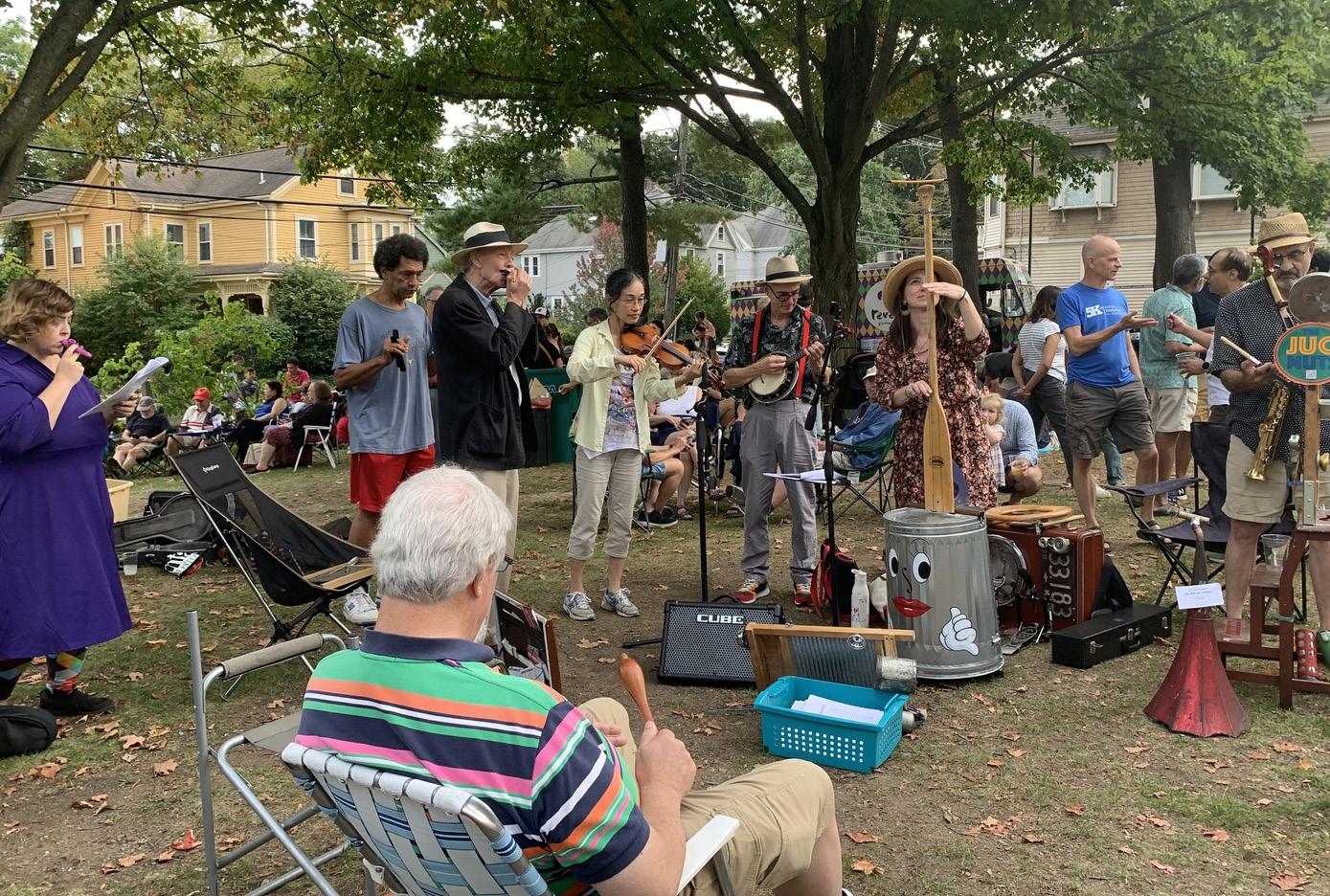
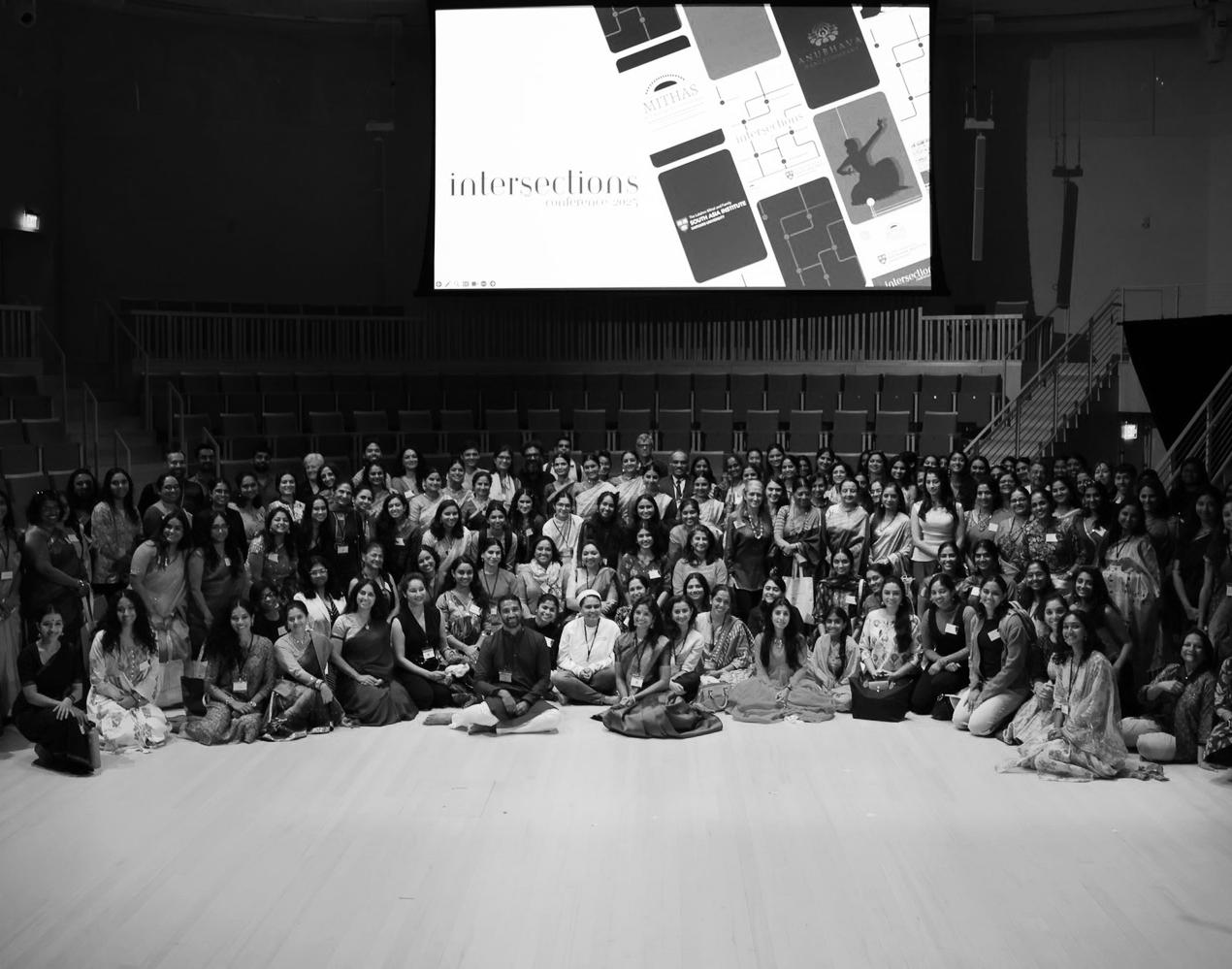
INDIAN DANCE. ‘Intersections’ conference brings together art and academia.
On Sept. 27 and 28, Harvard’s Lakshmi Mittal and Family South Asia Institute and MIT Heritage Arts of South Asia (MITHAS) hosted Intersections, a two-day conference centered on traditional Indian dance.
The conference was organized in collaboration with the Anubhava Dance Company, a group of second-generation Indian-Americans focused on bringing Indian classical dance to young artists whose cofounders are Dr. Shriya Srinivasan and Joshua George.
Taking on Indian dance through an academic lens, Intersections served as an opportunity for Indian dancers, scholars, and creatives to explore how tradition has evolved in new cultural and physical landscapes and discuss the future of Indian classical dance as an art form.
This was achieved through dance performances, poster
BY RIA S. CUÉLLAR-KOH
McGonagle’s Pub, an upscale Irish pub and restaurant, opened in Dorchester in December of 2024. Less than a year after opening, the New York Times dubbed them one of the 50 best restaurants in the country. With a focus on modern versions of Irish staples, Chef Aidan McGee serves up absolutely delicious and authentic food. The relative simplicity of their menu does not mean that the dishes have simple flavors. Rather, each menu offering is the most excellent representation of what that dish could be, and nothing masquerades as anything else. Paneled in dark wood, the first floor of McGonagle’s resembles a typical pub, albeit with more elegant upholstery. Plenty of TV screens ensure patrons can sit anywhere and still watch an evening football match. After walking through
presentations, and speaker panels that encouraged audience members to evaluate Indian classical dance from new perspectives.
“We’ve spent many, many years around this discussion of holding an analytical lens to the arts that we do, and not just talking about the experience of sitting and watching a performance, but also really talking about the how and why our work is produced,” George said.
All submissions for Intersections went through an independent review panel, emulating the academic review process for other conferences.
Intersections featured various performances of Indian classical dance, including Bharatanatyam, Odissi, and Sattriya, which demonstrated how dancers translate meaning into movement. These performances were preceded by discussions of the creative process and the deeper meaning of what these works represent, not just symbolically through their motions but within the greater context of Indian classical dance.
Panels centered on topics ranging from immigration, to the creative process, to discussions about what it means to be a “displaced dancer.” Through this variety, the main focus was
the bar area and descending down a short staircase, patrons enter a much larger dining area that swallows bustling noises. Sitting in the dining area doesn’t mean sacrificing the game, as there are still various TVs playing football at a gentle hum. Their Spice Bag appetizer perfectly encapsulates McGee’s culinary philosophy. A fast food that has gained more global recognition recently due to their popularity on TikTok, the Spice Bag originates from Chinese restaurants in Ireland. McGonagle’s serves theirs in a paper bag branded with their name accompanied by a silver gravy boat of curry sauce. Pouring the bag onto the plate reveals a heaping quantity of fries, fried chicken, peppers, and onions all steaming hot and producing a mouth-watering aroma of garlic. The batter on the chicken is thin and crispy, shattering to reveal the juicy flesh. The curry sauce soaks the fries and chicken thoroughly, enriching the flavor. The Irish Stew showcases
clear: how has Indian dance expanded beyond India and into the modern world?
“Indian classical arts have migrated from India to diaspora regions; it takes on its own character within those landscapes, and that is something that I think is really valuable for us to discuss,” said George.
For George and Srinivasan, this conference was unlike any other.
for over 50 years, she described her experience of teaching Indian dance to the new generation of Indian-Americans.
“I love it because it’s a beautiful art form, and we don’t want the children born and raised here not to have this opportunity,” Gulati said.
Intersections also questioned how to reimagine the place that Indian classical dance
The main focus was clear: how has Indian dance expanded beyond India and into the modern world?
holds in dance as an art form.
“I don’t think the community’s done something quite like this, and so we’re happy that so many people are enthusiastic to engage, and we see it as a starting point,” Srinivasan said.
Discussions featured several local key figures in Indian classical dance, including Neena Gulati, founder of Triveni School of Dance, the first Indian classical dance school in Massachusetts. Having taught dance
thick pieces of beef, potatoes, and carrots in a delectable gravy. Herein lies the only critique from the entire meal: The beef, potatoes, and carrots are cut so large that they can only remain partially covered in stew inside the bowl. Thus, the upper half of the pieces get colder and tougher more quickly than the bottom halves. Everything still tastes wonderful, but if the pieces were cut smaller and could rest in the gravy, the overall texture would have improved.
The meal had just brought her back to her cultural roots with such a strong image of home that she couldn’t help but shed a tear.
Almost more delectable than the stew itself is the slice of soda bread that accompanies it. The
“How do we get this form from being in this diversity checkbox to mainstream, and talk about what we do as creators in our methods and process that is, frankly, universal for all sorts of dancers and creators?” Srinivasan said.
The themes of each performance varied from stories of immigration to climate change. Mesma Belsare, a Bharatanatyam dancer,
bread is pillow-soft but still has a delightfully satisfying chew. The soft, salty butter — so soft that a spoon does a better job of smearing it over the bread than a knife — then adds an incredible sumptuous flavor. Dipping the butter-covered bread into the stew creates the best bite of nearly any meal.
The Bangers and Mash at McGonagle’s are showstopping. The delicate skin of the ‘banger’ or sausage bears no resemblance to the thick, plasticky texture of supermarket sausage. Rather, the exterior barely holds together tender meat that melts in your mouth. Topped with caramelized onions and laying atop a bed of mashed potatoes, this dish in and of itself is worth a spot on any top 50 list.
To break the proverbial fourth wall and share an anecdote from The Crimson’s visit, this reviewer brought her best friend, a real-life Irish American, to share the meal. About halfway through our entrées, my friend’s eyes began to well up. I asked her what happened, concerned that something had upset her. She replied that everything was fine, but the meal had just brought her back to her cultural roots with such a strong image of home that she
adorned a mask and portrayed the raw emotions that emerged from the tragedy of the Covid-19 pandemic. She wore a mask to emphasize her role as a medium through which the story is told, rather than a main character at the center of it. Belsare discussed how she engages with topics that are meaningful to her through Indian classical dance.
“It’s not about what I can do, it’s what I want to say. And if you are fortunate like I am to have learnt a language — because dance is a language to learn a lot, a different kind of a language in which you can also speak in a different way — then you say what you want to say through it,” Belsare said.
Intersections considered Indian classical dance as not just an expression of culture, but a medium through which emotions and history can be interpreted. This sentiment was expressed in performances focused on personal and cultural events, paying homage to tradition while evolving in adaptation for a new artistic landscape.
“I feel any opportunity we have to talk about our beautiful art form is wonderful,” Gulati said.
aarushi.vyas@thecrimson.com
couldn’t help but shed a tear. In a city with a long history of Irish heritage, McGonagle’s is a fine addition to the rich tapestry of Irish culture in Boston. Perfect for a special occasion, this restaurant has the power to bring back childhood memories through a deep love for authentic culinary traditions and near-flawlessly executed craft.
ria.cuellarkoh@thecrimson.com

The new Dean of Harvard College sat down with Fifteen Minutes to talk about Harvard football, his favorite memories on campus, and his Substack. At the end, he even volleys a question back.
David Deming is the new Dean of Harvard College. This interview has been edited for length and clarity.
FM: Before we start this, I just feel the need to warn you that I’m a transfer student from the University of Michigan.
DJD: I am.
FM: I hear that you’re an Ohio State alum.
DJD: I forgive you.
FM: I was wondering if you could speak to some of the differences between the state school versus Harvard experience.
DJD: Yeah, well, I had a great experience at the Ohio State University. I was in the Honors College, and they did successfully replicate a lot of the things that make Harvard great.
I would say the biggest difference that I noticed is that I had a lot of friends at Ohio State who were smart and talented but needed a little more attention.
The reality is, when you’re at a big state school, as you know, you can not go to class for two weeks, and nobody even knows, and it’s easy to fall through the cracks. Here at Harvard, we take pride in making sure that our students don’t fall through the cracks.
FM: Tarek Masoud called you a “straight shooter” for your ability to say no while making the other person understand why. What’s the secret to saying no?
DJD: We all have a very human instinct to avoid saying directly something that people are going to be upset by. But I found, in my experience, that it’s better to just speak directly and honestly and help people understand why you had to make a decision.
FM: I saw that you have a Substack. Do you think that too many people have Substacks, and if yes, would you ever consider breaking into the undersaturated market of male podcasting?
COLLEGE DEAN. David J. Deming sat down with The Crimson to talk all things Ohio State, challenges at Harvard, and ChatGPT.
from the South, or you both went to a Big Ten school, right? And we don’t want to prevent that from happening. And our feeling was that this office structure kind of funneled students into offices based on their identity group. So yes, we made some changes because the external environment has changed, but also we think there’s a way in which this could actually be better for students, and I defend that change.
It was more that I didn’t think it was valuable to get into the ordering of it all. I just was like, ‘This is what’s happened. I did it, but here’s why,” and so I do actually think that’s an example of me trying to do what I said I was doing.
FM: What do you think are the biggest challenges facing the College in the next few years?
DJD: I would say two challenges. One is the growing public skepticism of the value of higher education, especially elite higher education. That includes some of the actions by the Trump administration. But it’s not just that. It’s that we have too few allies and too few people that see themselves in what Harvard provides. For example, the Massachusetts legislature was considering an endowment tax before a federal endowment tax was passed, and that was on the Democratic side.
Harvard and institutions like it need to do a better job of making the case for our value to the American people.
The promise of Harvard is that we admit incredibly talented students from all around the world, without regard to their financial need, and then they are supposed to go out in the world to provide public value. If we are seen as just a place where people come to benefit themselves, then everything we do is at risk.
I think the second threat is related, but it’s a threat to our teaching learning model.
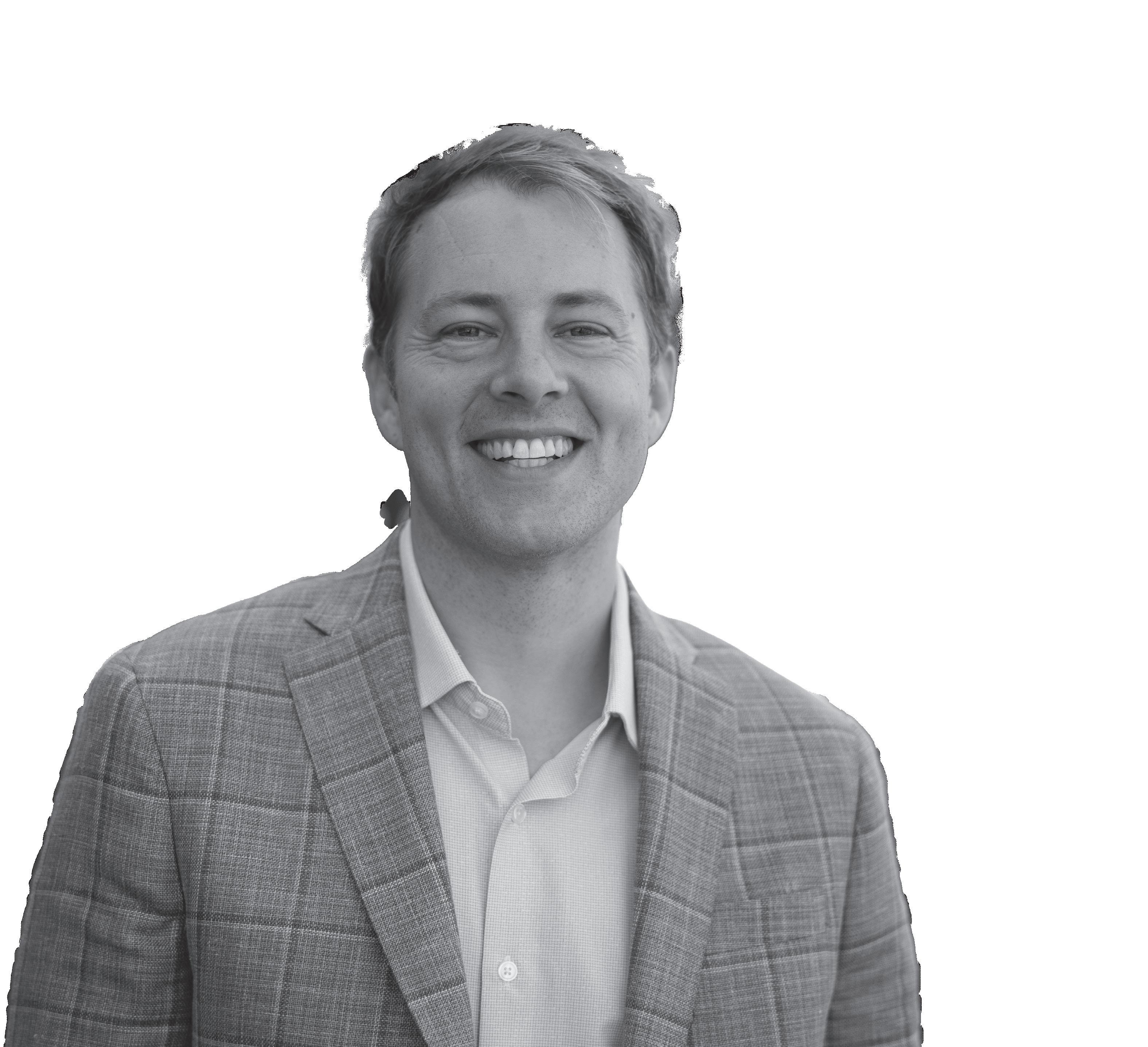
DJD: I started to write the Substack when I was serving as the academic dean of the Kennedy School.
I think had I had things I wanted to say, both about my own research and about the research of others, that just felt like the right format for.
Even though podcast is oversaturated, I would like to do it. I like to have conversations with people. If I ever did it, it would be mostly because it seems like fun, not because I’m trying to make a career out of it. I’ve already got a job.
FM: What’s the significance of the name of your Substack, Forked Lightning?
DJD: It comes from the Dylan Thomas poem, “Do not go gentle into that good night.”
He says — I’m not going to get this line exactly right, I think it’s right: “Wise men, though they know dark is right because their words have forked no lightning, they do not go gentle into that good night.”
And so that was my way of saying, “Why am I doing a Substack?” It’s because I want to fork some lightning.
FM: In your Substack, you seem rather optimistic about AI’s effect on the economy. What do you think about the growing optimism around AI-assisted teaching and learning?
DJD: It’s not so much that I think AI is going to be good for everyone in every situation all the time. It’s more that I think if we take up the challenge to find a way to use this new technology for good rather than evil, that eventually it will
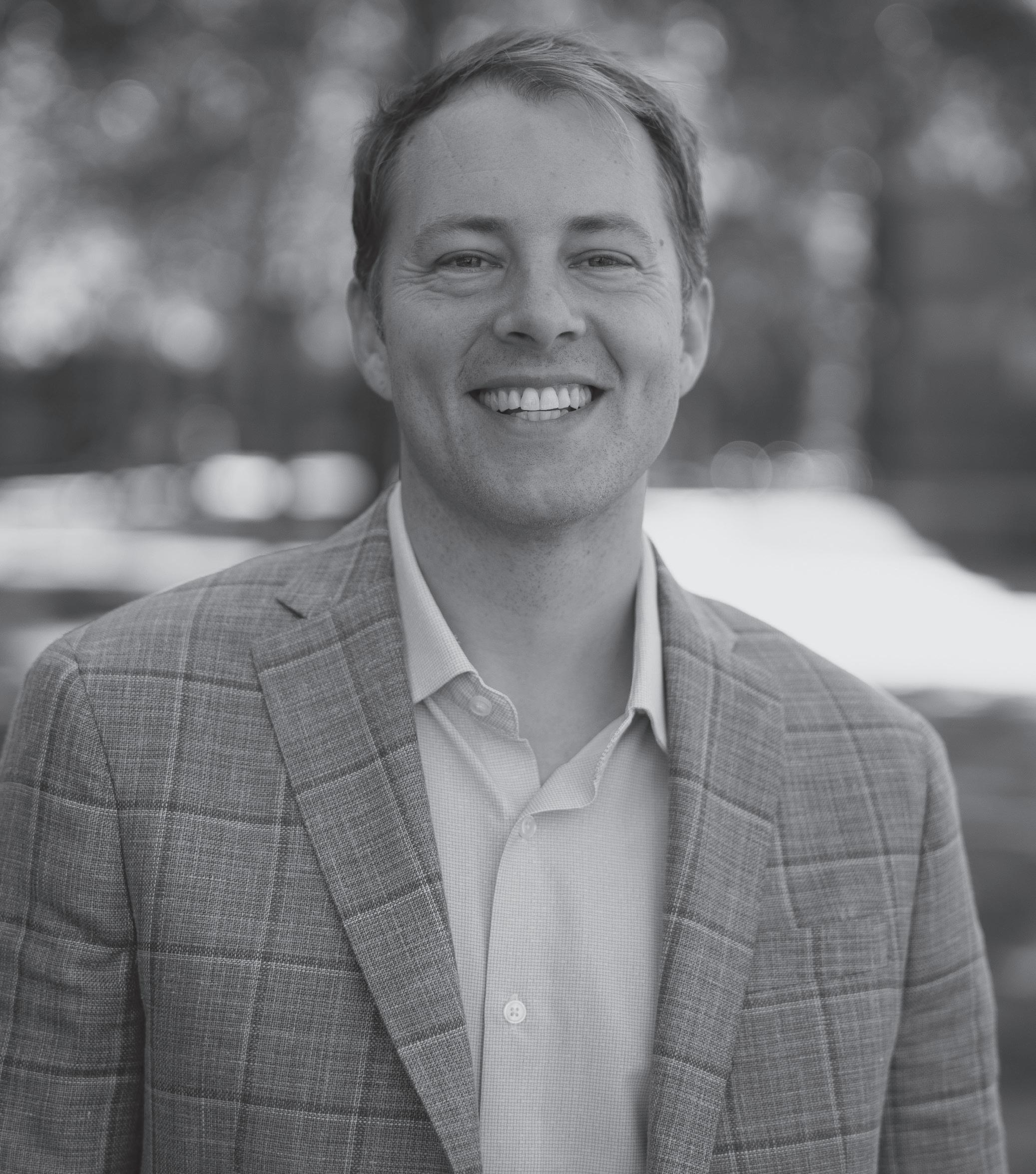
lead us to a better place. And I think that’s similar in the case of AI-assisted teaching.
I’m excited about using AI to ask a lot more of learners. I’m not as excited about AI just dropping into a classroom and changing nothing else.
FM: In one of your Substacks, you wrote that the growing user frequency, to you, suggested that ChatGPT has gotten substantially better and more user-friendly. But at the same time, there was a recent MIT study that found that users consistently “underperformed at neural, linguistic, behavioral levels” and that Chat GPT users have gotten lazier with each essay and then resorted to copy and paste by the end of the study.
DJD: My mom was an editor, and we were very persnickety about words and spelling.
We didn’t have any spell check, and so I had to memorize how to spell words.
My kids are not as good as spellers, not because they’re incapable of learning how to spell, but because we have spellcheck.
Is that good or bad? Well, it depends on what else you’re doing with your mental effort.
Let’s take advantage of the fact that we don’t have to worry about memorizing words to spell anymore, and instead redirect student effort to deeper, more interesting things. That part hasn’t happened with AI yet.
I don’t know what’s going to come next, but I feel some confidence that eventually, in the fullness of time, teaching and learning will be better and deeper and more interesting because we have this tool at our disposal.
FM: A recent op-ed about you argued that students are looking for more consistent communication from you and Garber. How do you juggle the desire to be transparent with students and the PR requirements of this job?
DJD: I mean, I’m sympathetic to that. I don’t think Instagram is the forum that that author is seeking for clear and transparent communication. What I hope is that the Instagram feed is a chance for students to get to know me better. It’s not really a place for me to communicate about the important and serious issues facing Harvard, but I am communicating about those in different forums, including talking to The Crimson, and I’m always around. I would just say, anybody who wants to talk to me about anything that’s happening at Harvard, just come talk to me. I’m around. I’m not hiding. I’m in the dining halls. I’m in my office. I’m here.
FM: There’s a difference between having, obviously, having a way for students to talk to you and having them feel heard. How do you make students feel heard?
DJD: Oh, that’s a great question. Part of it is being around. I try to eat lunch in Annenberg a couple times a week.
I think that I take very seriously that all of the students at Harvard College, regardless of their feelings about me or about Harvard, about the administration — they’re all our students and I’m responsible to all of them, and that means those of them who disagree with things I’ve done, or who want to say something negative to me, should still come and do it and not worry that I’m going to judge them for it, because I respect their views and I want to hear from them. Can I say one more thing about that,
also? It will be fun. Like I would enjoy a conversation with any of our students. I literally love talking to students. That’s why I took this job.
FM: In The Crimson’s profile on you, you were quoted saying that you plan to lead with moral authority by getting people on board with decisions, by convincing them “it’s the right thing to do for our students, rather than because I’m the dean, and I said so.” In a Crimson piece that was published [Sunday] night, you said that it wasn’t your place to contextualize the controversial decision you made to close the three diversity centers. Do you see these two comments as being at all at odds with one another?
DJD: If students want to come talk to me about that decision, or want to understand it better, or want to criticize it, or want to make suggestions about how to improve the offerings — not just of the Office of Culture and Community, but anything at Harvard — I want to hear from them, and I take their views really seriously.
Maybe I should say that the part of that story that they didn’t quote was, when I offered a rationale for it, which I’ve offered now on many occasions publicly, which is that even though we, as a matter of policy, no longer funnel students to offices based on their identity group, we do that because students’ identities are actually intersectional.
The example I’ve given many times now is, if you are a first-gen or low-income student, you may want to be connected with another first-gen or low-income student or a resident tutor or a member of the staff. And that’s okay. But you also might form an authentic connection with someone because you’re both
If you were to design a university from scratch today, it probably wouldn’t look like the average university does now, and that’s because times have really changed. And so the question is, are we willing to innovate and make some changes to the way we educate our students, to adapt to the modern technological landscape, adapt to the challenges that students are facing? Can we meet the needs of our students in the classroom?
FM: Do you have a favorite memory since you first came to Harvard?
DJD: The last commencement, when we said goodbye to Kirkland, was a really special memory for the whole family. You know, I raised my kids there, and they were sad to leave, but also it was a lovefest on both sides.
It just reminded me of how amazing the communities here at Harvard are and how lucky I am to be part of it.
I have a question for you.
[Deming leans back with his arms crossed, smiles, and nods to Jonathan Palumbo, Harvard College’s senior director of communications and engagement, who sat in on the interview.]
DJD: When I was talking to The Crimson last week — I haven’t cleared this with you, Jonathan, but we’re sitting there and I’m doing an hour-long interview and they’re transcribing, and I was like, “Maybe I should just do this in public.” Like, what if I just did it and everyone was there and then you guys could ask me questions and you can record it and write articles about it, but also students can hear it too?
FM: I mean, I think that’s something that we would be super interested in.
DJD: If I’m going to do it anyway, why not do it for everybody?
FM: An on-the-record chat in front of people where they can ask questions, that’s facilitated by students — yeah, personally, just think that’d be a really great show of transparency and communication.
DJD: Maybe we’ll do it.
BY REED M. TRIMBLE CRIMSON STAFF WRITER
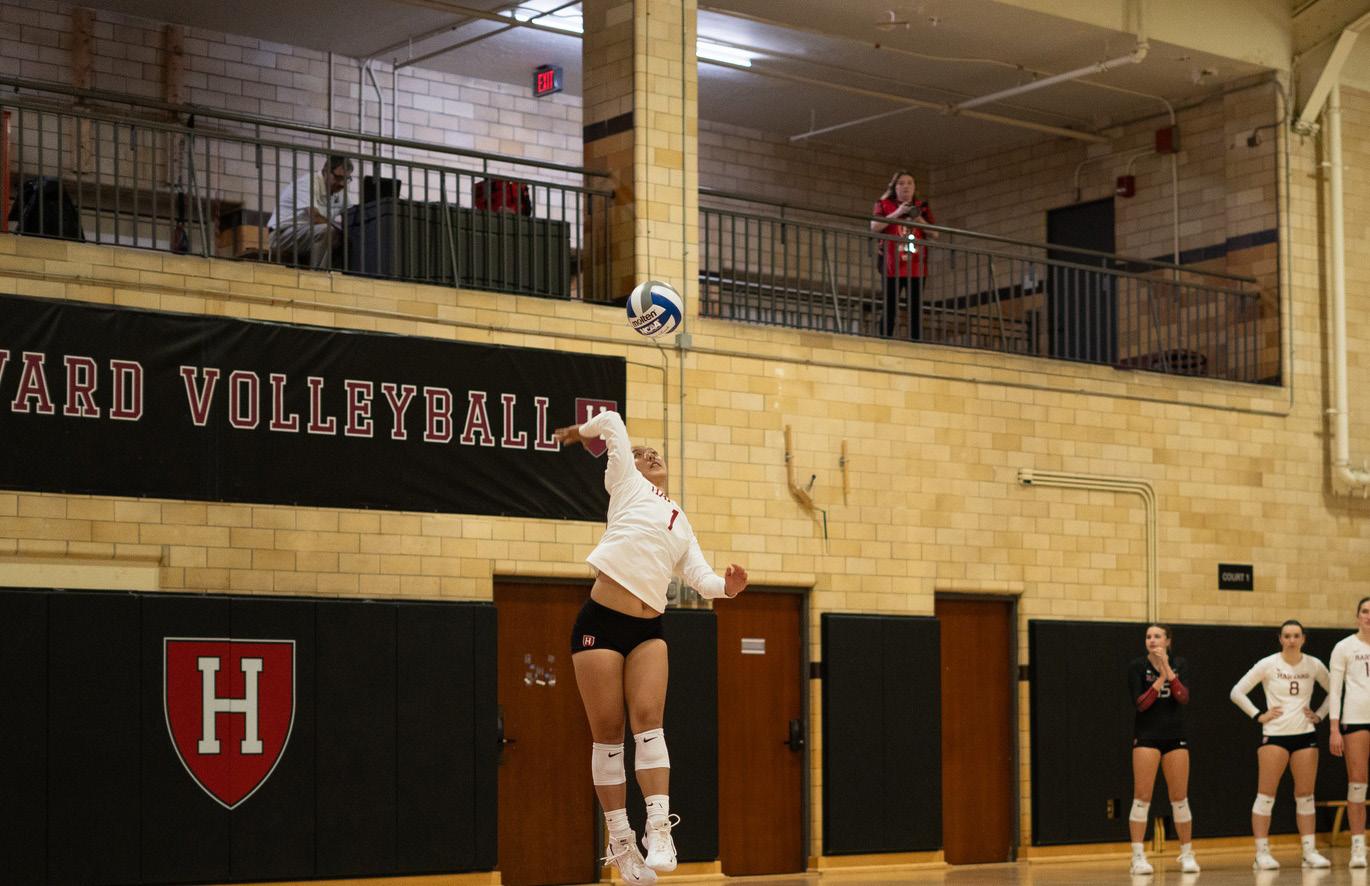
As temperatures fall, and the green in Harvard Yard turns to red and orange, the Crimson looks to keep one thing consistent this weekend: its undefeated record. Coming off of a successful crusade against Holy Cross, No. 22 Harvard football will seek to record another statement victory under the Friday night lights of Cambridge against the winless Cornell Big Red.
The Crimson (3-0, 1-0 Ivy) remains the last unbeaten team in the Ivy League and one of eight left in the nation, courtesy of stellar play by senior quarterback Jaden Craig and incredible depth across both sides of the football. Head coach Andrew Aurich said that while last year’s team typically targeted star wide receiver Cooper Barkate, who is now at Duke, the versatility of this roster has allowed Harvard to attack its opponents everywhere on the field. The depth was particularly evident in last week’s runaway 59-24 win over Holy Cross where seven different Harvard players snagged touchdowns.
“We can roll more guys through, which keeps them fresher, which allows them to play faster, and which allows them to get open more,” Aurich said. While Harvard has run the table in each of its games so far this season, Cornell (0-3, 0-1 Ivy) cannot say the same, coming to Cambridge seated last in the Ivy League. Last week, the Big Red fell in a disappointing fashion to Yale 24-41, following victories in their matchups against the Bull-
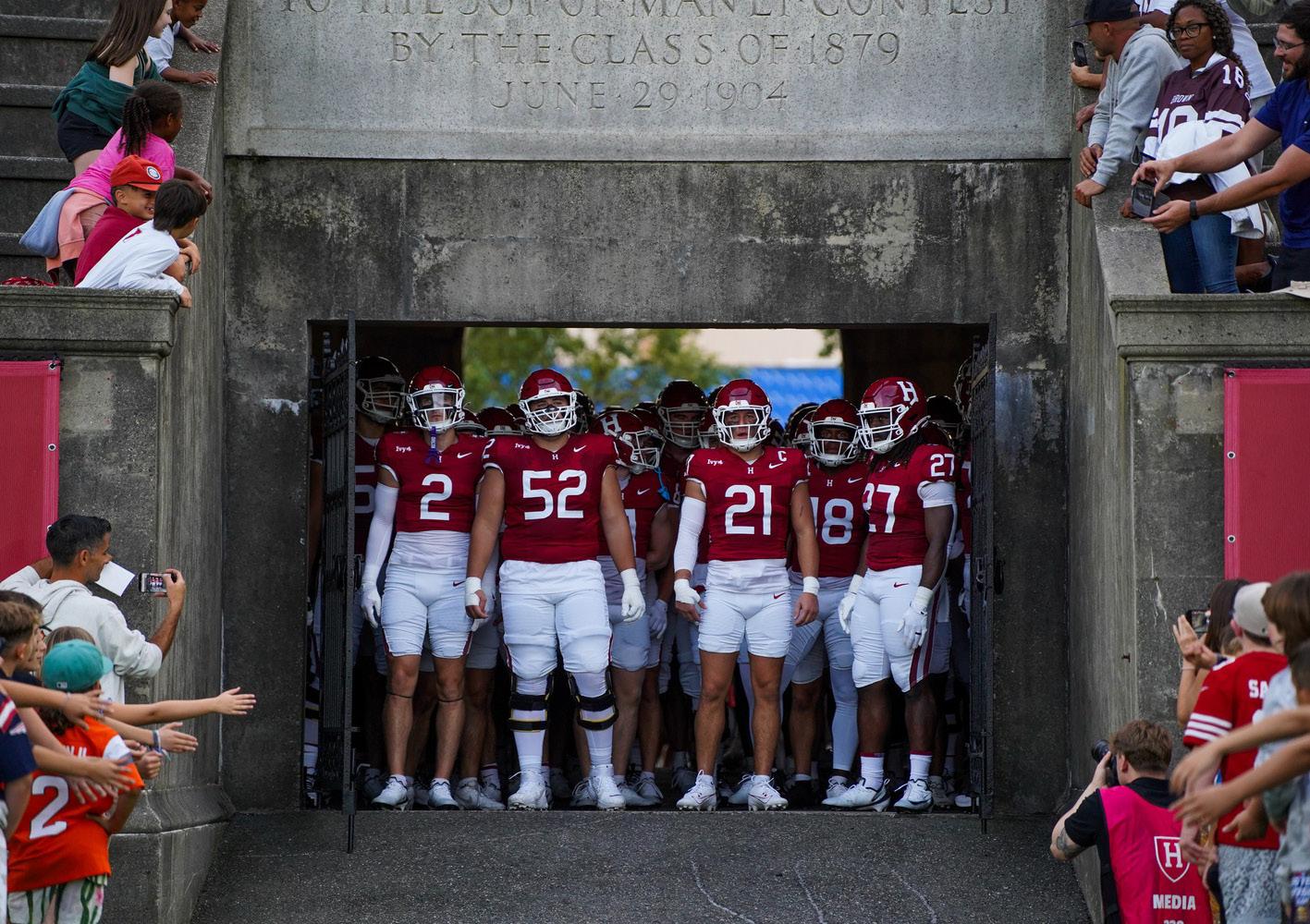
dogs for the past two years. Despite a challenging start to the Big Red’s season, this Friday’s game could mark a competitive matchup for the Crimson. Across the Ivy League, Cornell holds the third highest offensive efficiency and the second highest defensive efficiency — and this week, they’ll hope to piece together the puzzle to get their first win. Offensively, Harvard’s team is as strong as it has ever been, scoring its most points in three games since 1887. Craig has been an all-
star for Harvard and attracted hype as a potential NFL draft prospect. Meanwhile, junior defensive back Damien Henderson got his second pick of the season against Holy Cross, making a name for himself as a key member of the Crimson’s formidable defense.
The team’s formidable performances have caught the eyes of NFL scouts from eleven teams at practices and games — including the Baltimore Ravens and Miami Dolphins at last week’s blowout in Worcester. One group, howev-
er, continues to make an impact without seeing the spotlight. The offensive line, which returned four starters from last year, has yet to give up a sack through three games, and it has given Jaden Craig more time to throw the ball than just about anybody else in the country.
Aurich, who was previously an offensive line coach at Rutgers, praised the line as being a “model of consistency” since the summer training camp — and credited the protection with helping the rest
of the offense play their best.
“That’s a really good feeling to have as a quarterback, when you’re sitting back there and you don’t have to worry about any pressures, any free guys,” Aurich said. But with 10 turnovers from the Crimson’s defense, the offensive line had little time to rest in last weekend’s game. Senior Aidan Kilstrom said Harvard’s coaching staff makes sure that the offensive linemen “keep fresh legs” and are constantly ready to get
back on the field. A quick recovery will be especially critical with one less day between the Saturday and Friday games for The Crimson this week. But Kilstrom said Harvard’s team has been able to stay healthy given their series of blowout performances.
“We just don’t have as many cumulative reps on our guys like so the game being a day closer should not impact us,” Aurich said. Harvard’s defense tops the Ivy League with 10 takeaways, is first in the nation in first downs allowed, and second in opponent third-down conversion rate. Kilstrom said he also finds motivation in the strength
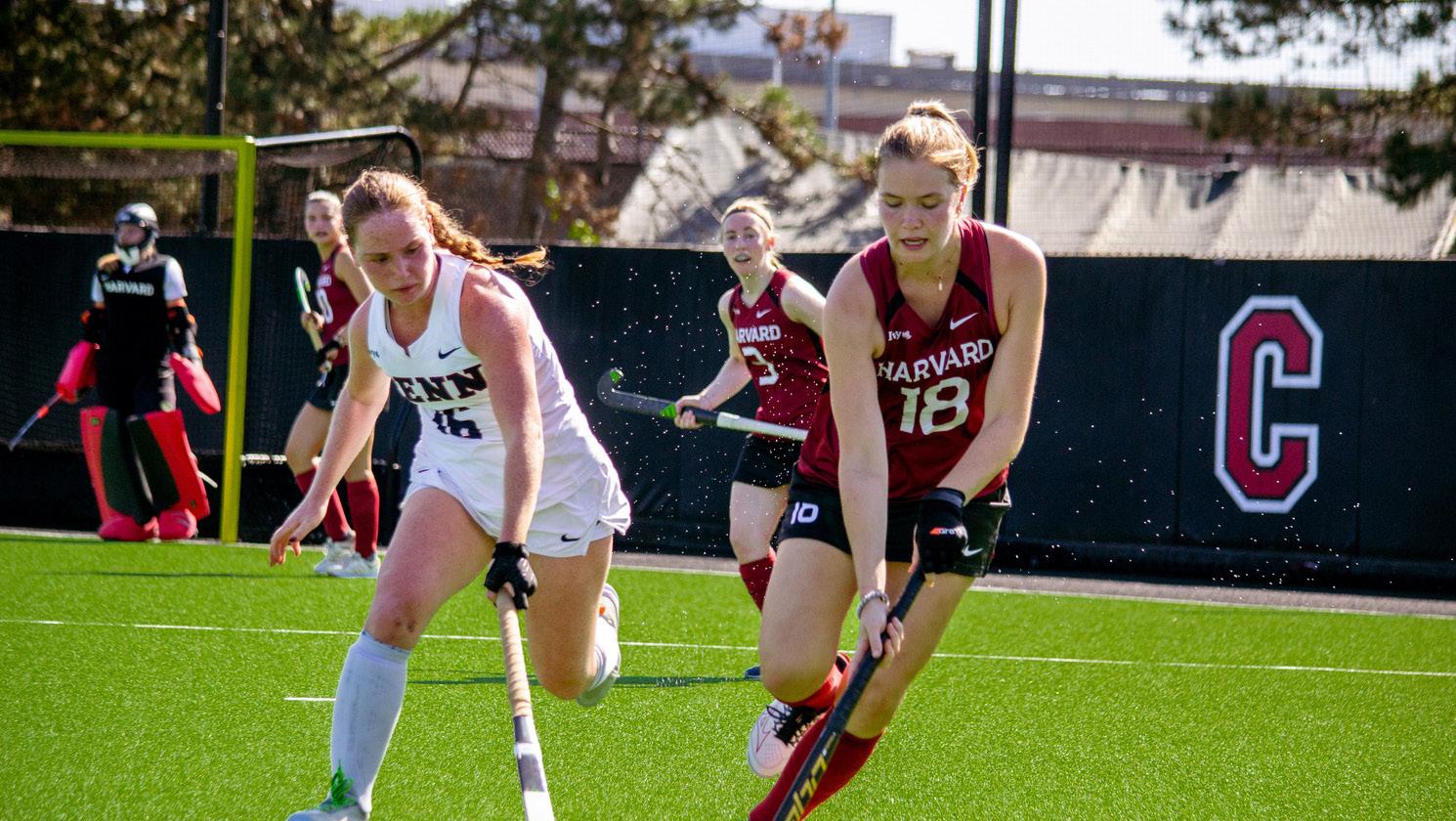
The No. 4 Harvard field hockey team continued its stellar 2025 campaign this past weekend, earning two dominant victories against its Ivy League rival Penn (4-4, 1-2 Ivy) and its crosscity rival Boston University (56, 2-1 Patriot League) to improve to 10-0. After rallying from an early deficit to beat the Quakers 6-1 at Berylson Field on Saturday, the Crimson traveled across the Charles to New Balance Field, where the team thrashed the Terriers in a 7-0 shutout on Monday night. With the pair of wins, Harvard extended the record for the best season start in program history. Now, alongside only Northwestern and the University of Virginia in Division I of the NCAA, the Crimson boasts an undefeated record.
Harvard 6, Penn 1 On Saturday afternoon in Cambridge, the Harvard team demonstrated both resilience and depth during its decisive win over Penn.
After conceding a goal less than two minutes into the game
to Penn’s Philine Klas off of a corner opportunity, the Crimson found itself trailing early. However, the deficit was short-lived, as Harvard earned a corner opportunity of its own. Senior Kate Oliver zipped an insert across the zone, and senior defender Bronte-May Brough ripped off a shot from just inside the circle. The hectic traffic in front of the net served as a screen for Penn’s goalkeeper, so Brough’s ball slammed into the back of the net, evening the score. From that point on, the Crimson’s established utter control. Junior 2024 NFHCA Northeast All-Region First Team honoree Lara Beekhuis had another great look towards the net, dangerously threatening to score as the Quakers failed to clear the ball from their defensive zone. Junior forward Sage Piekarski also had a great offensive rush. The Concord, Mass., native surged ahead of her defender, earning a breakaway. Piekarski made an excellent move right in front of the goal line, but was stopped by Penn’s goalkeeper Ruby de Frees, who stepped up and poke-checked the ball out of play.
A mere minute into the second quarter, the Quakers made an offensive effort of their own,
ringing a shot off of Harvard’s net and earning a corner. Freshman goalkeeper Linde Burger made an excellent save to keep the score locked at 1-1.
However, sophomore Martha le Huray chipped the ball through the air toward Piekarski, who, after expertly corralling the ball out of the air, hustled forward on another breakaway. This time, Piekarski, the Ivy League’s Offensive Player of the Week for the second consecutive week, capitalized on the one-on-one chance, giving her team a 2-1 lead.
One point was simply not enough for the junior, for five minutes later, Beekhuis set Piekarski up for her second goal of the game.
Maintaining the offensive momentum, Beekhuis hammered home her fourth goal of the season just after nabbing the assist. In a span of minutes, Harvard had rattled off three goals and stretched the lead to 4-1 entering the halftime break.
The Crimson did not take its foot off the gas in the second half of play. In the third quarter, sophomore forward Emily Bronckers tallied her first goal of the season, thanks to another helper from Beekhuis. The Laren, Netherlands native made a
stellar cross, drawing the corner opportunity. Le Huray inserted the ball toward Beekhuis, who made the initial shot. Bronckers, in the perfect rebounding position, tipped the ball in.
In the final fifteen minutes, le Huray added the finishing touch, tapping home a feed from captain Kitty Chapple to nab the Crimson’s sixth goal of the afternoon.
Other than the first few minutes, Harvard dominated the entire game, keeping the Quakers to just six shots during the contest. Notably, the Crimson’s lockdown defense kept Penn to just one shot during the second half.
Comparatively, Harvard fired off 18 shots during the game, 14 of which found the net, showcasing a true display of offensive grit and precision.
Harvard 7, Boston University 0 Merely two days later, under Monday night lights, Harvard delivered another commanding win over the Terriers to reach double digits in the win column.
Although Boston opened the game with a few penalty opportunities, the Crimson lit up the scoreboard first. Le Huray
fired a shot towards the Terriers’ goalkeeper. Piekarski deftly deflected the ball into the cage, giving Harvard a lead in the first quarter. Le Huray had a particularly notable game against Boston. During the contest, the Teddington, UK native scored two goals and tallied three assists, tying the program’s record for the most assists in a single game.
Five minutes into the second quarter, Bronckers notched her second goal of the week, making it 2-0 in favor of the visiting team. 17 seconds later, le Huray poked in a quick strike to tally Harvard’s third goal.
In a flurry of offensive action, le Huray struck again four minutes later, capitalizing on an assist from freshman Rosa Kooijmans. Going into the half, the Crimson had created a dominant 5-0 cushion.
Harvard maintained possession of the ball throughout the second half, keeping the Terriers’ defensive unit busy under pressure.
Piekarski tallied her eighth goal of the season and second of the night early in the third quarter on a beautiful assist from Brough. The junior’s goal was followed quickly by Beekhuis who sent a powerful shot home
off a le Huray corner insertion to close out the scoring at 7-0. Throughout the contest, the Crimson outshot Boston 1711. Much like its game against Penn, Harvard’s incredible defense, backed by seniors Brough and Marie Schaefers, held the Terriers to just three shots on net during the entire contest. With its record-breaking 10-0 start, Harvard now sits firmly amongst the nation’s top teams. So far, the Crimson has scored 36 goals this season, keeping its opponents to just six. The 30 goal differential is a testament to both Harvard’s successful offense, but also the incredible discipline showed by the teams’ defense. Next up, the Crimson will travel to Ithaca, NY, to take on Cornell (8-1, 2-1 Ivy) on Saturday at 12:00 pm EST. The matchup will be crucial for Harvard, which aims to extend its unbeaten streak as it continues through its conference schedule. The Big Red has only lost once this season, to Brown, and will undoubtedly strive to upset the visiting Crimson. Tune
isabel.smail@thecrimson.com
“They
“Probably
Really proud of the effort,” he added. In front of a packed and rowdy Jordan Field crowd of over 1,500 Harvard came out swing
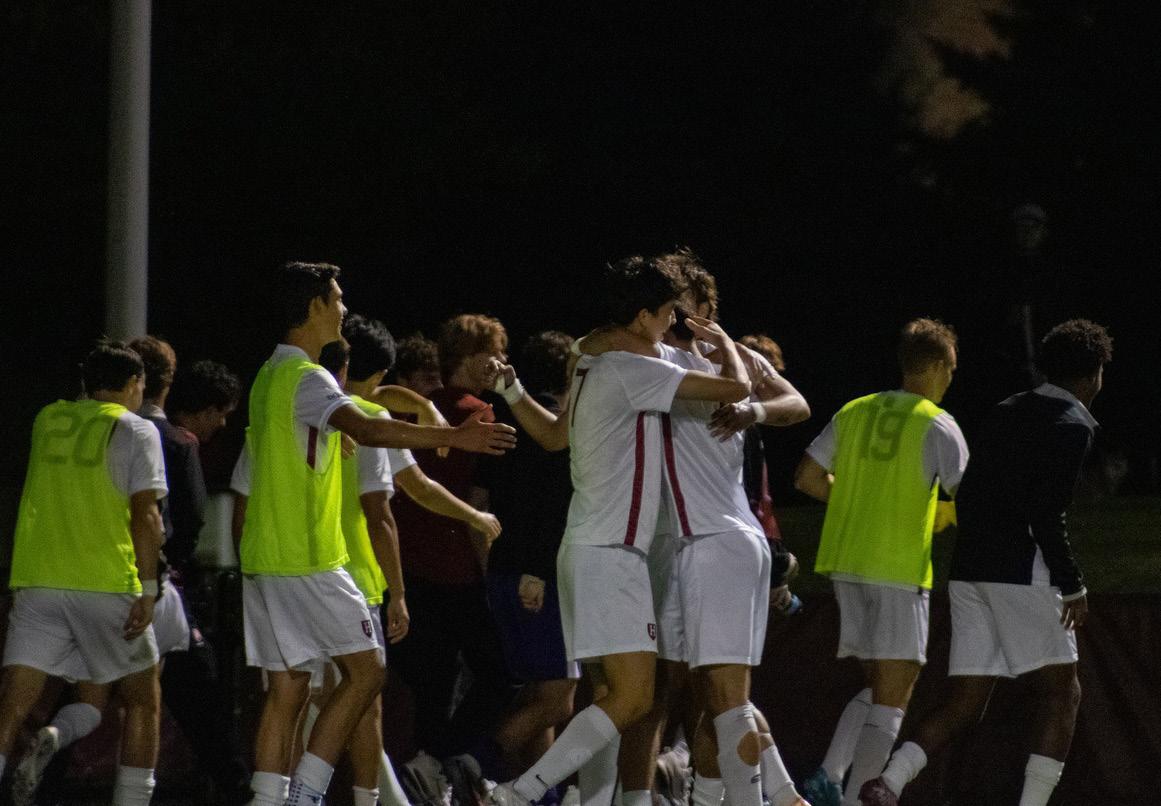
able to
ty throughout, with the teams combining for a total of 22 fouls.
“We’ve deserved the result. It was hard-earned. Our guys put in a ton of miles and a ton of tracking,” Shapiro added.
In the earlygoing, Harvard had opportunities to score in the 17th and 20th minutes, with junior forward Andreas Savva nearly missing the target twice, including a shot that just flew over the crossbar. As the first half wound to a close, senior midfielder Matus Vician directed a cross from the left side of the field in Harvard’s last attack of the frame.
Limited in its opportunities, the Catamounts finally had a chance in the 56th minute. However, a diving save from senior goalkeeper Lucian Wood kept the game scoreless, underscoring Havard’s defensive mentality throughout the night.
“I think it was commitment from all 11 to do the work on the defensive side of the ball,” Shapiro said. “Defending is attitude and mentality, discipline
and technique. But the attitude’s gotta be first and I think the attitude was excellent.” In the 81st minute, a streaking Savva had one last opportunity to score, with the Vermont goalkeeper in front of him. With two defenders chasing from behind, he tapped a left-footed shot just wide of the goal, meaning that the game would end scoreless.
“We needed an energy boost, and I think this is something we can step on and build from,” Shapiro said. On Saturday, the Crimson will return to Jordan Field to take on its archrival Yale. Over the last five contests between the rivals, Harvard holds the edge, boasting a 3-1-1 record. Despite the recent history, the team remains determined to be unrelenting this weekend.
“Our guys will be excited, motivated, and really eager to get Yale here on Saturday night.”

BY MAE T. WEIR AND GRACE E. YOON —CRIMSON PHOTOGRAPHERS
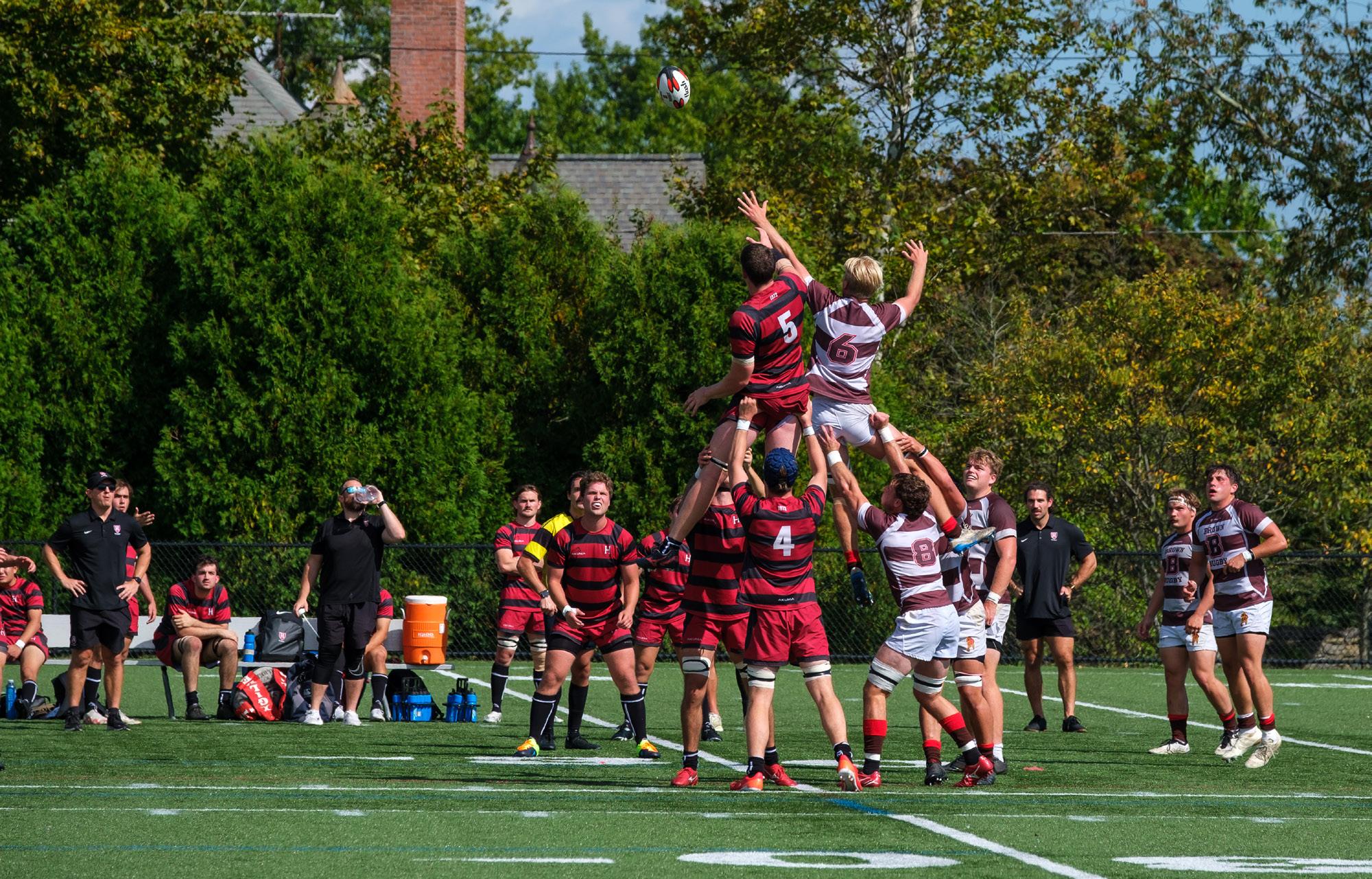
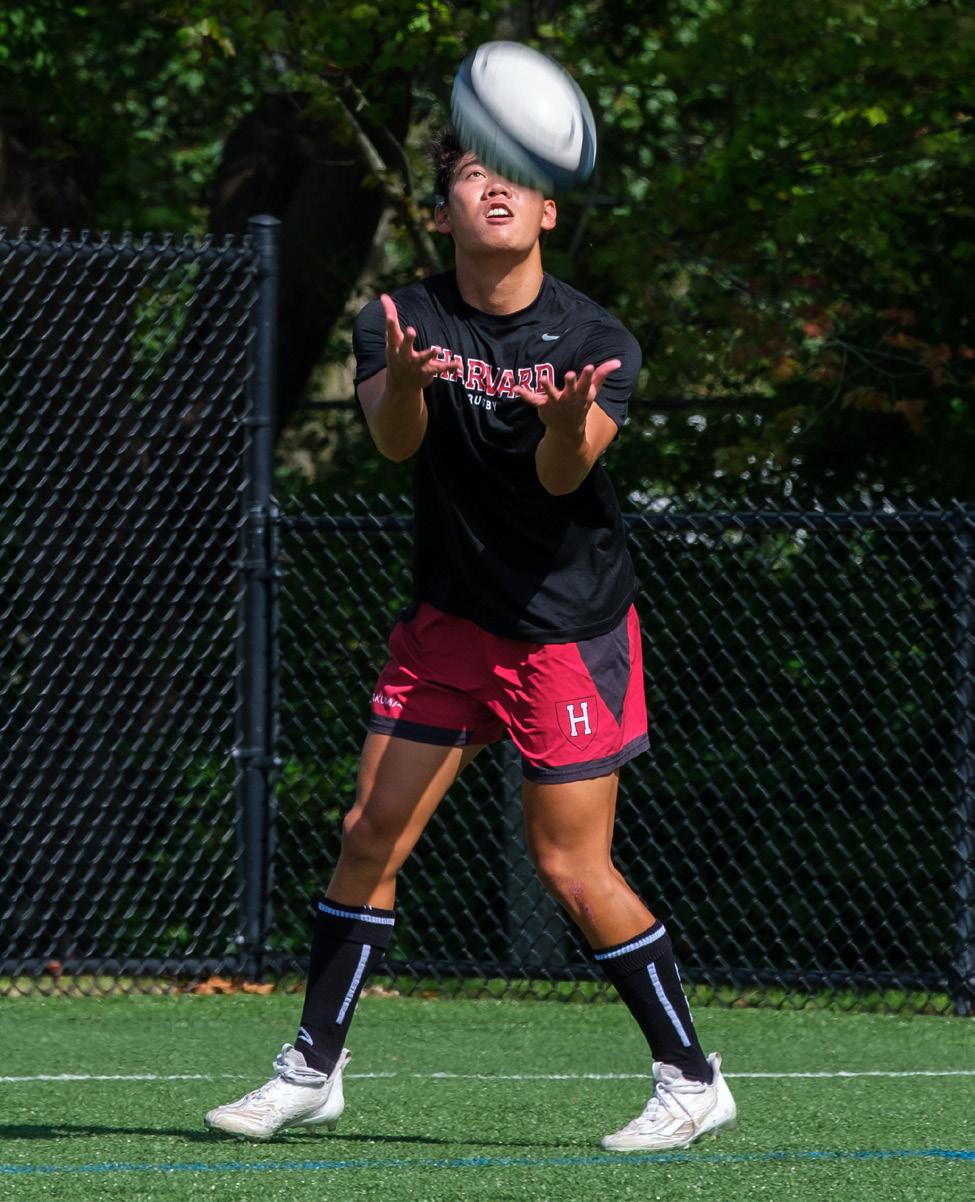
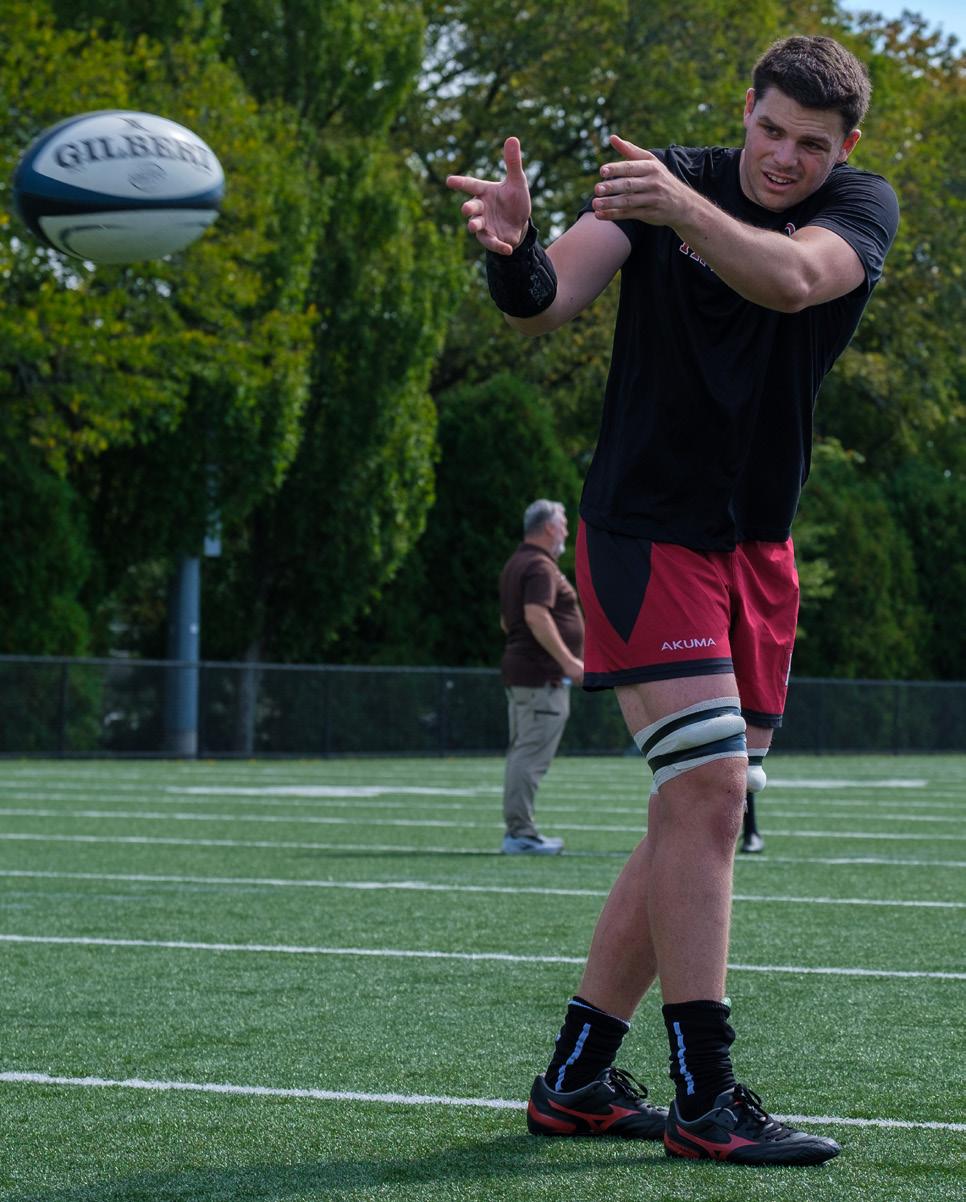

GAME DAY. The Harvard Rugby Football, founded in 1872, is the oldest collegiate men’s rugby team in the country. With athletes drawn from around the world, the team is defined by its unity and determination on and off the field. On Sept. 27, the team played a match against the Brown University Men’s Rugby team. Though Harvard lost 106-0, the team’s persistence inspired respect from both spectators and opponents.
